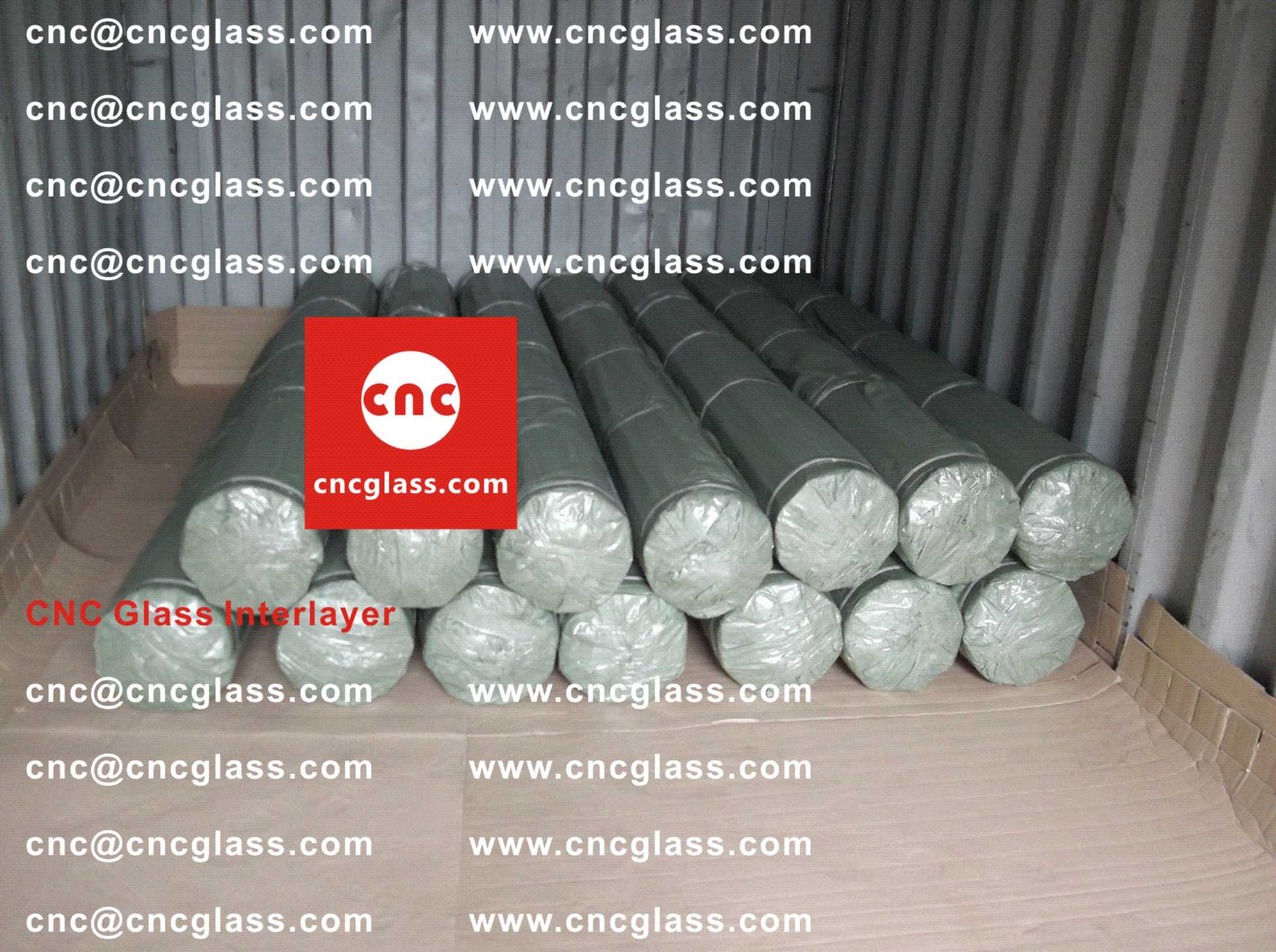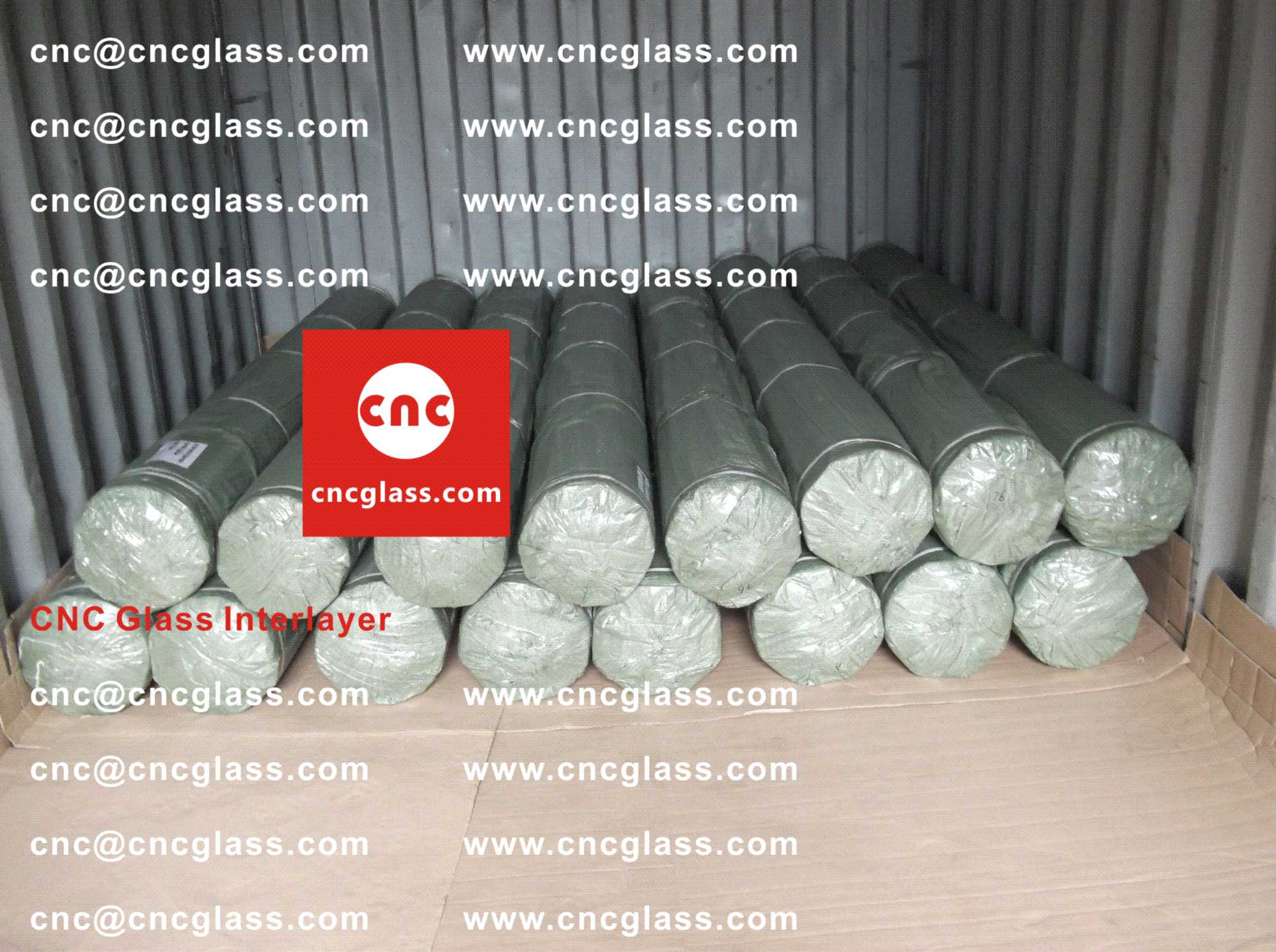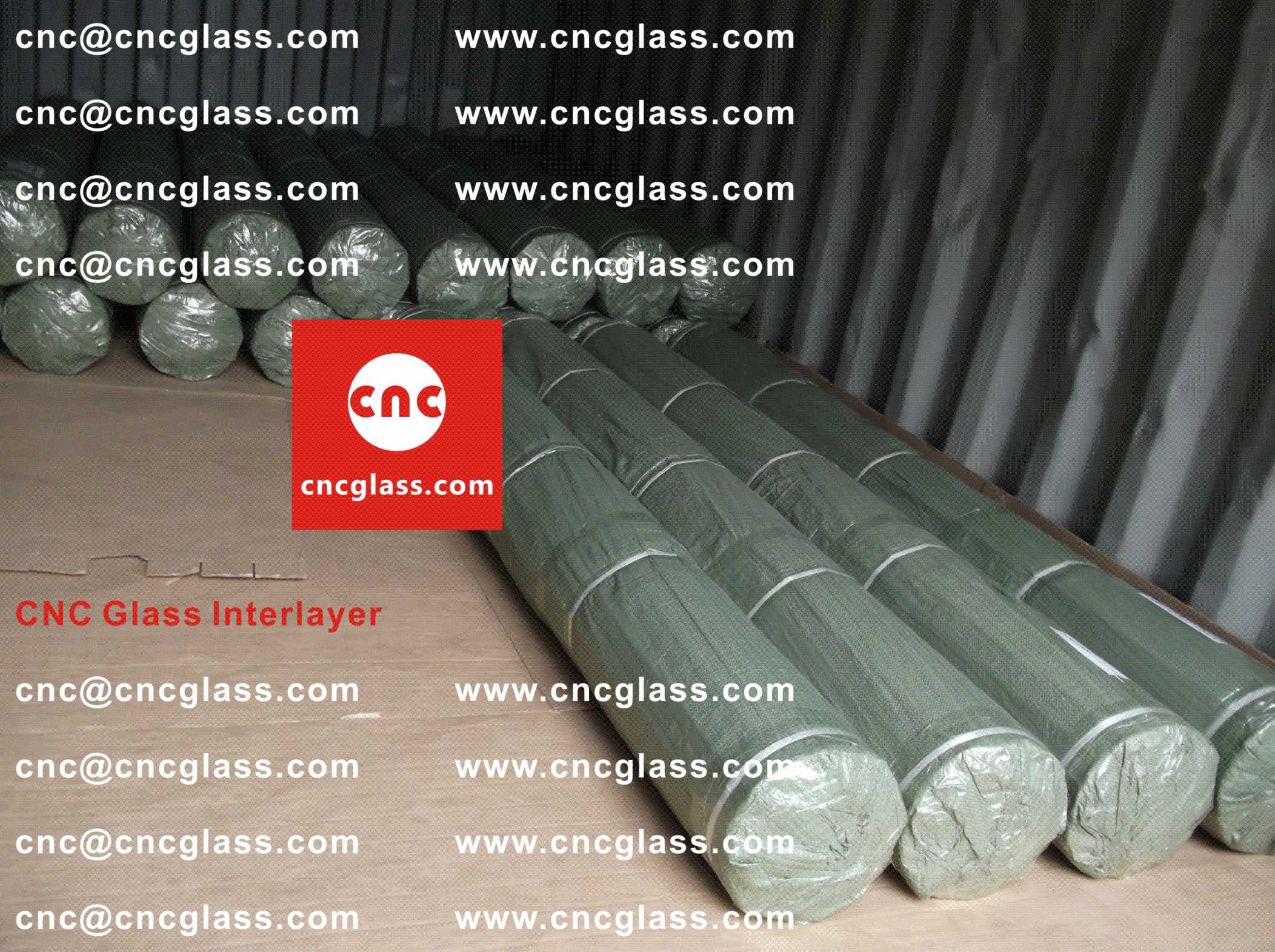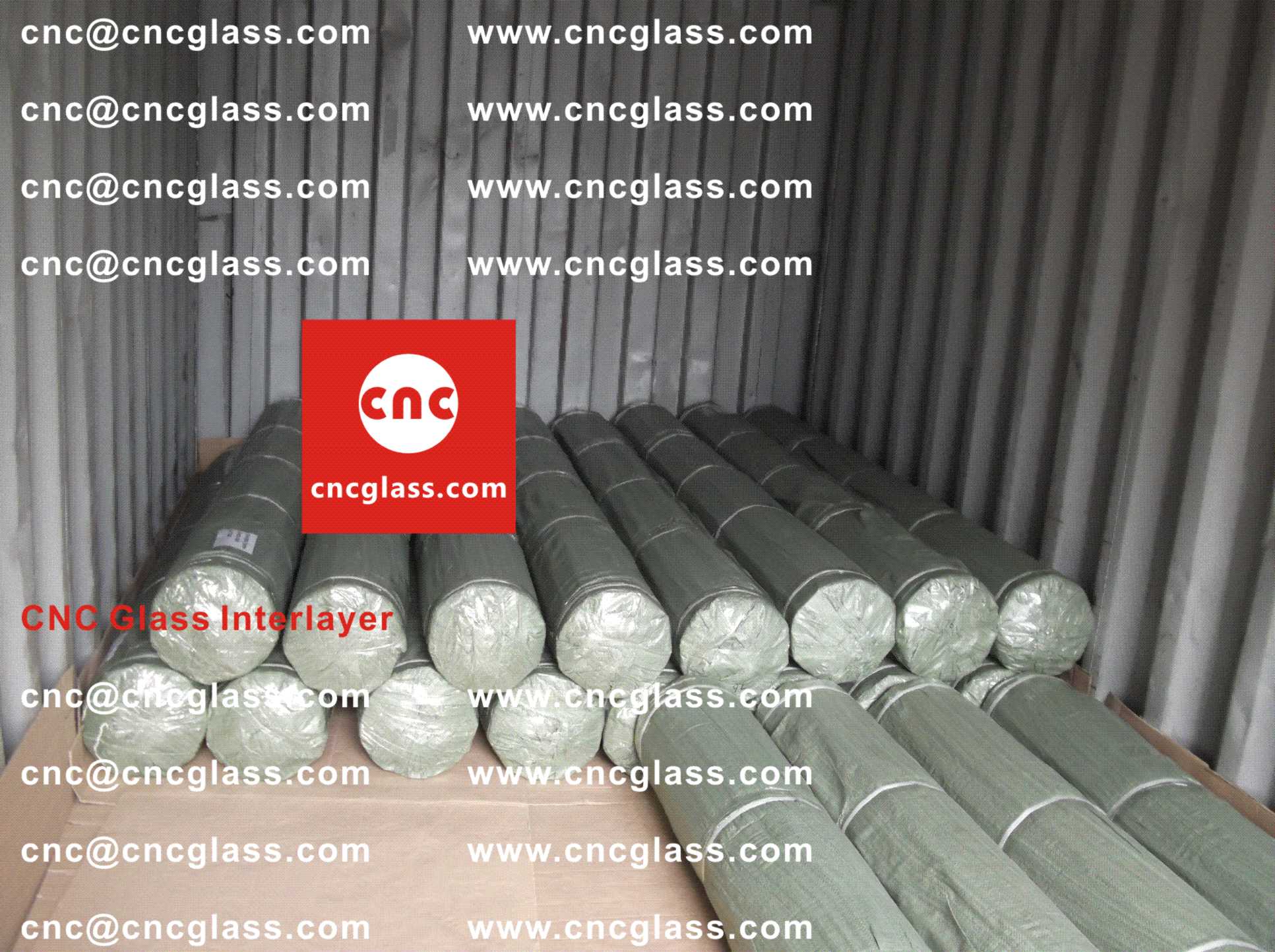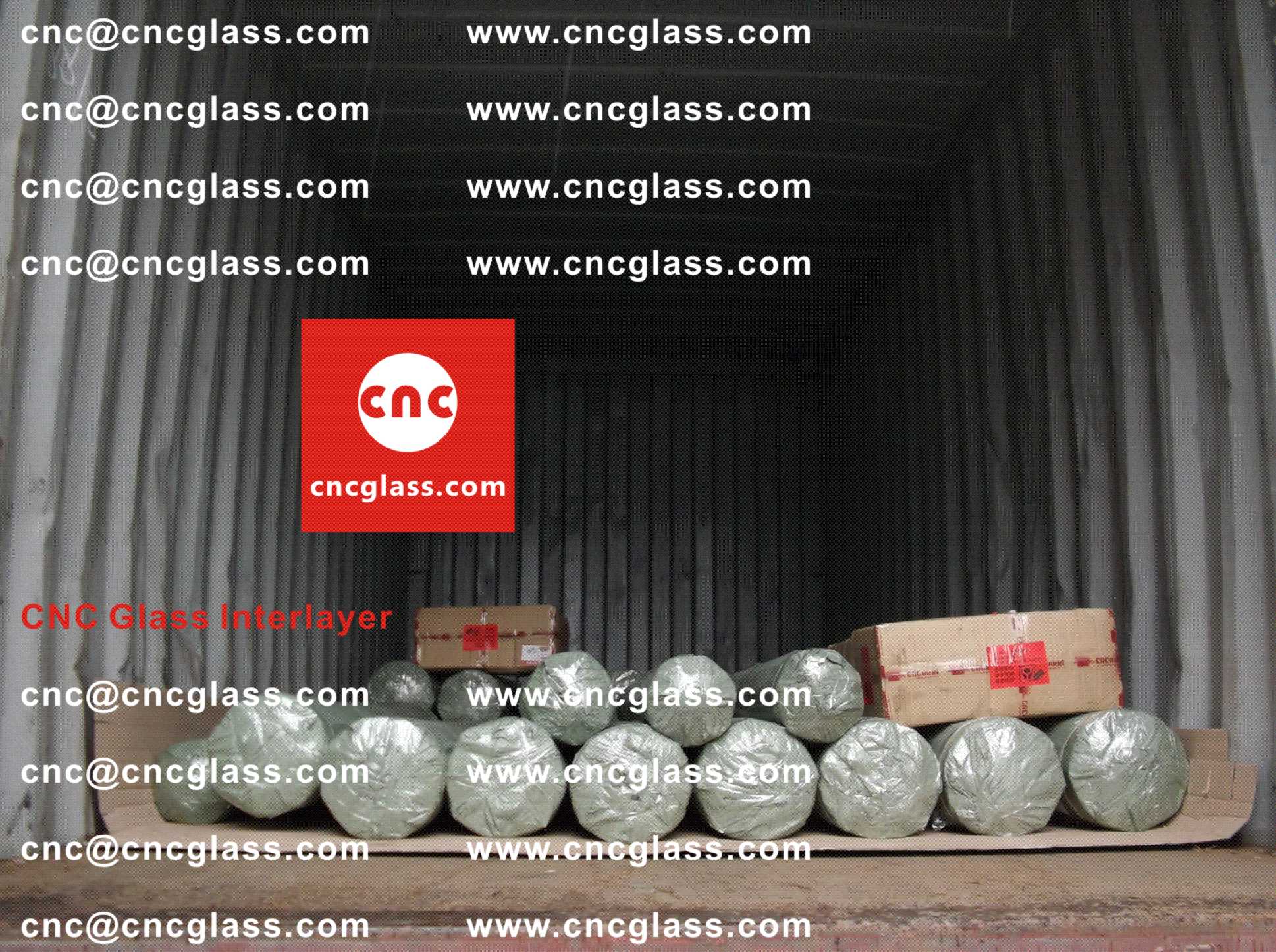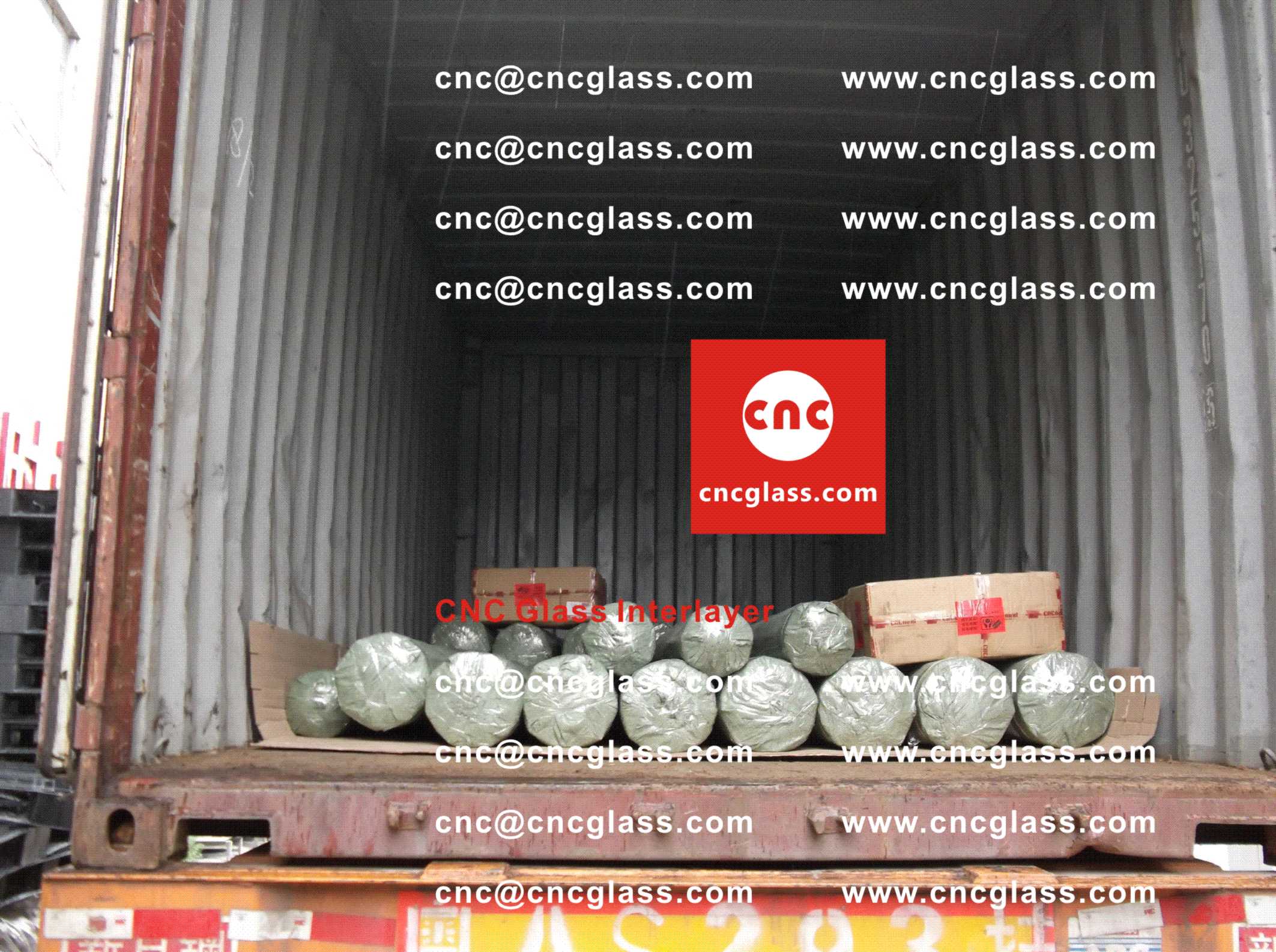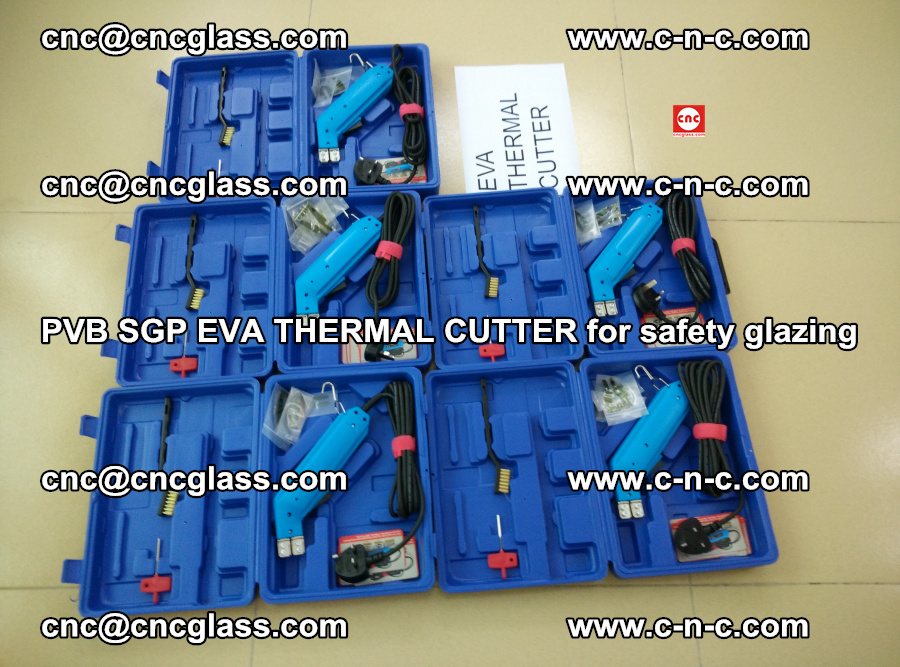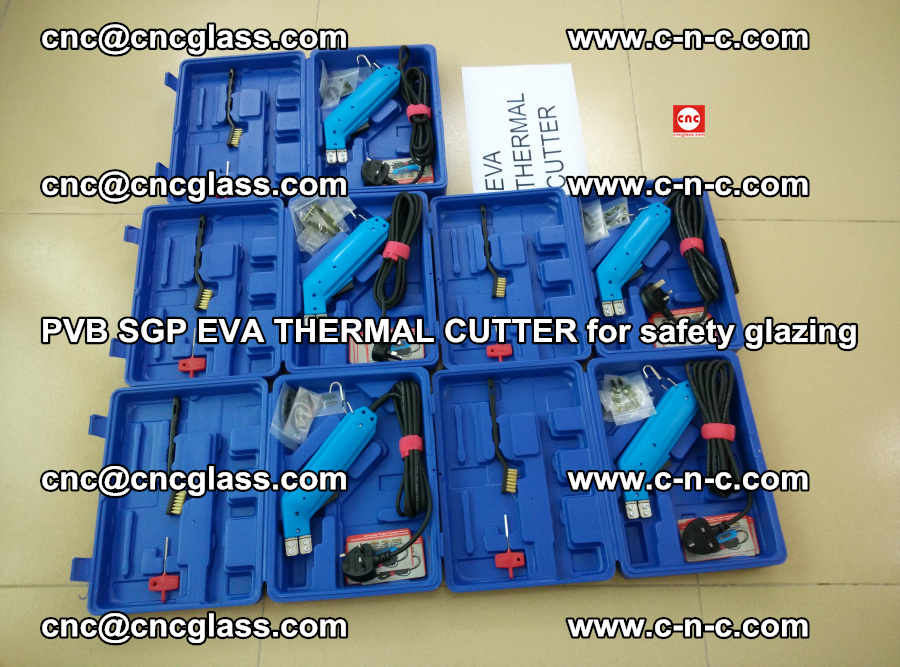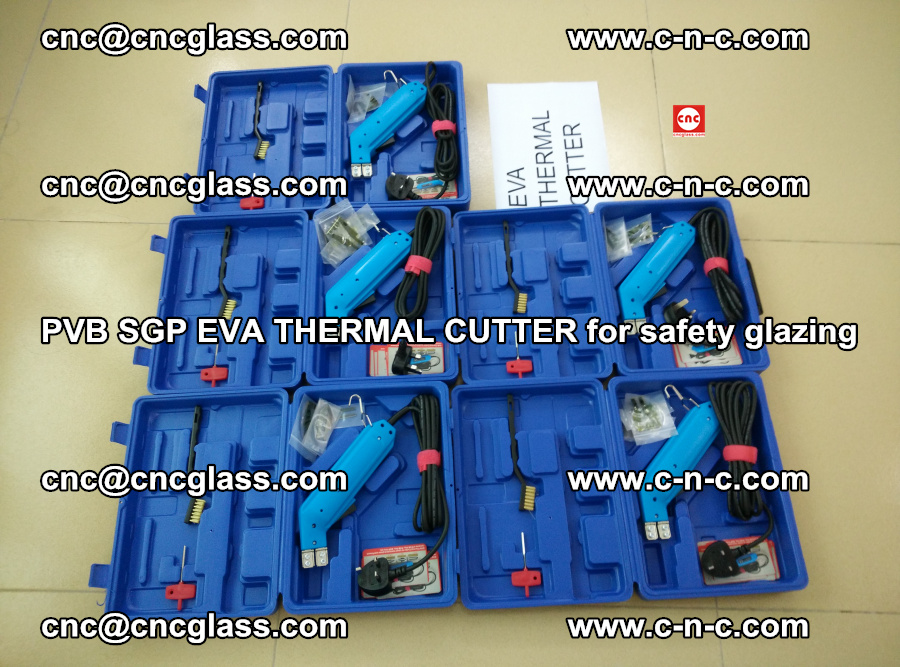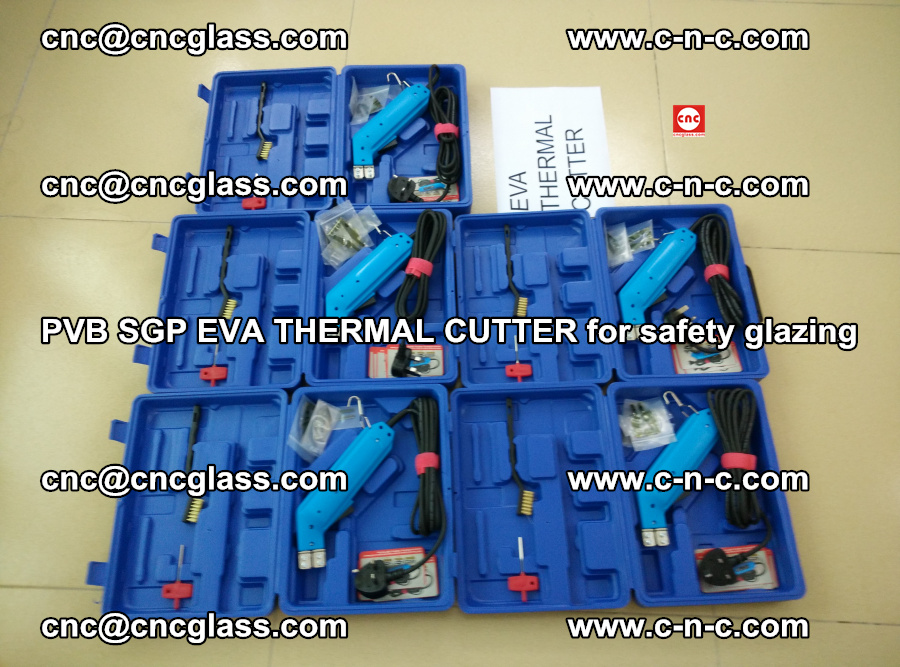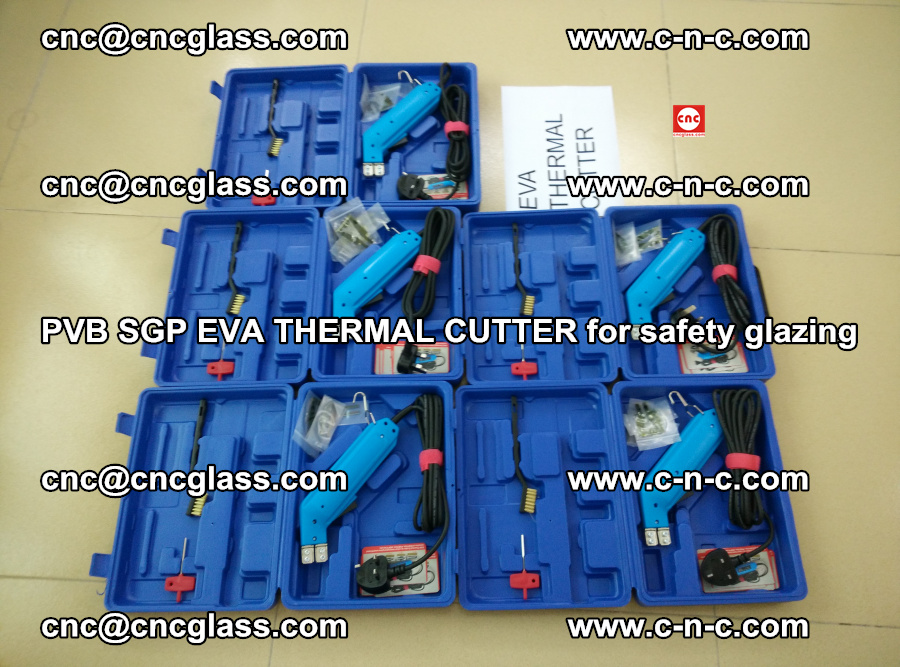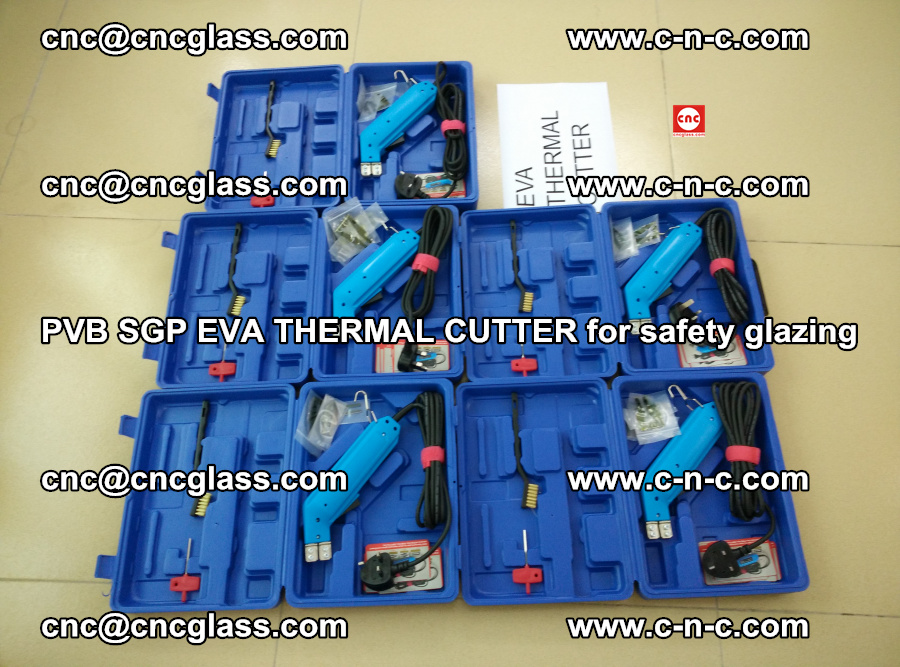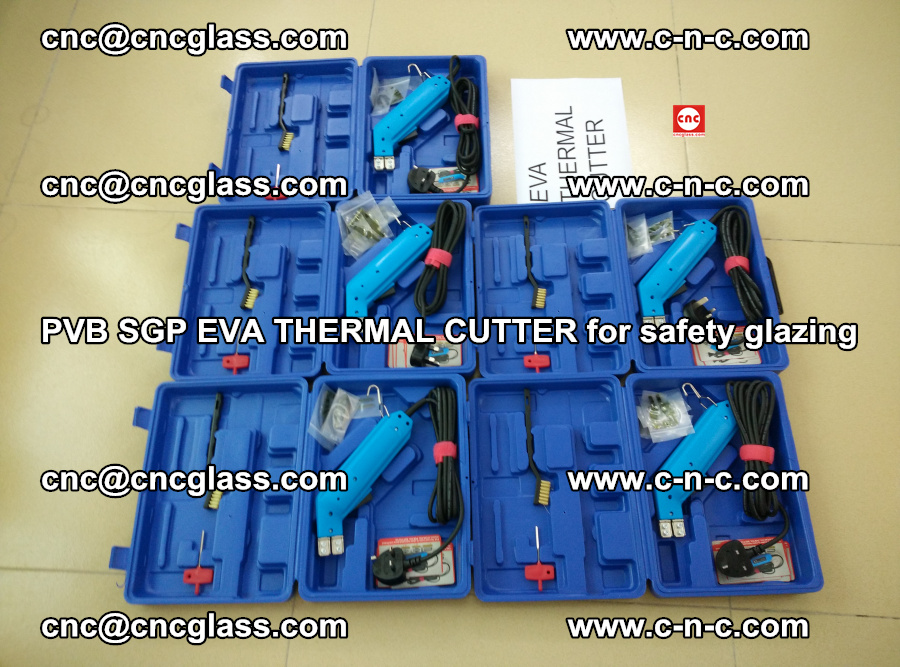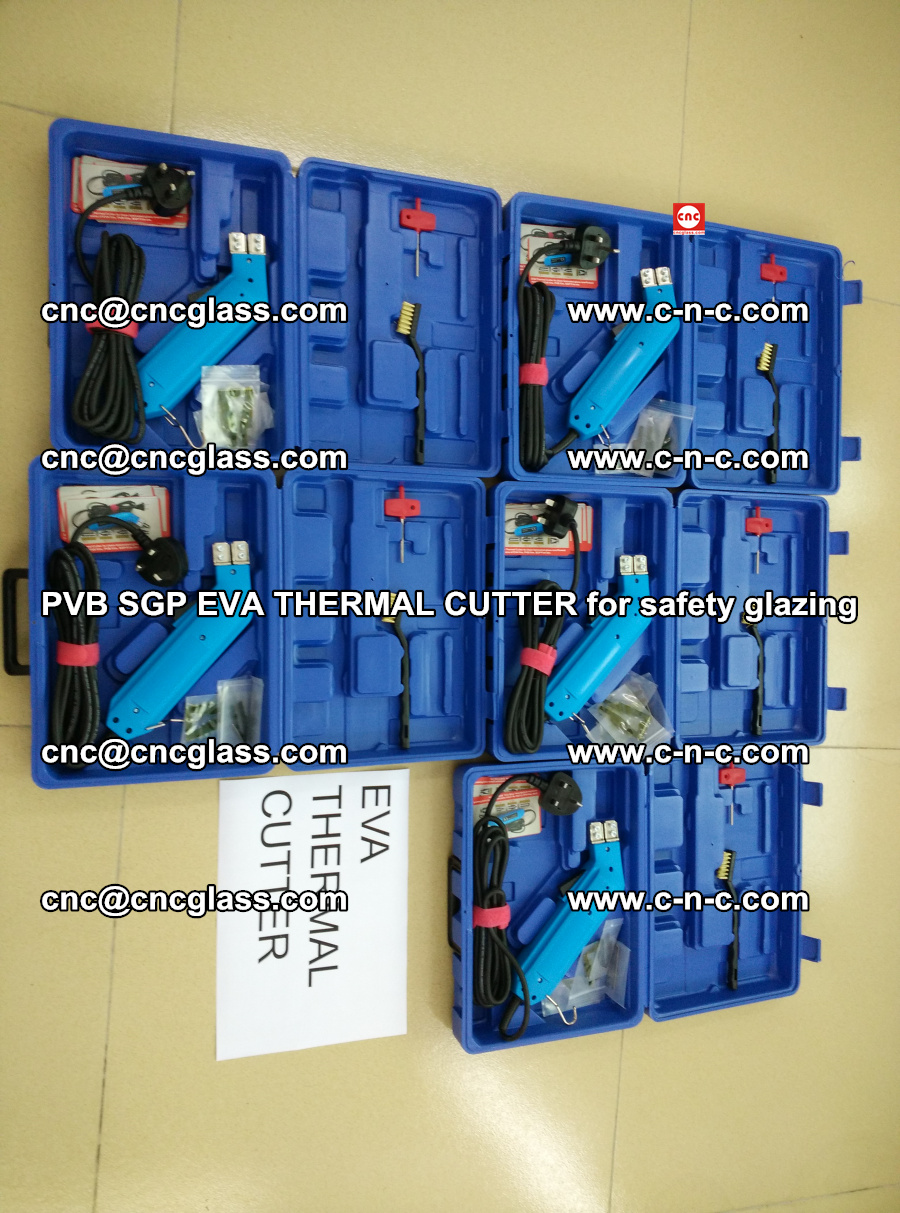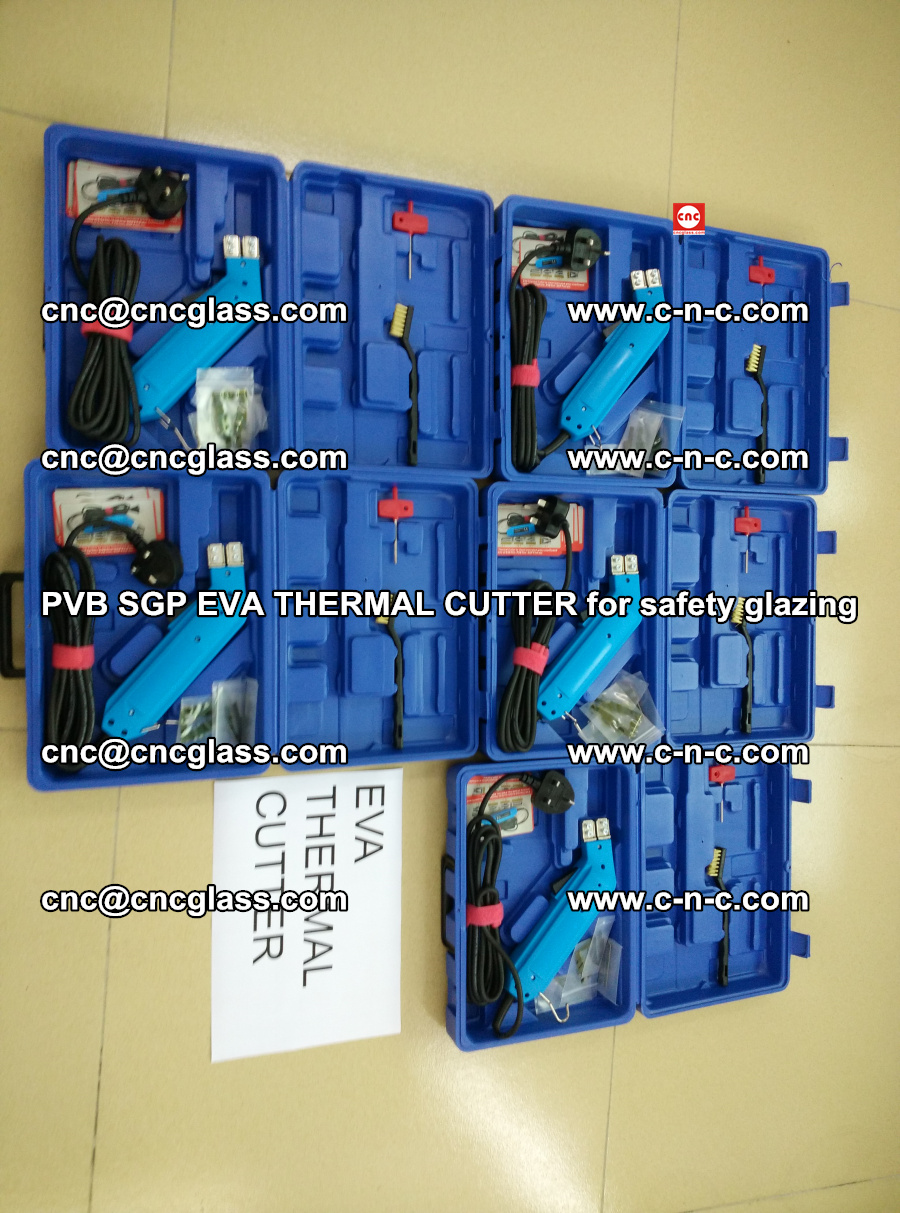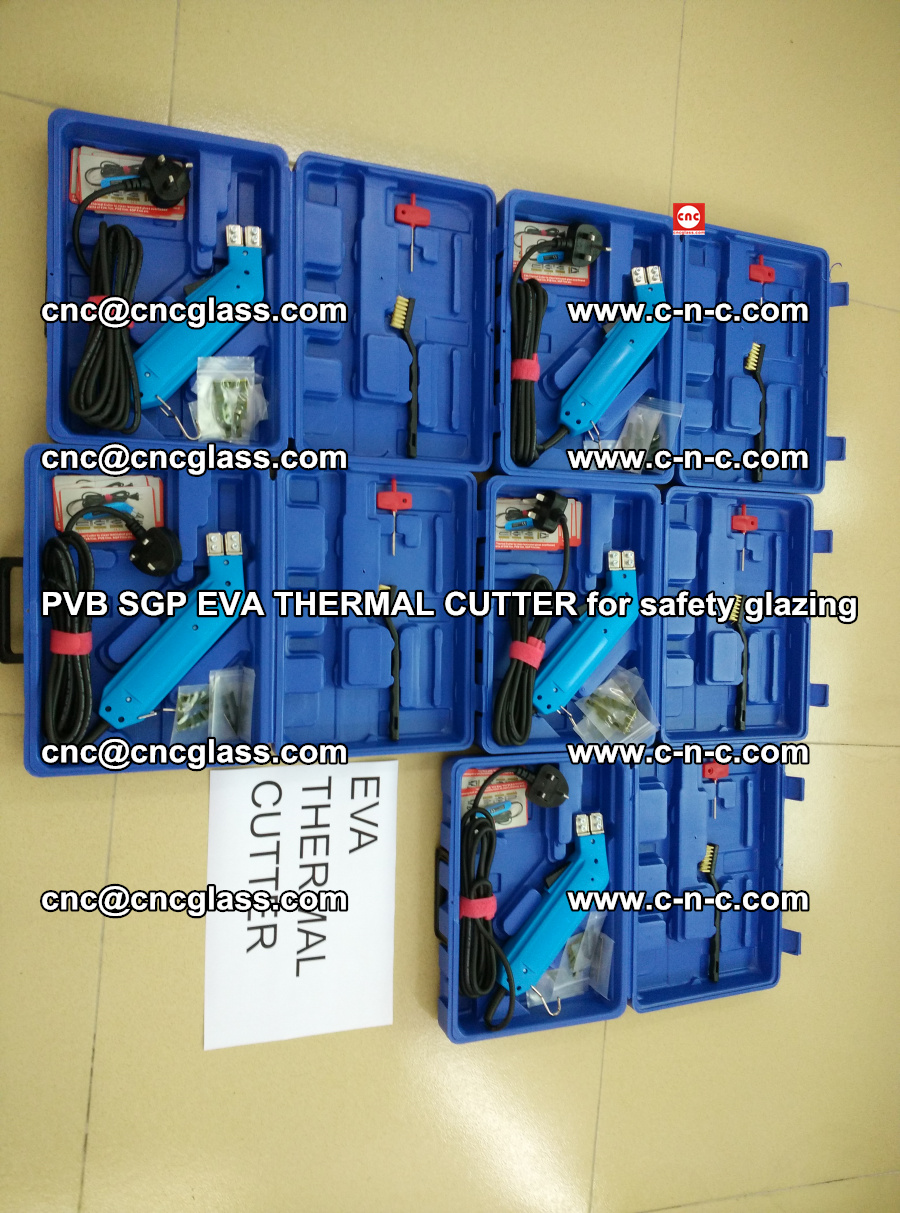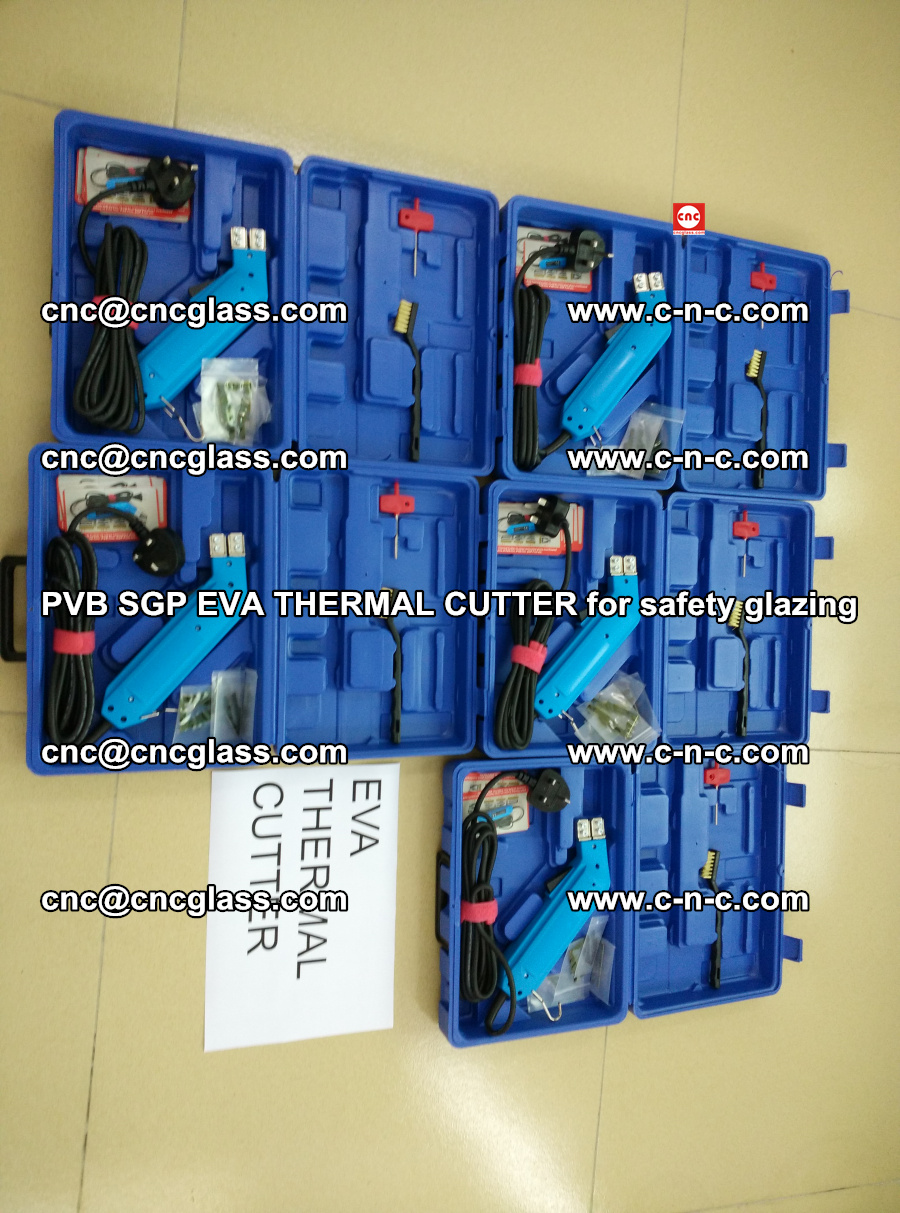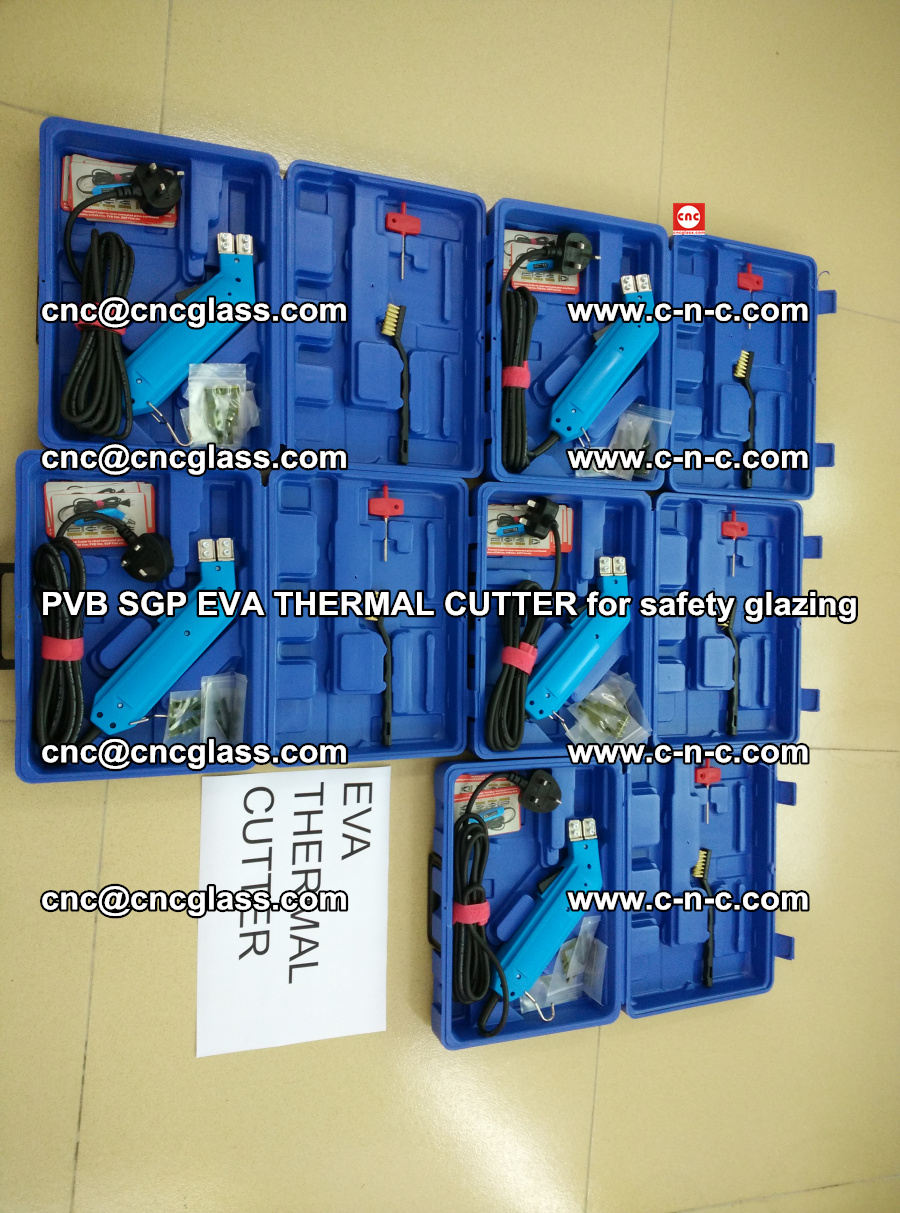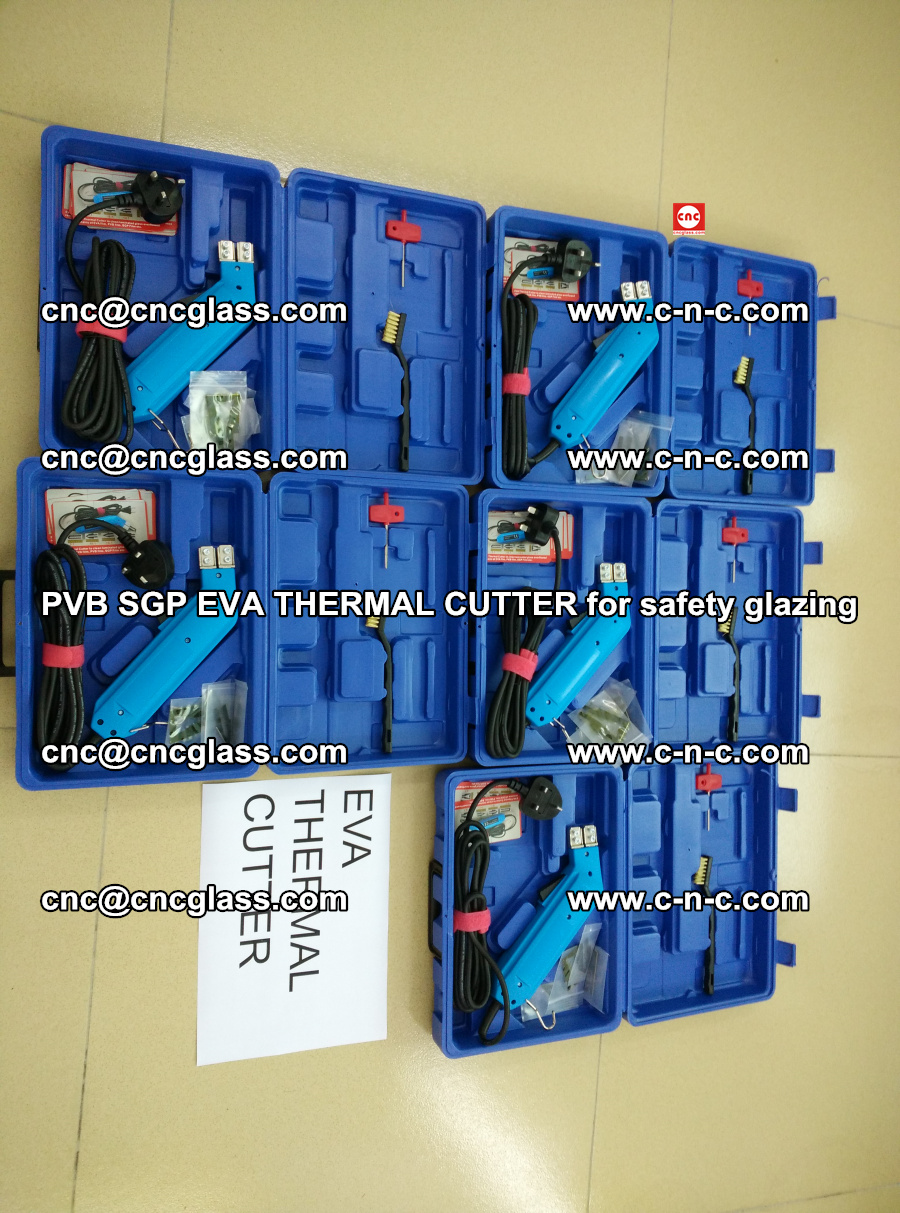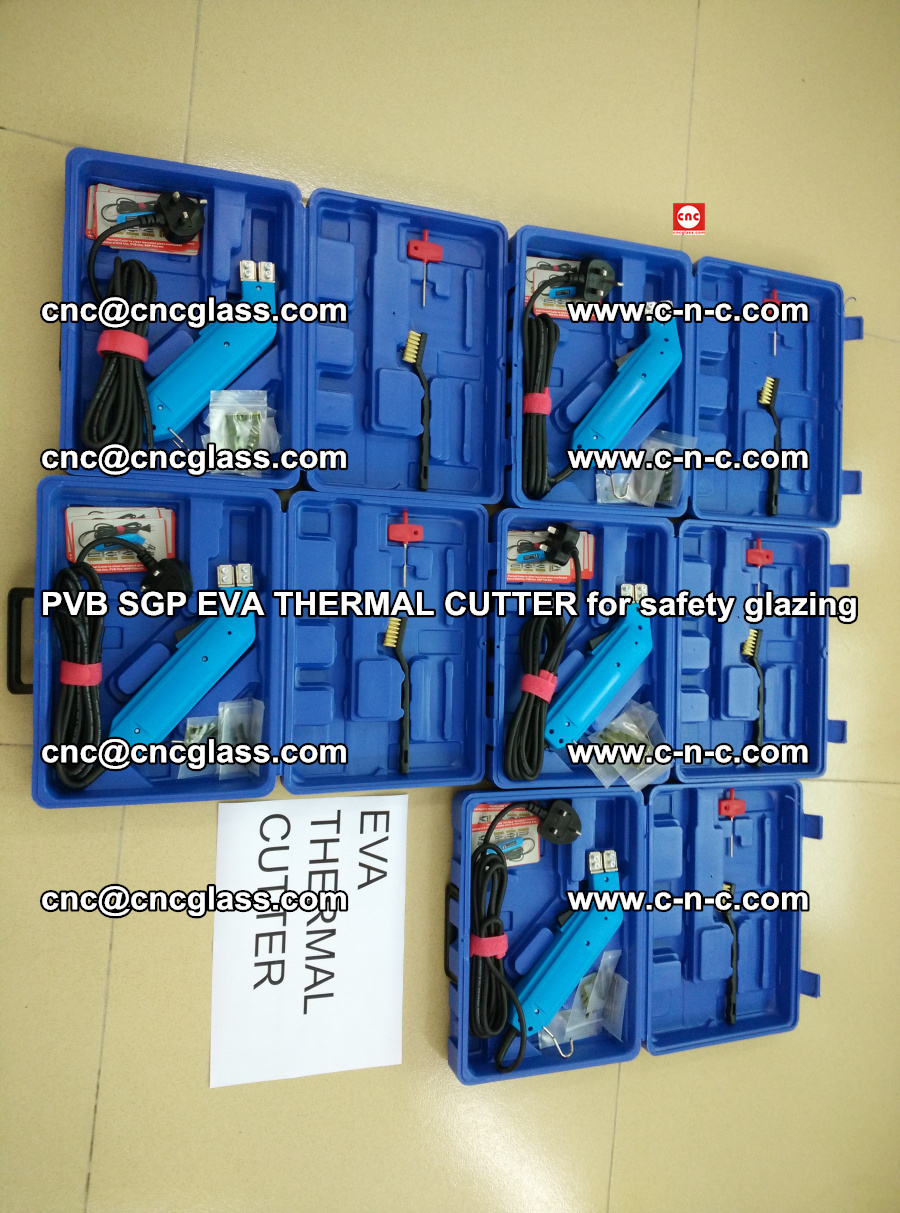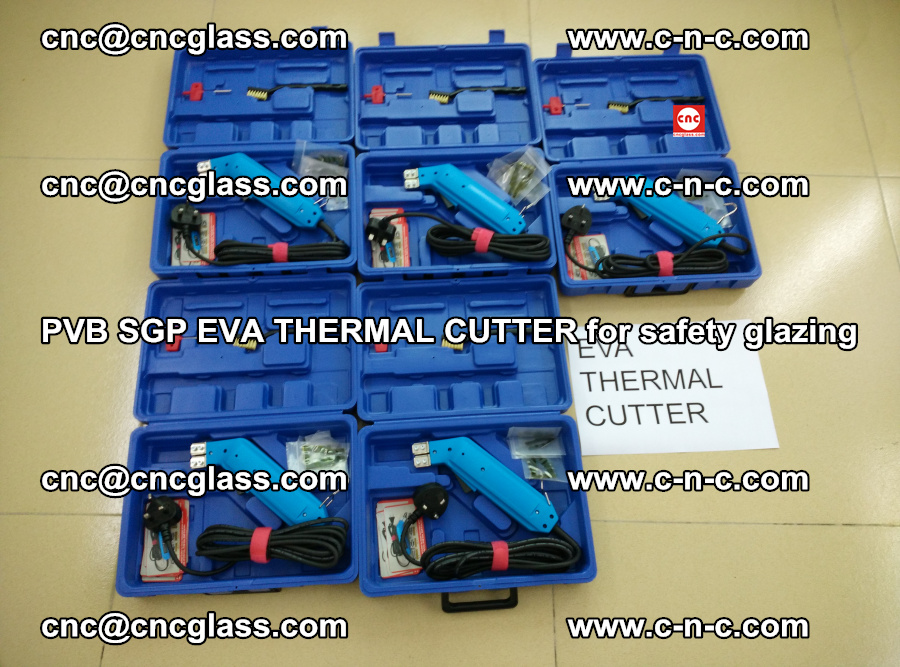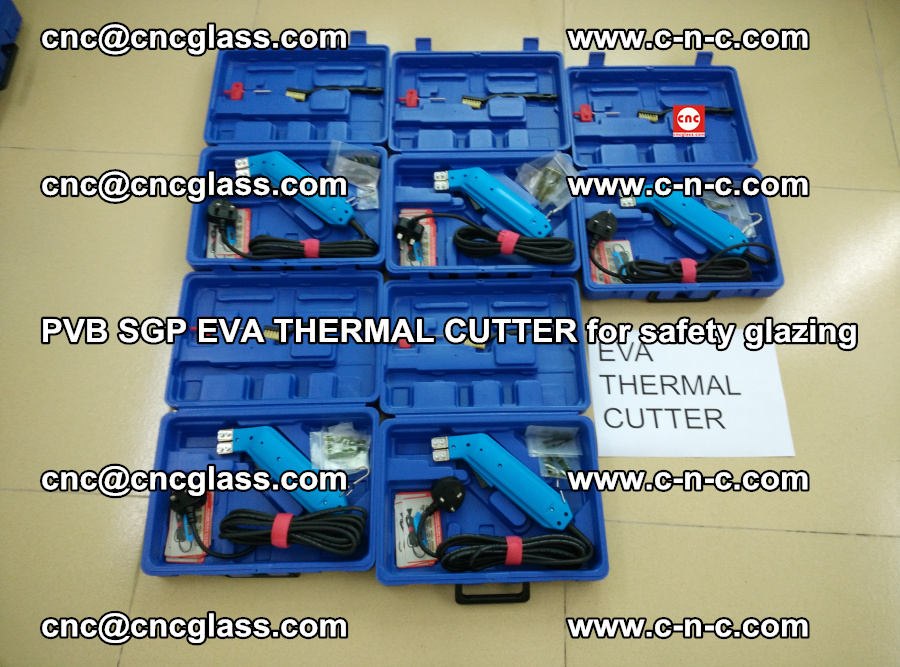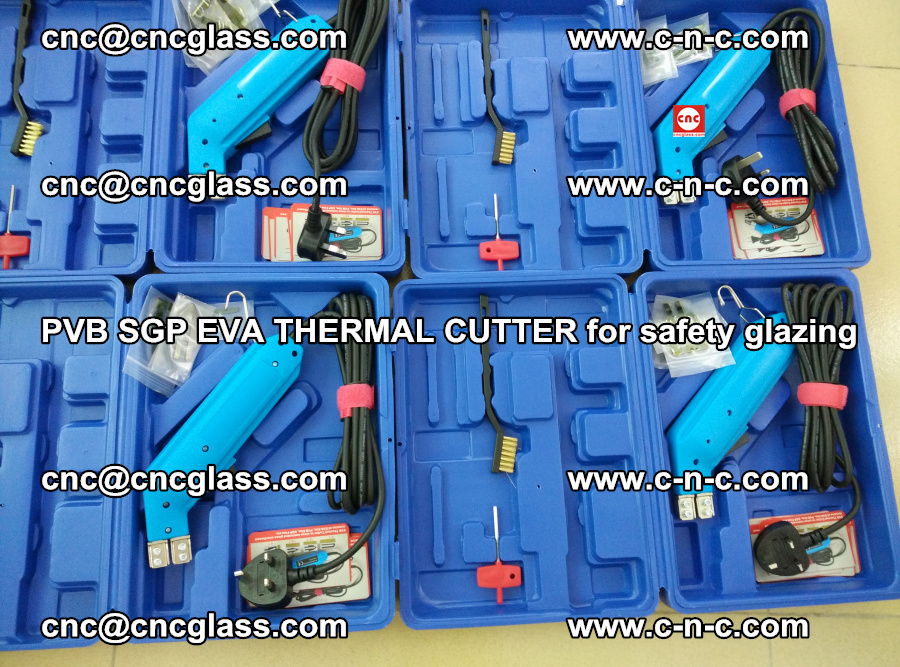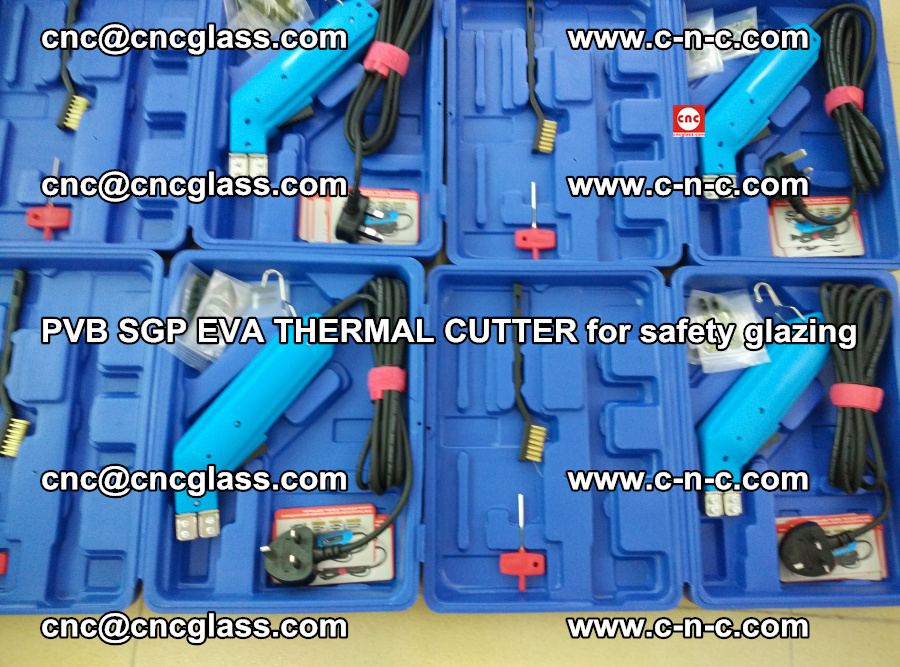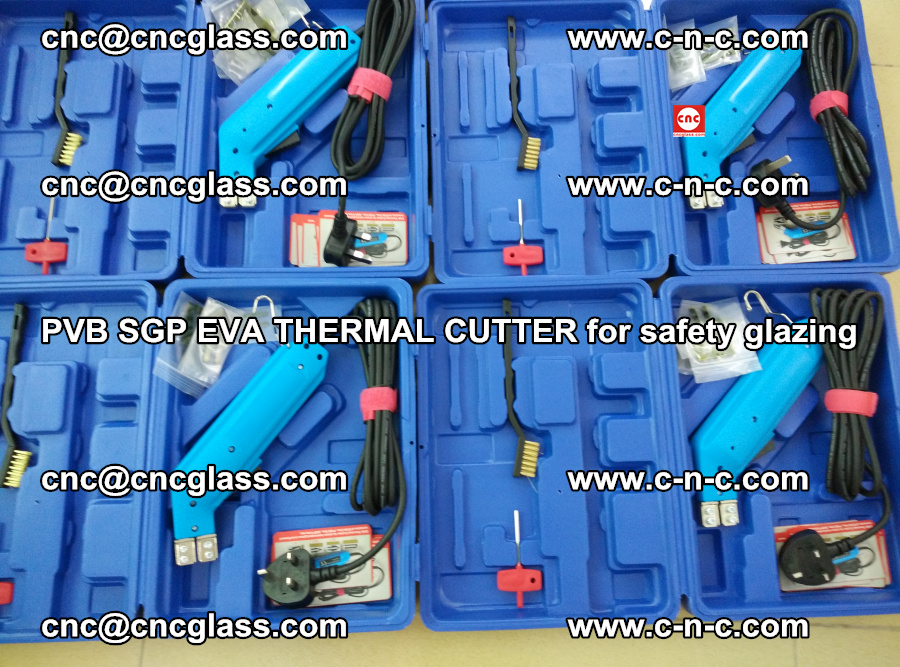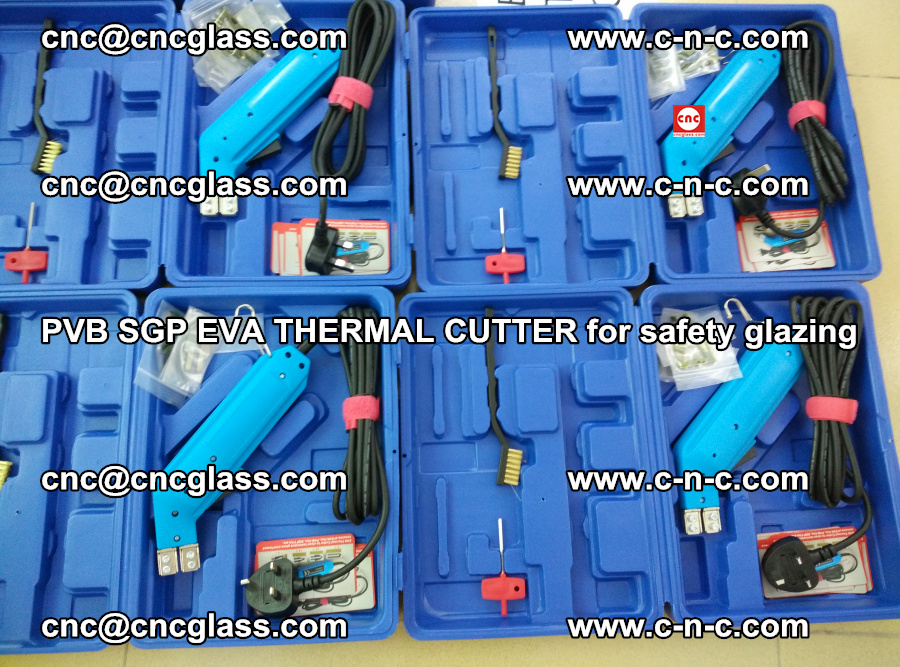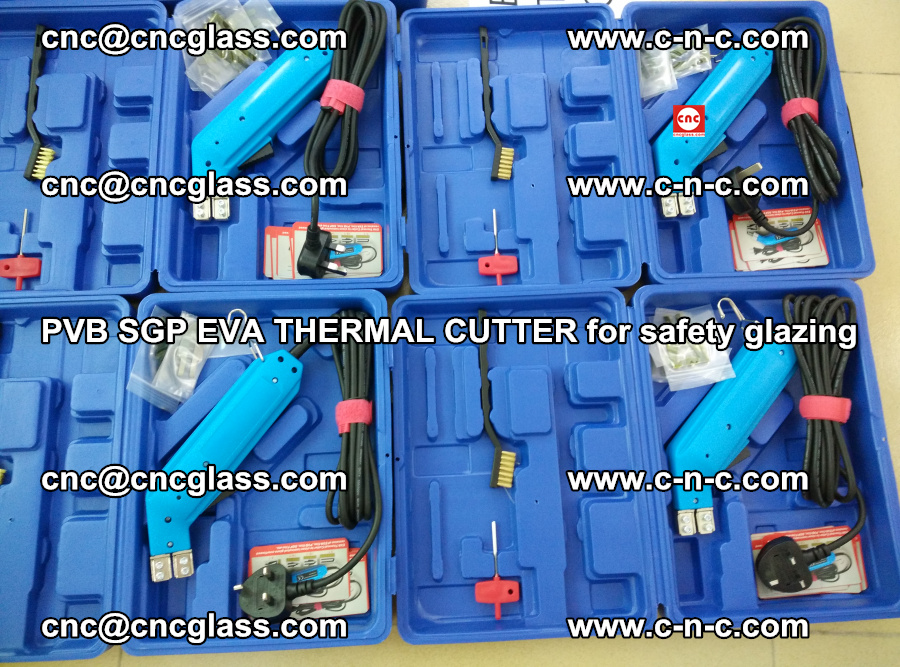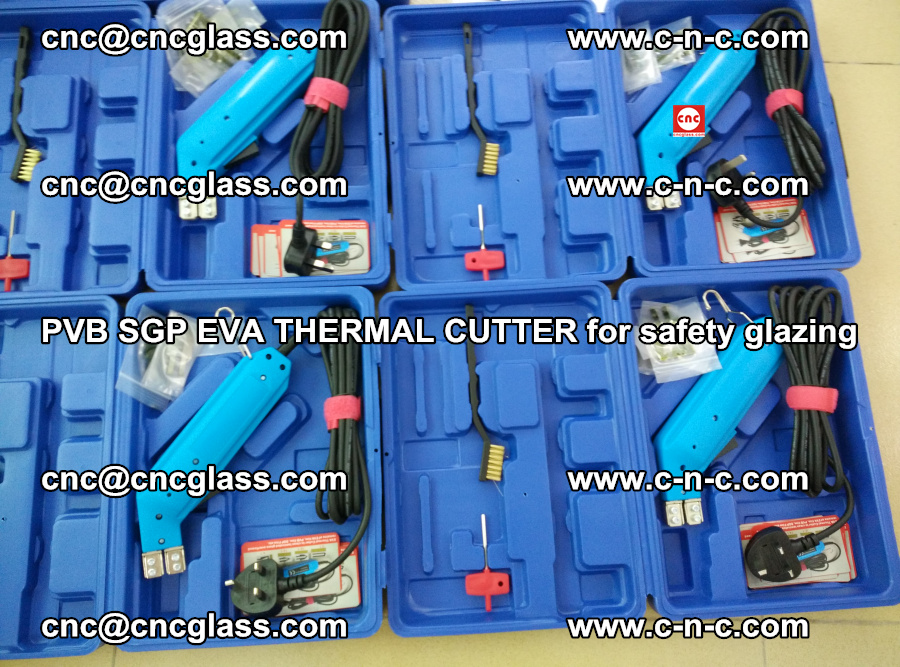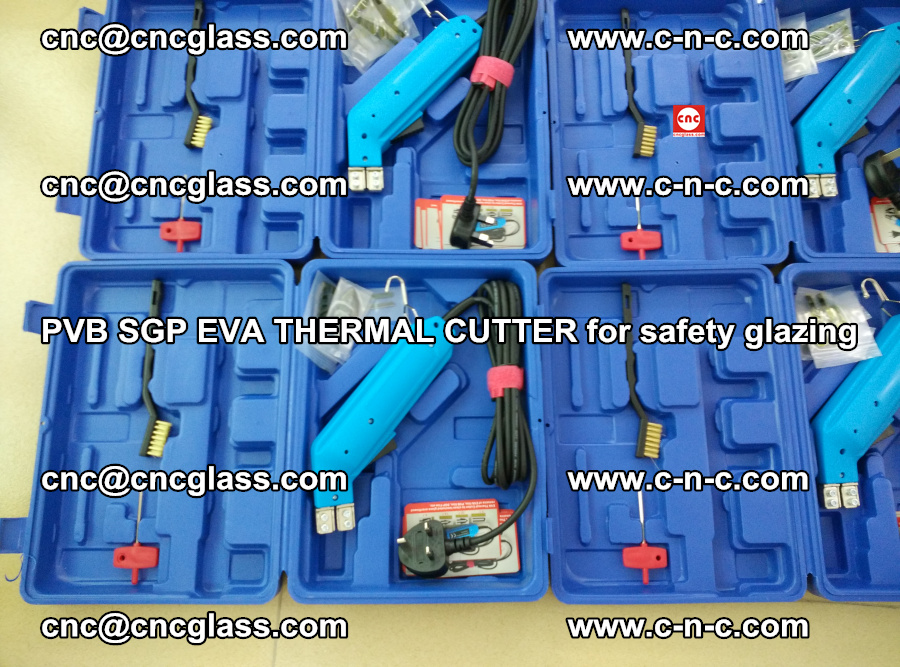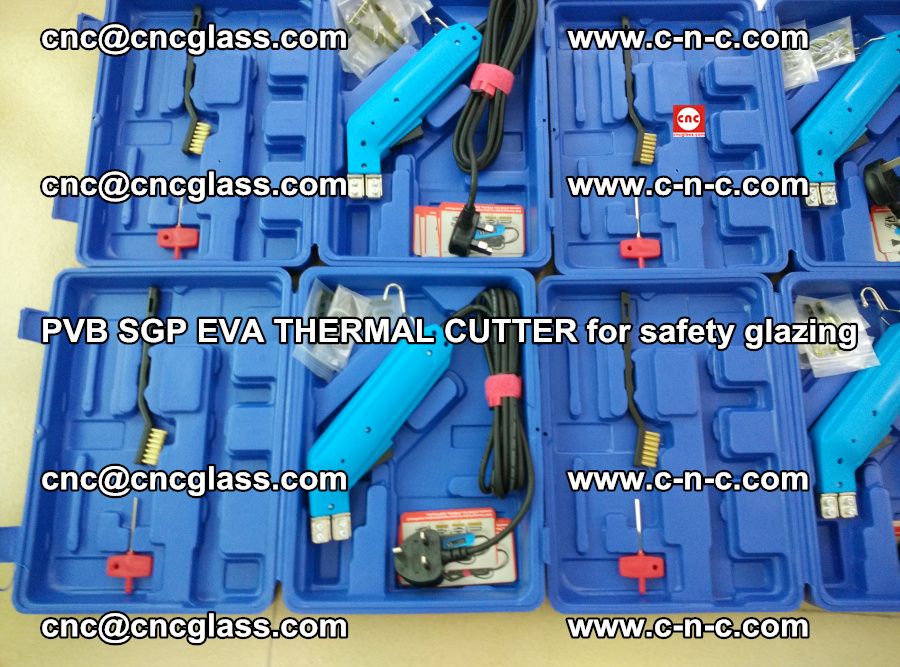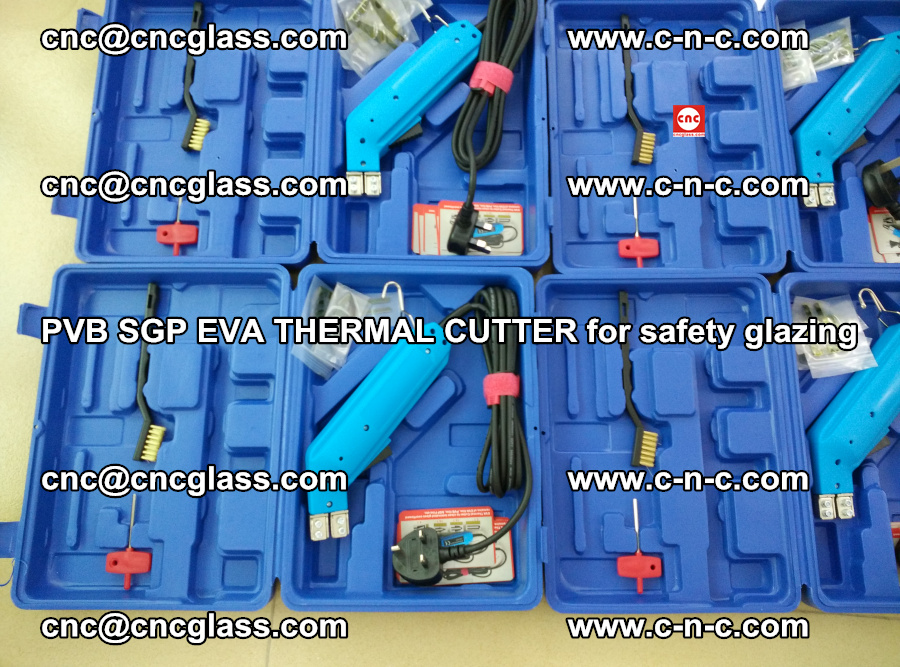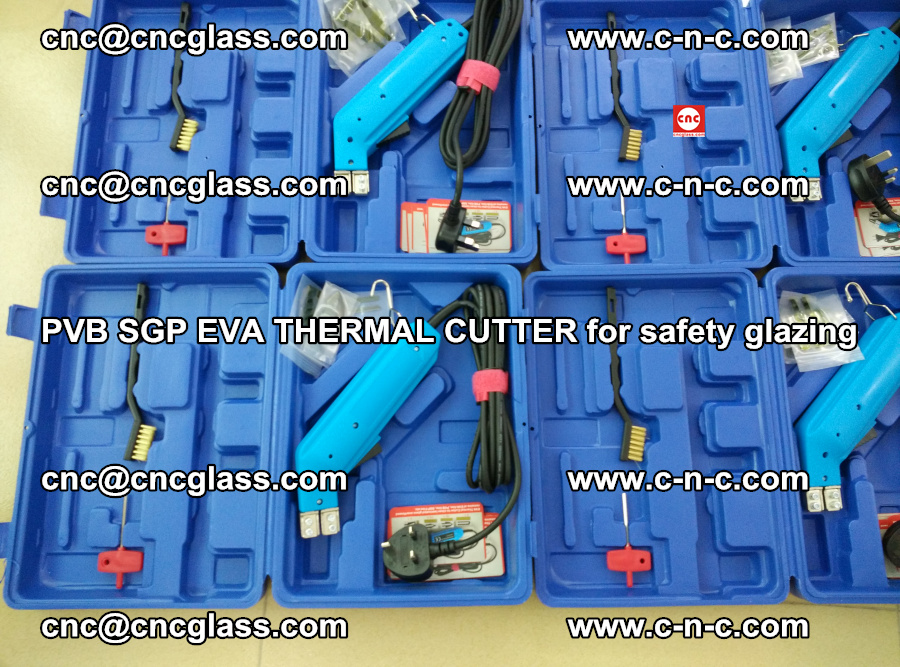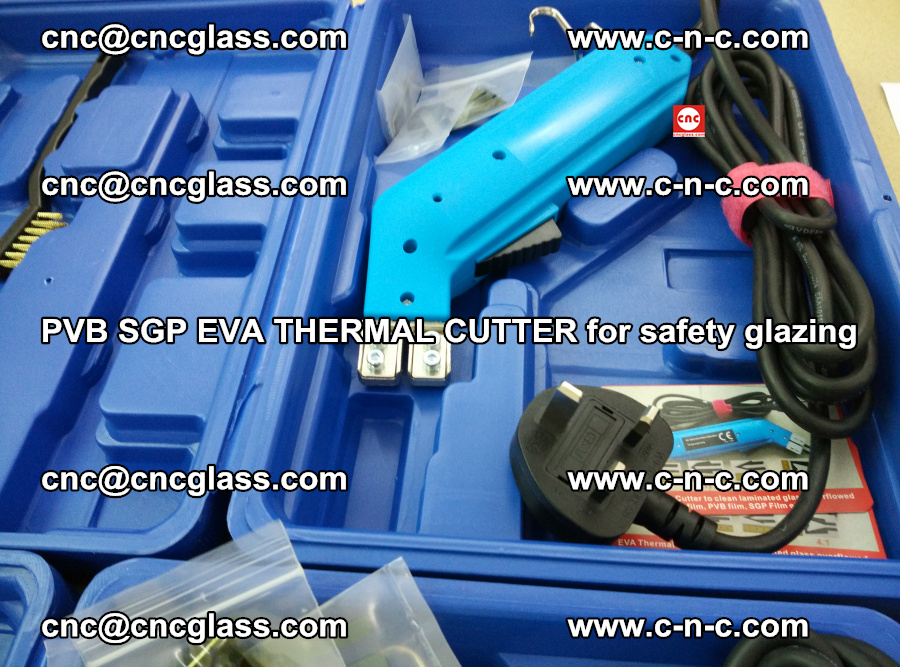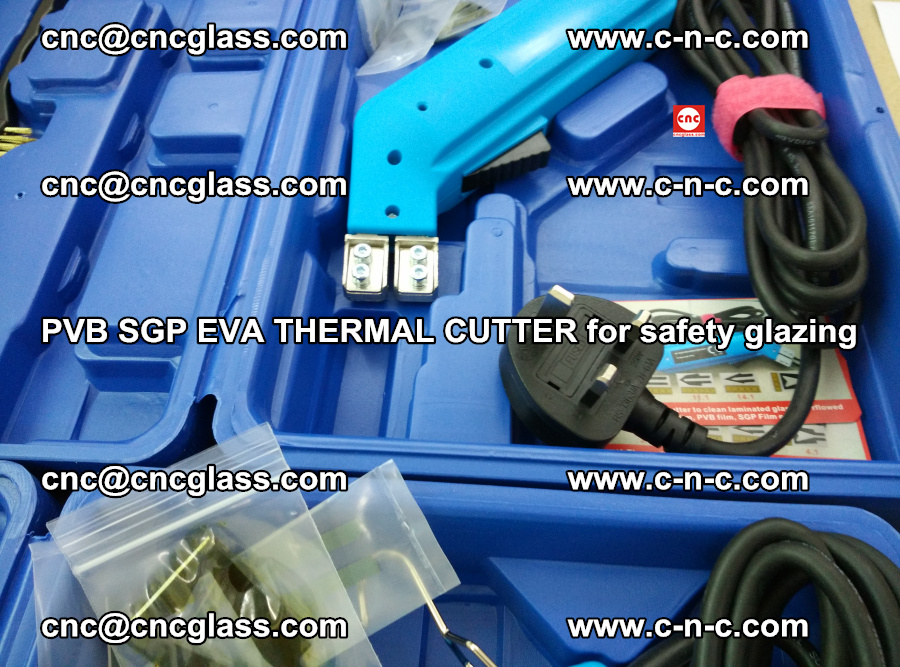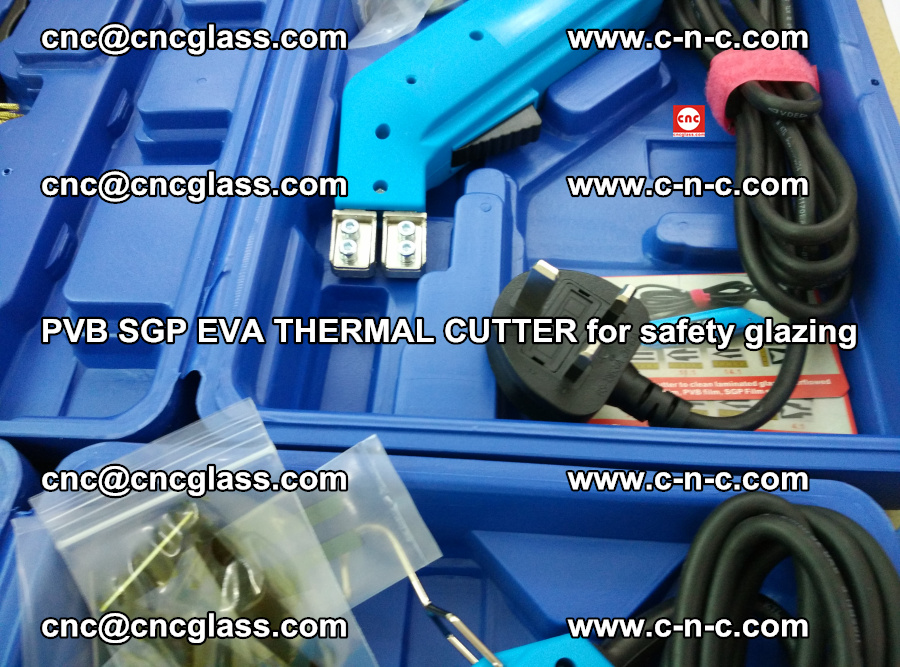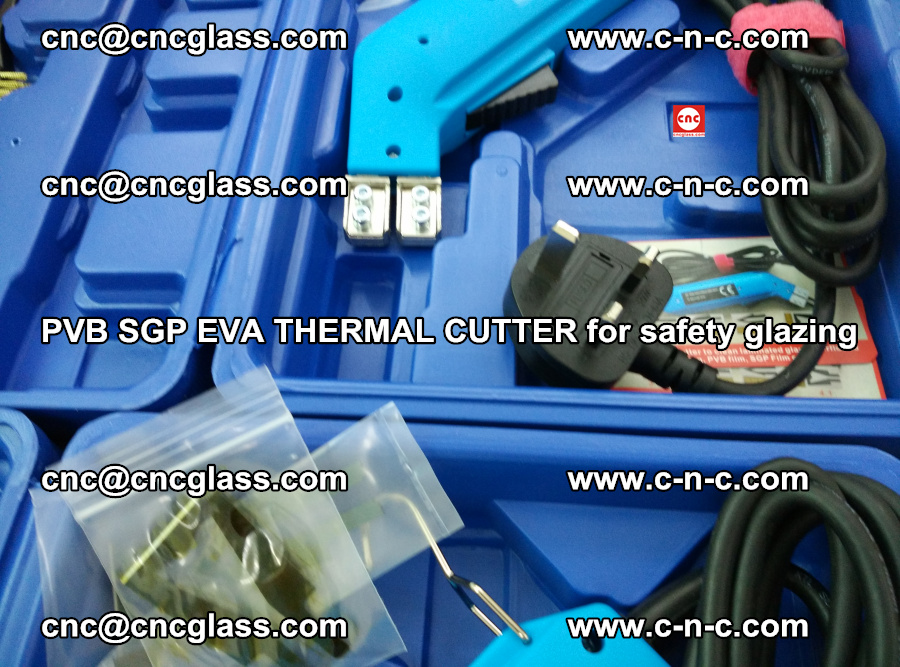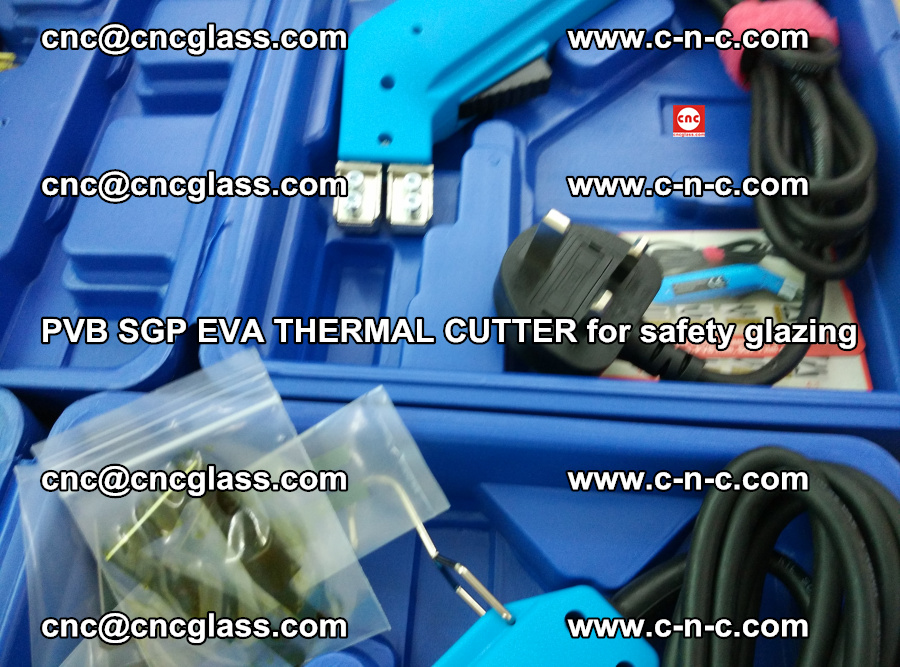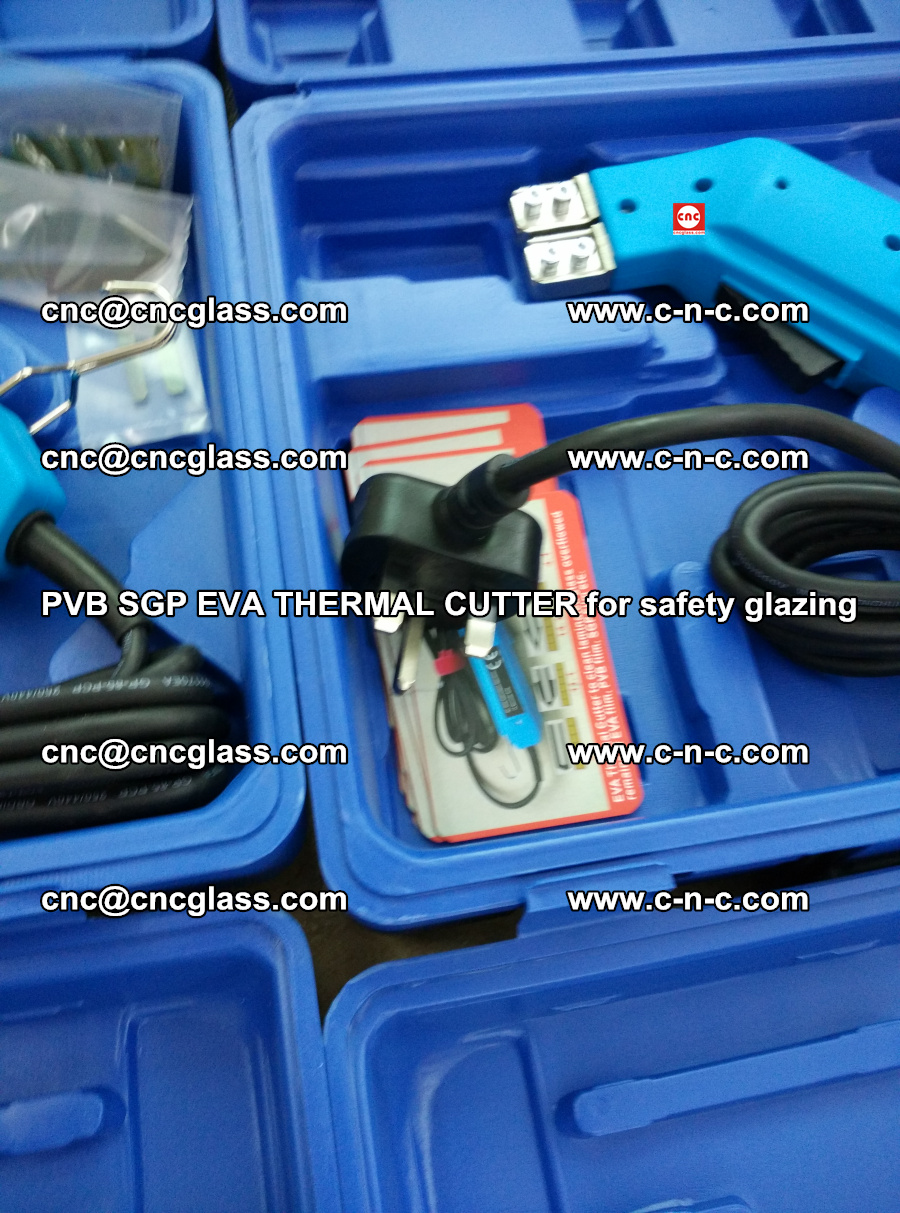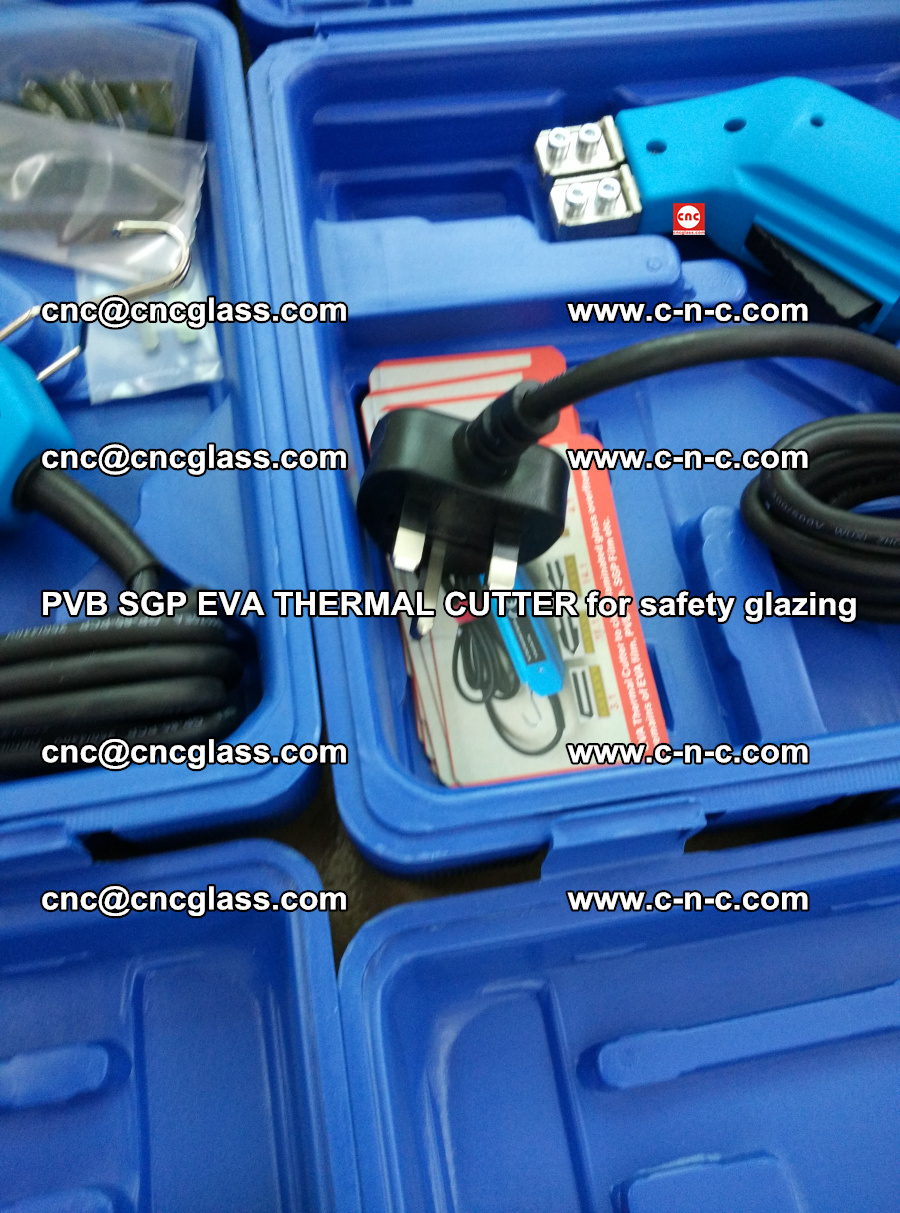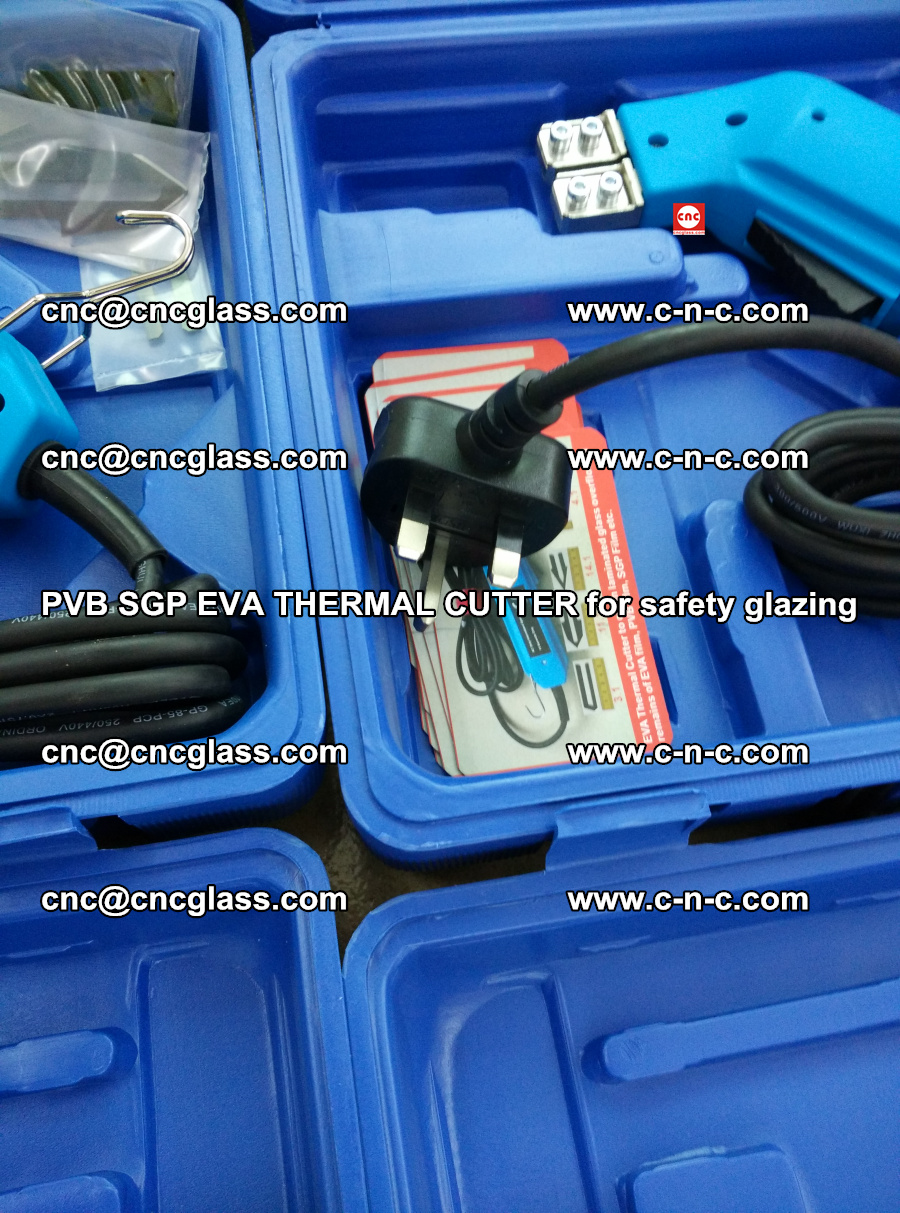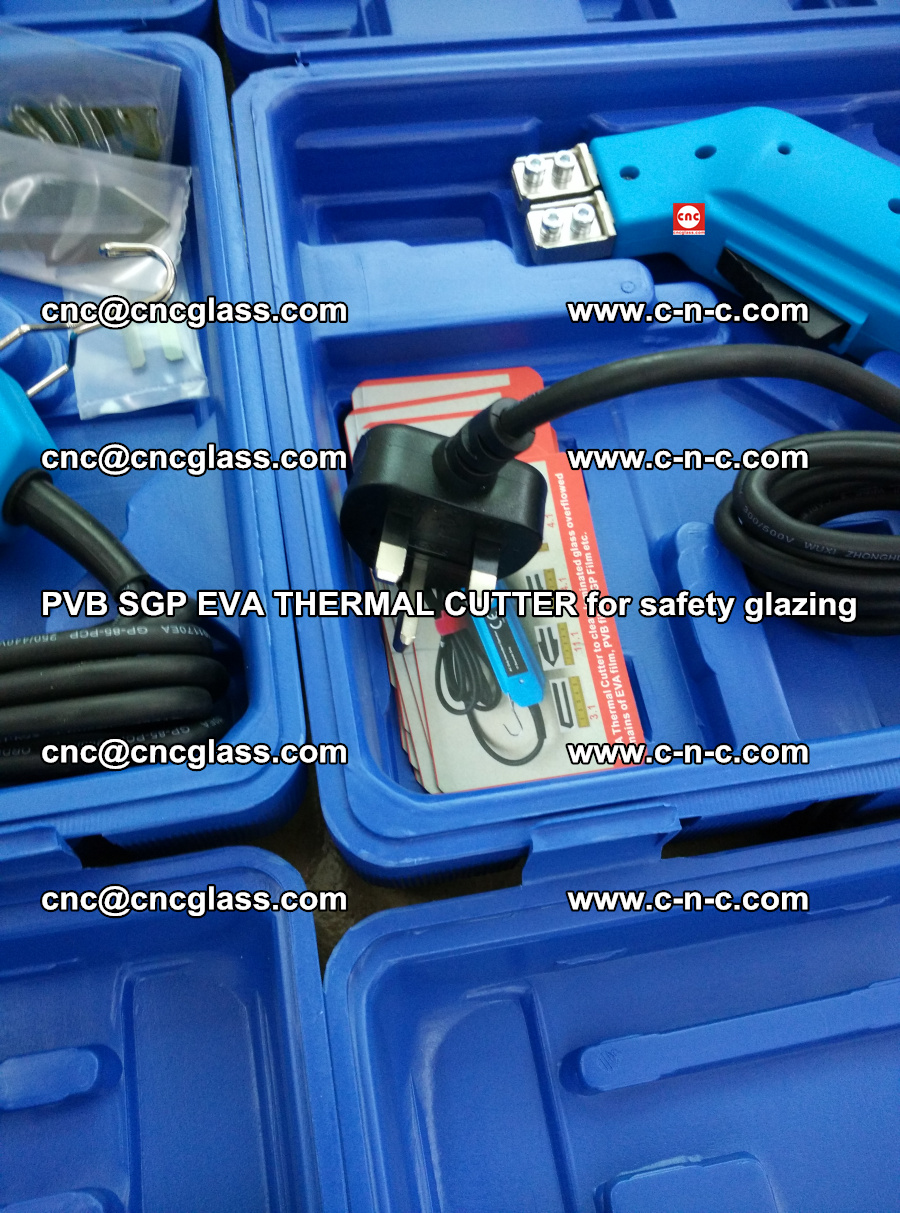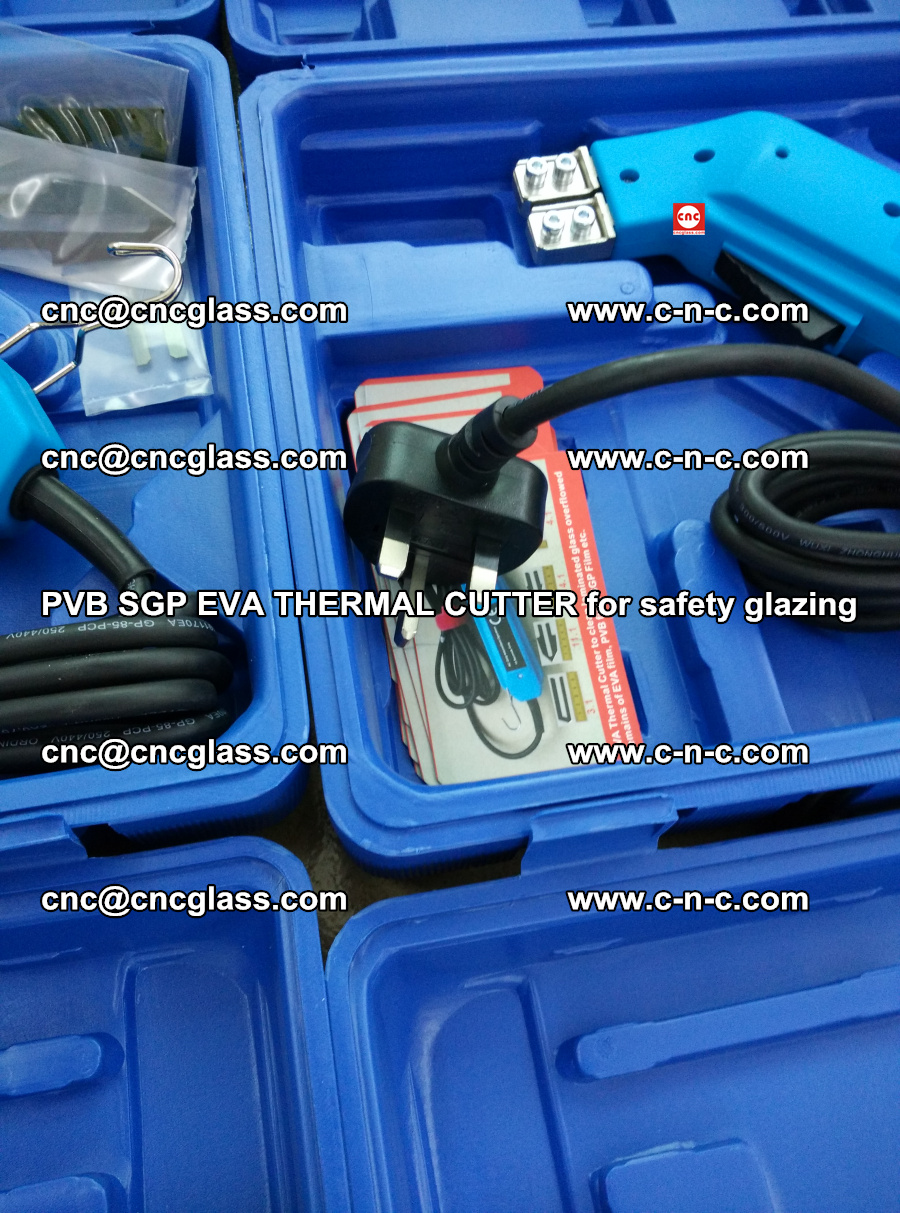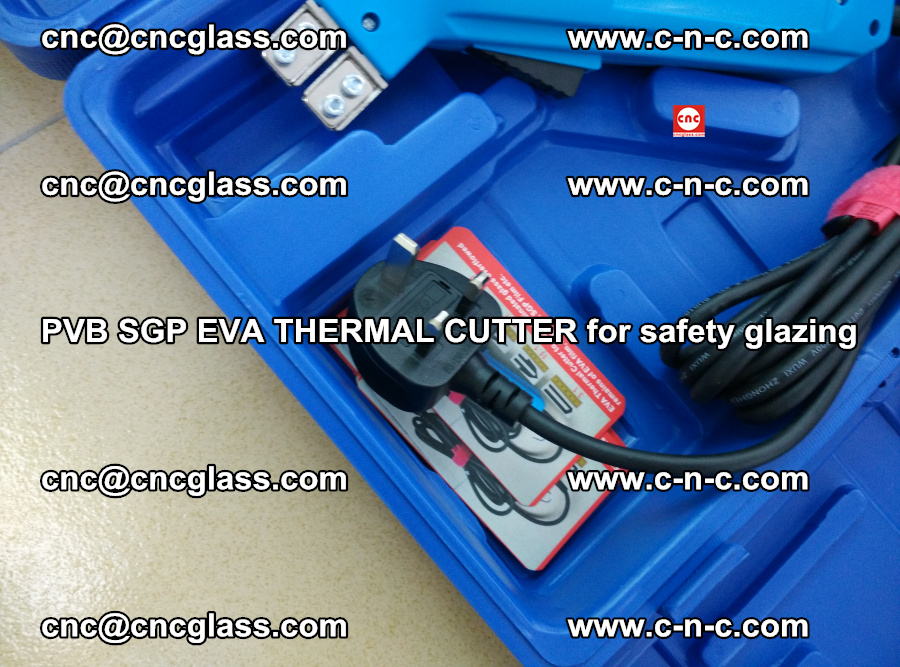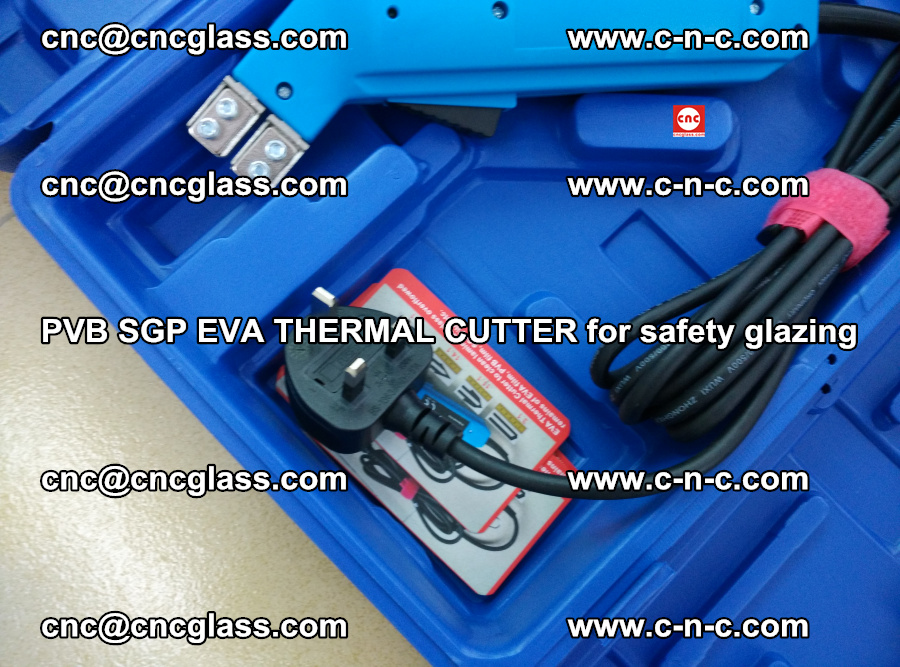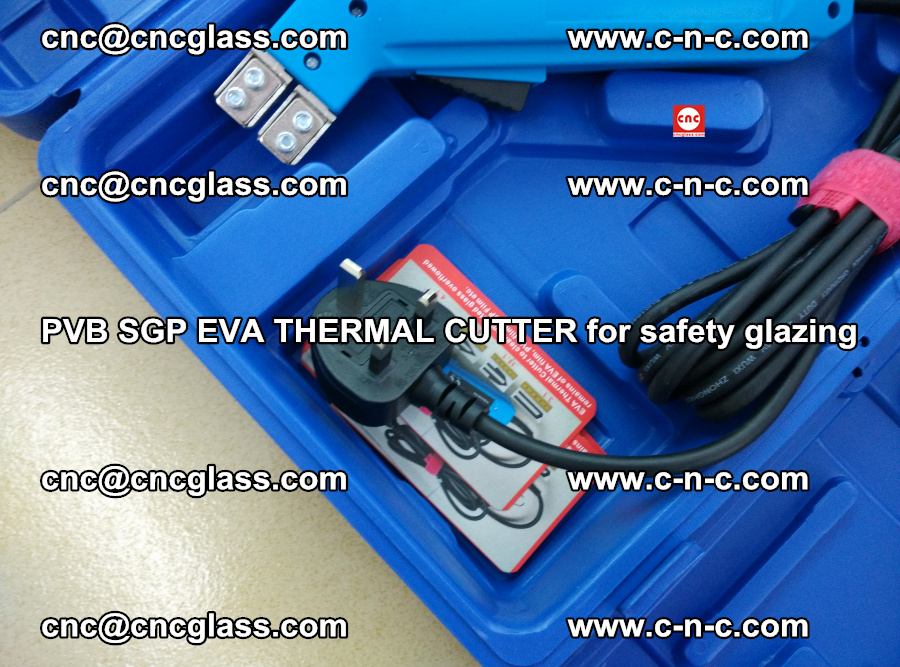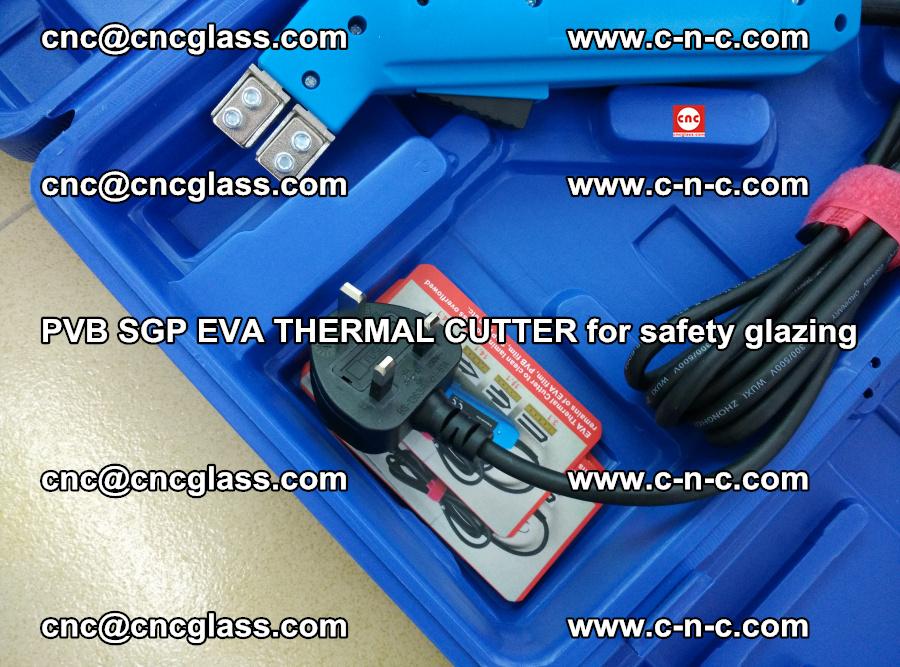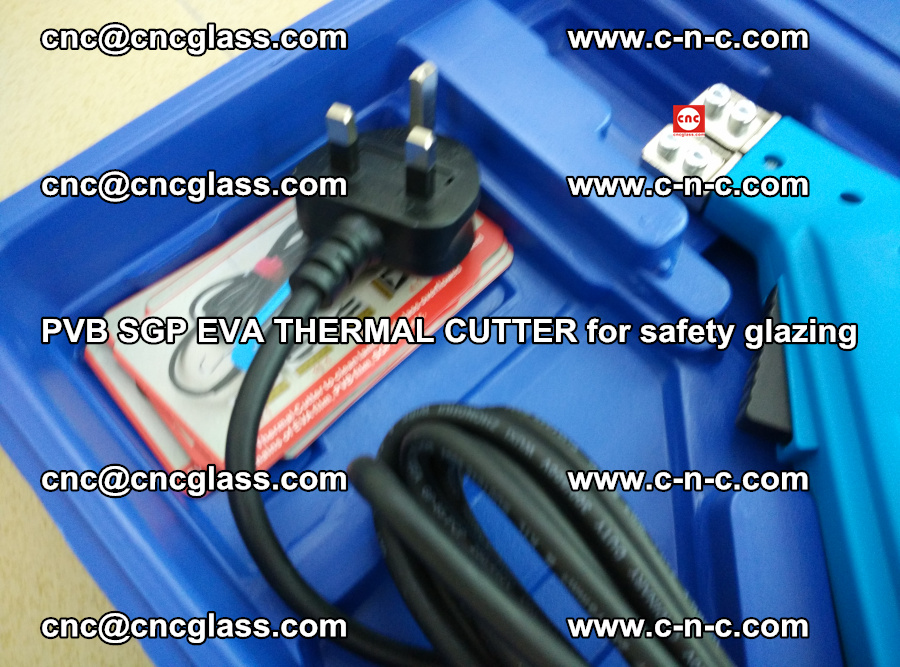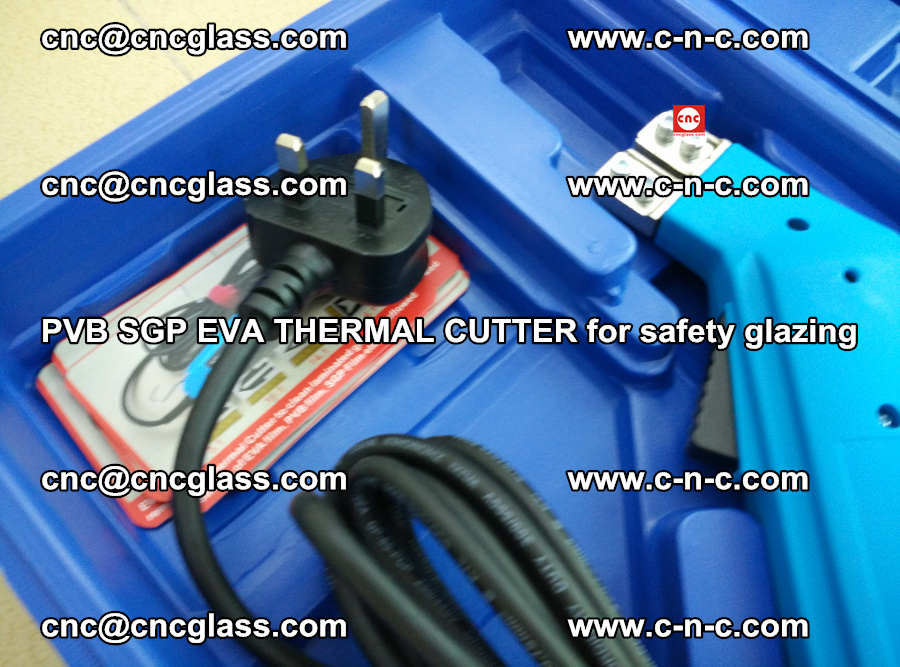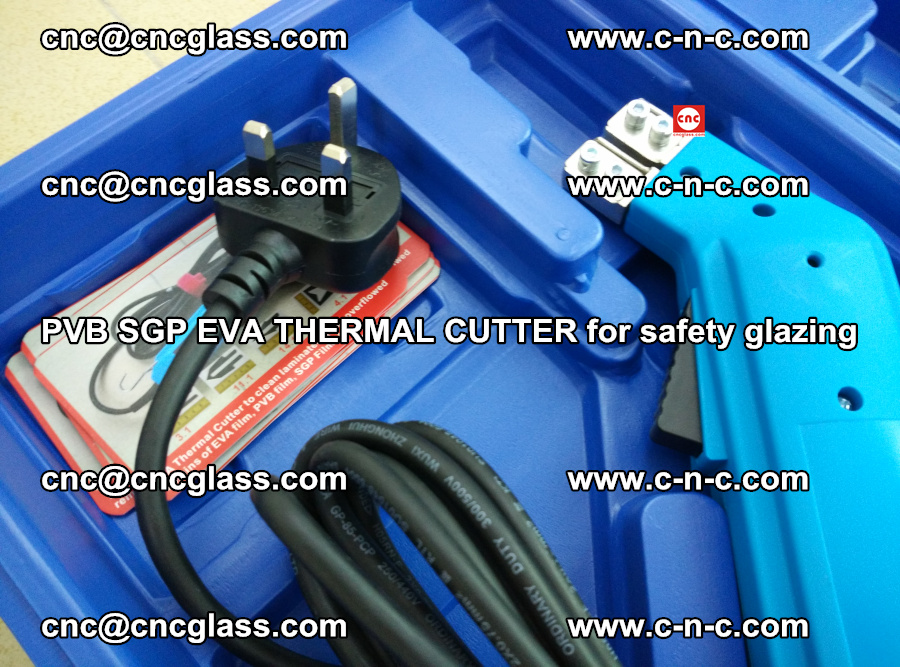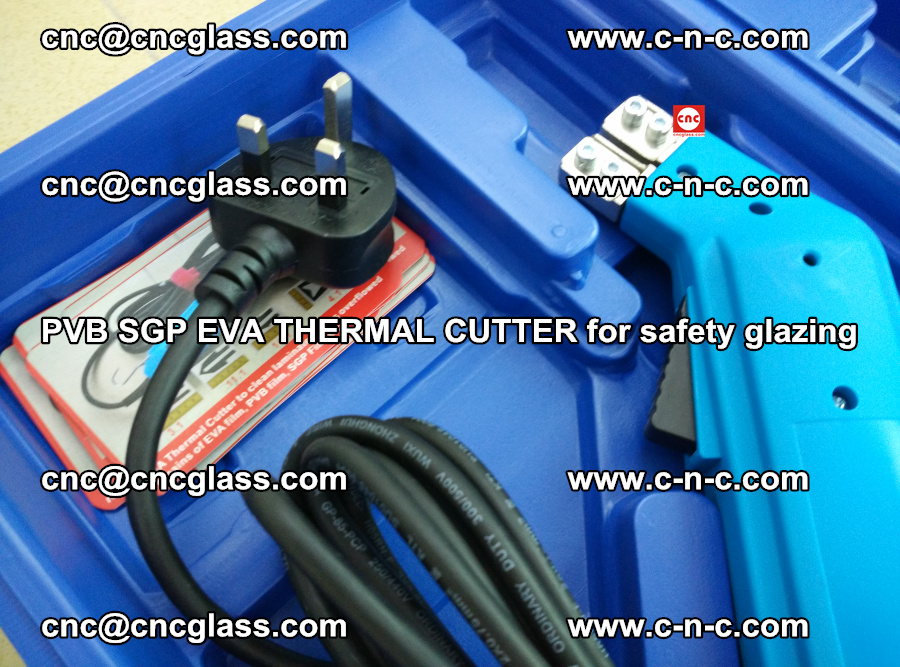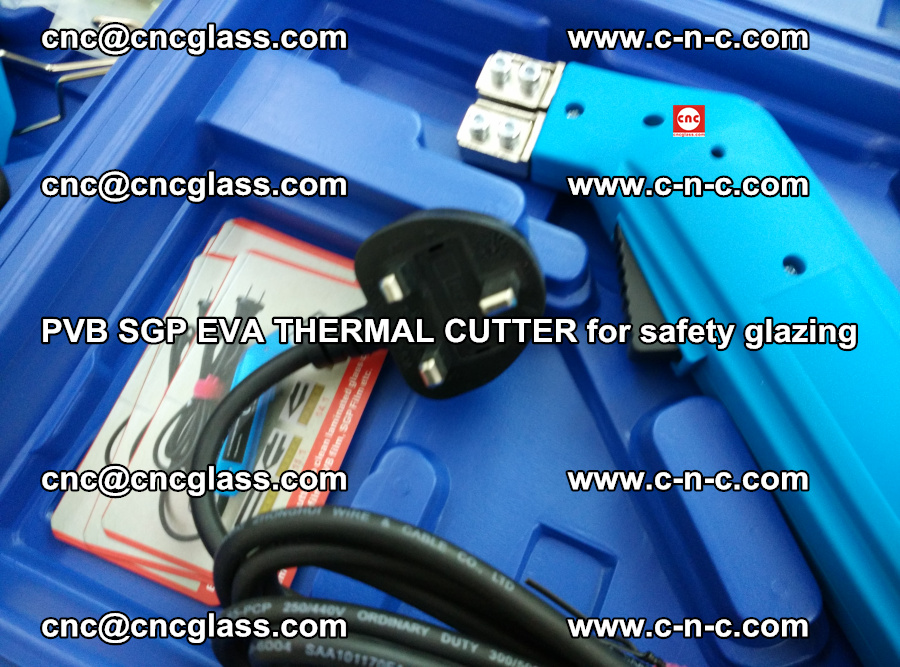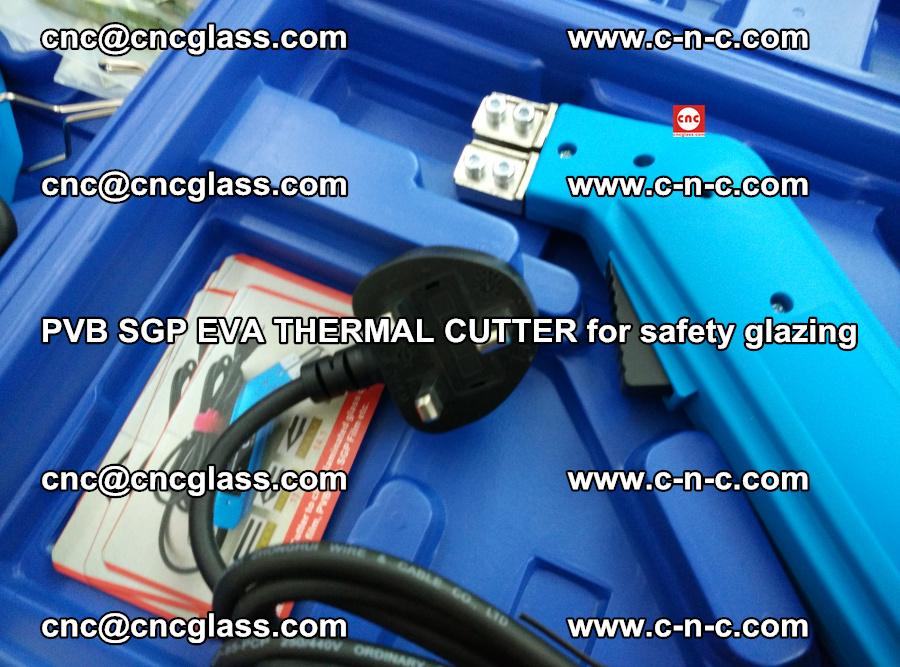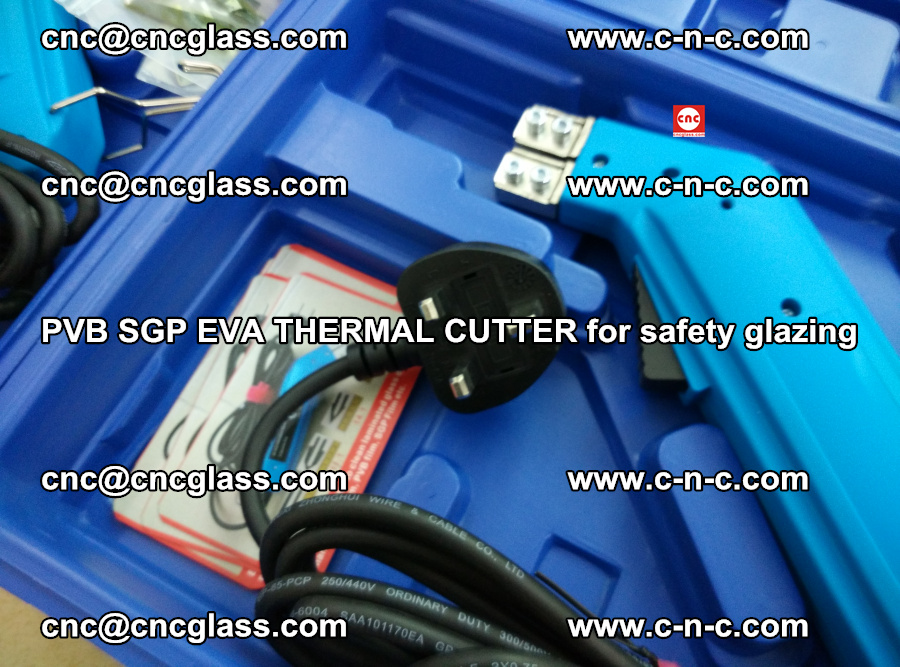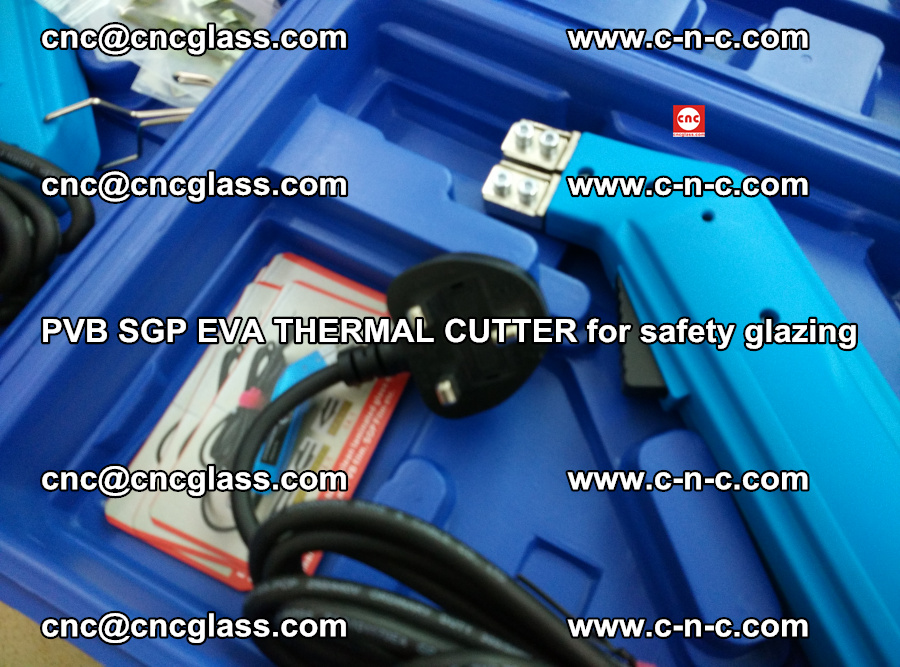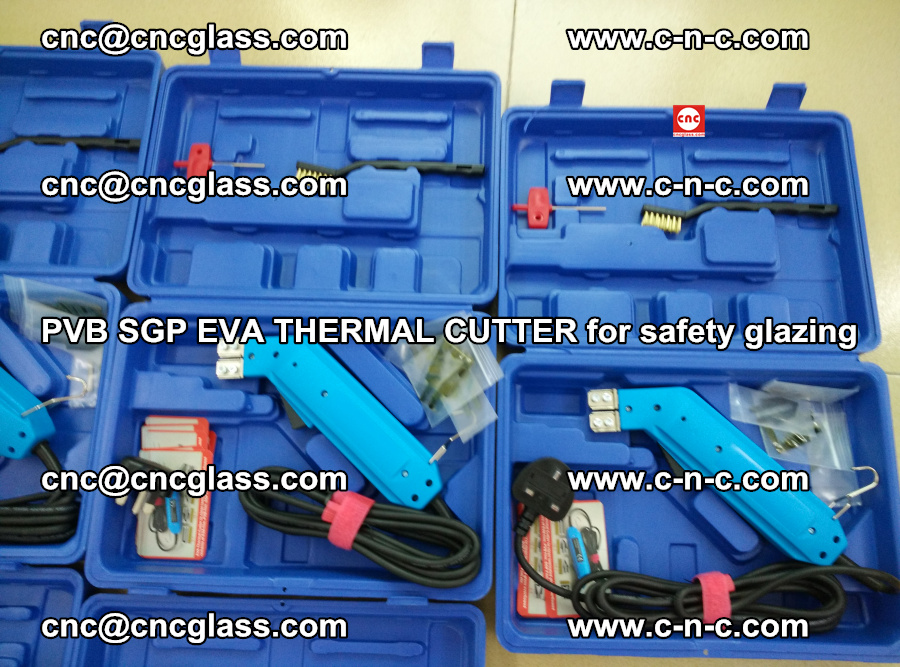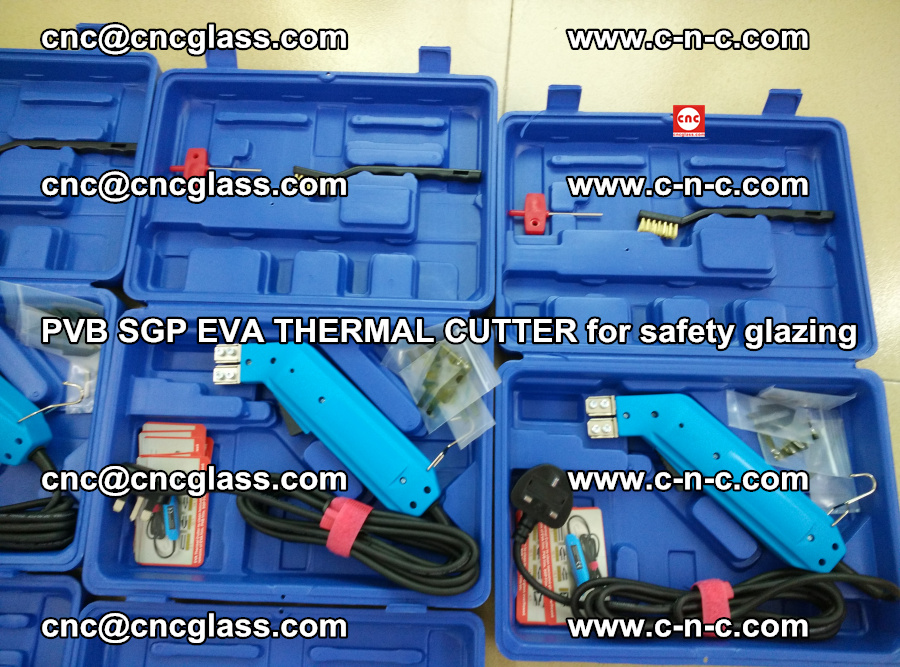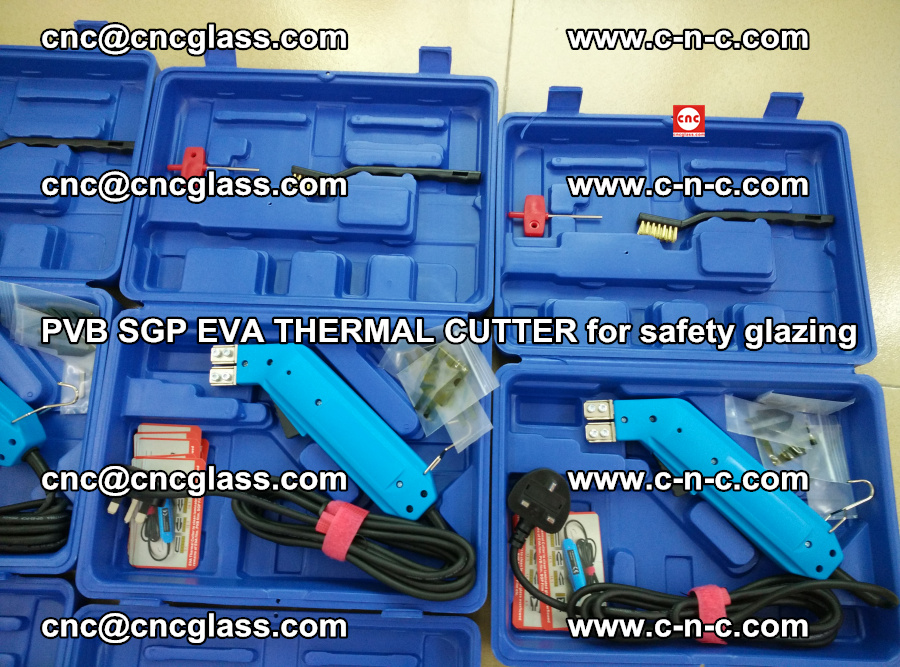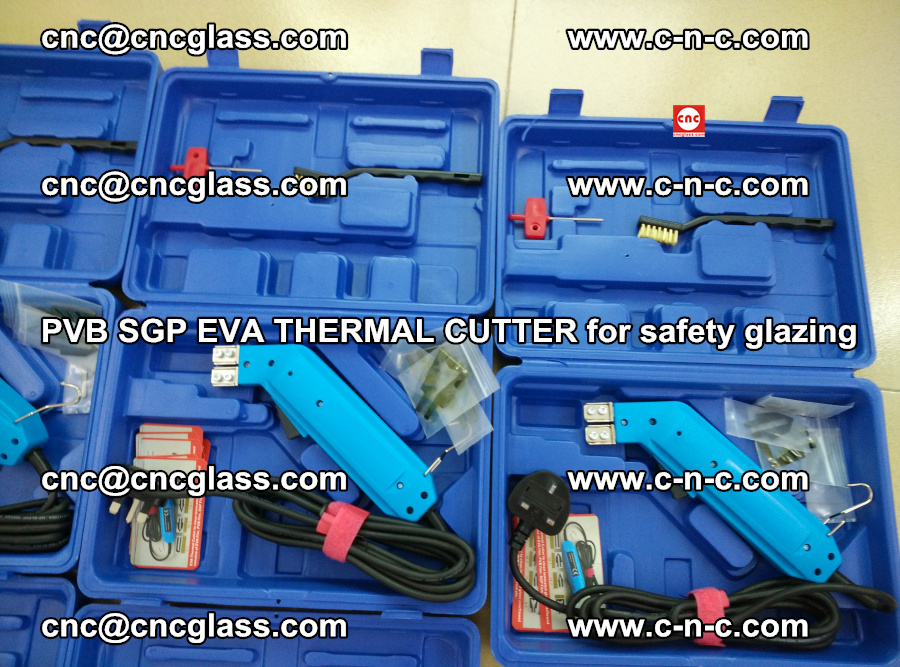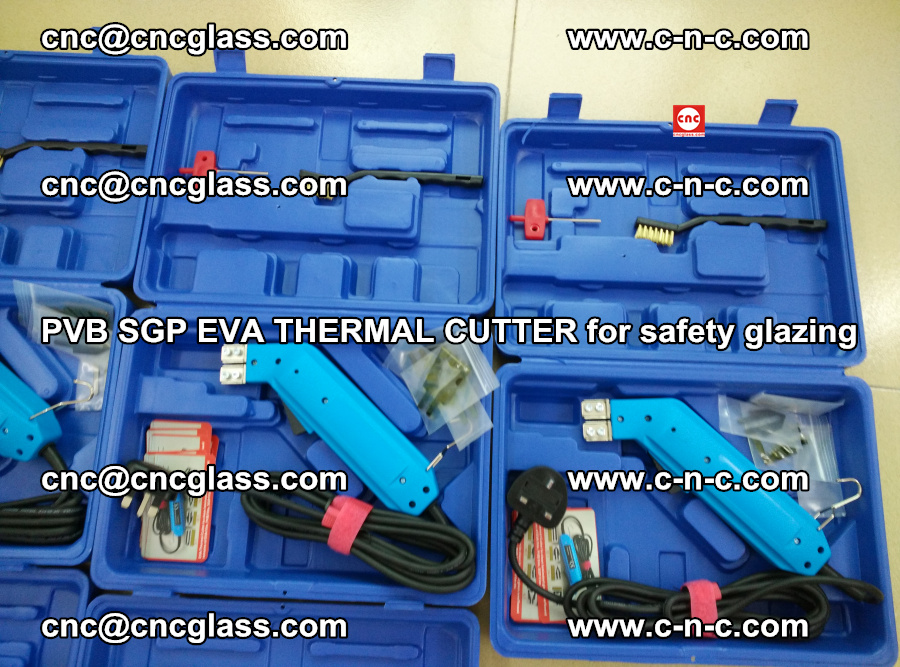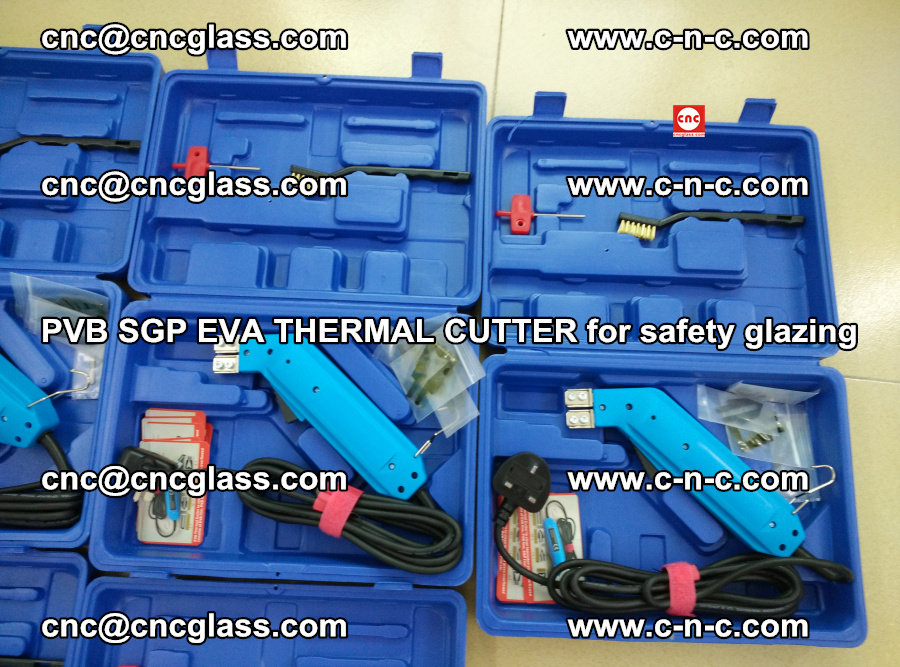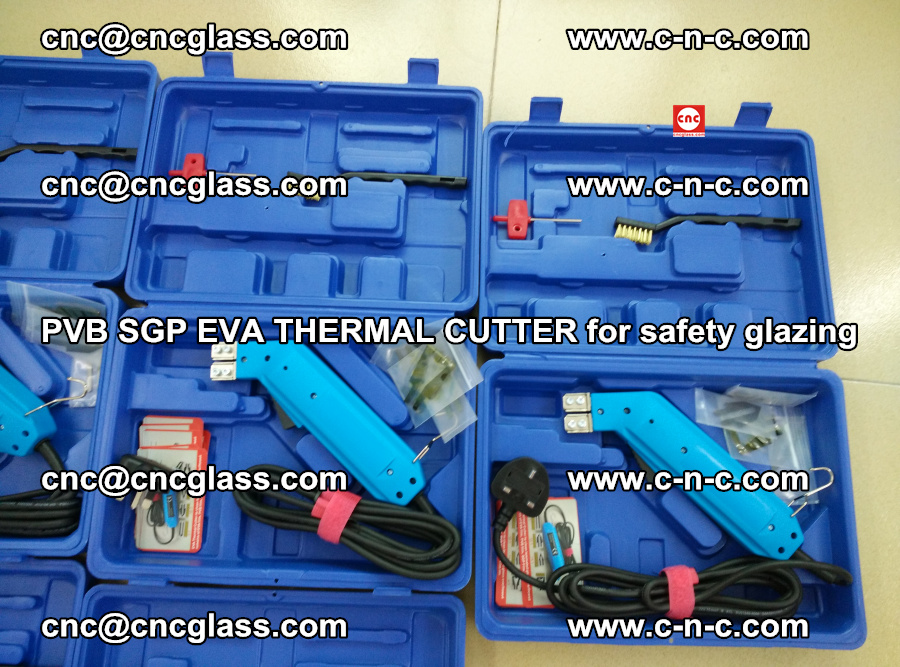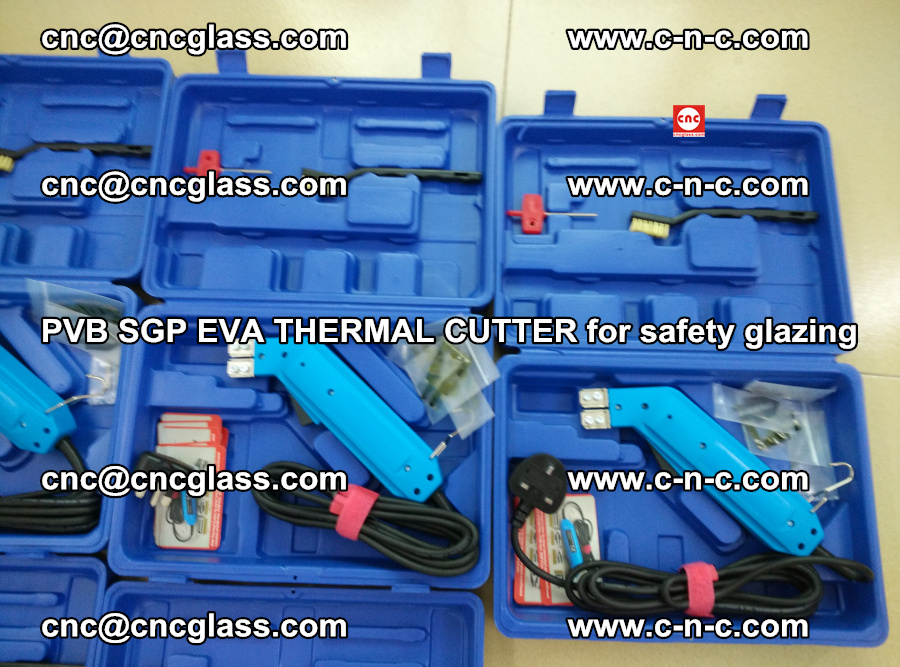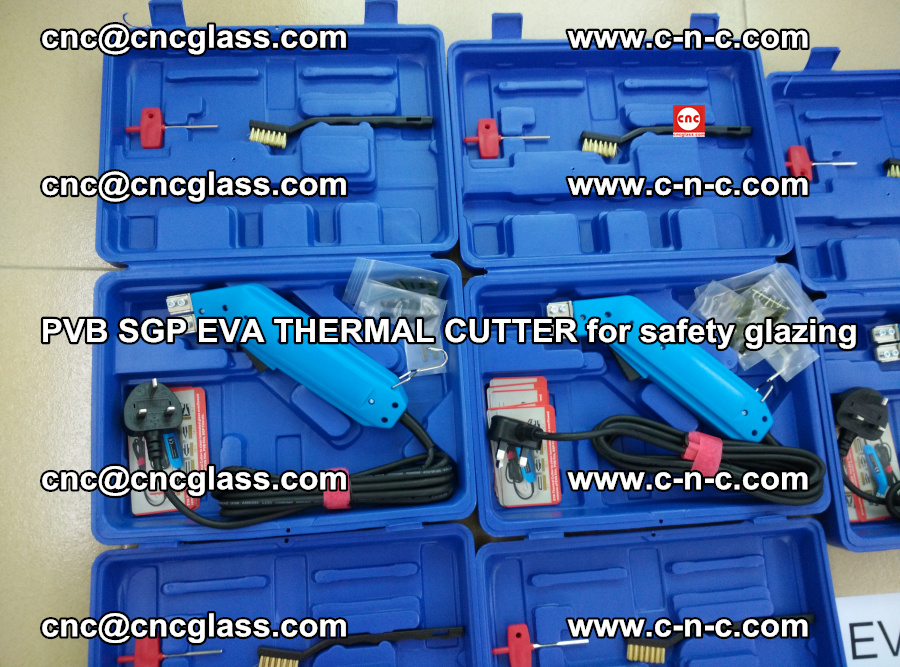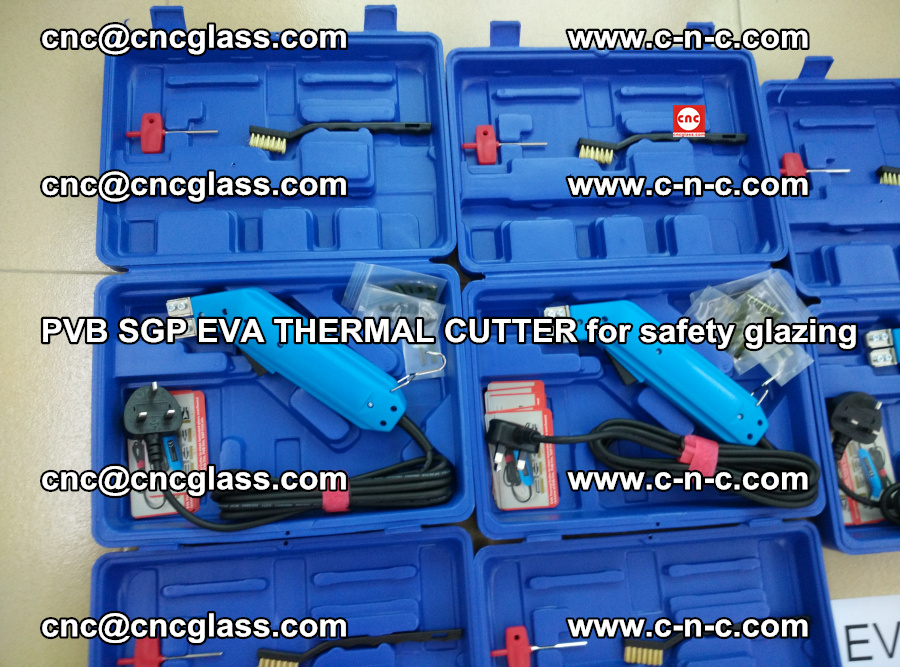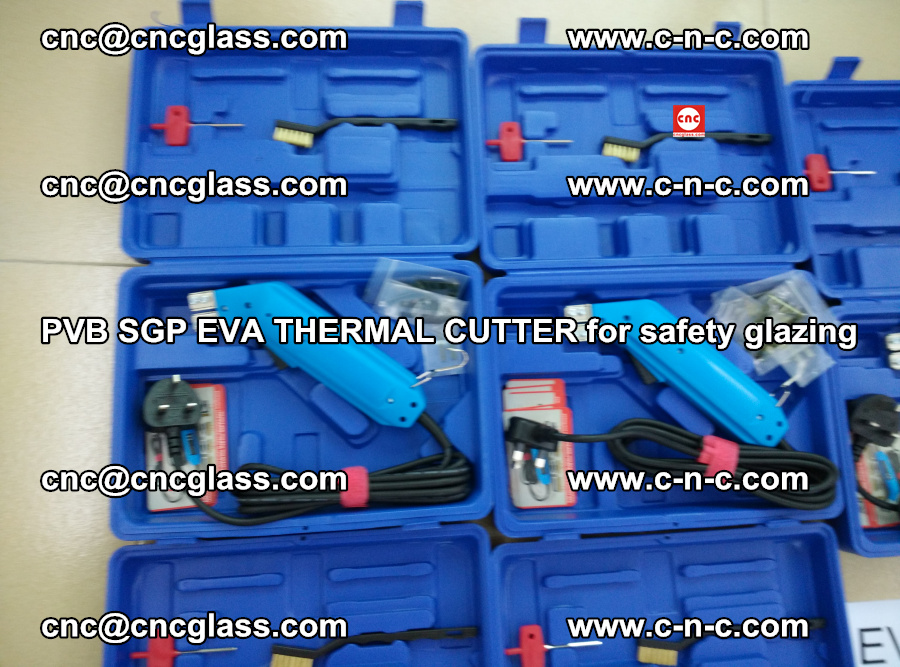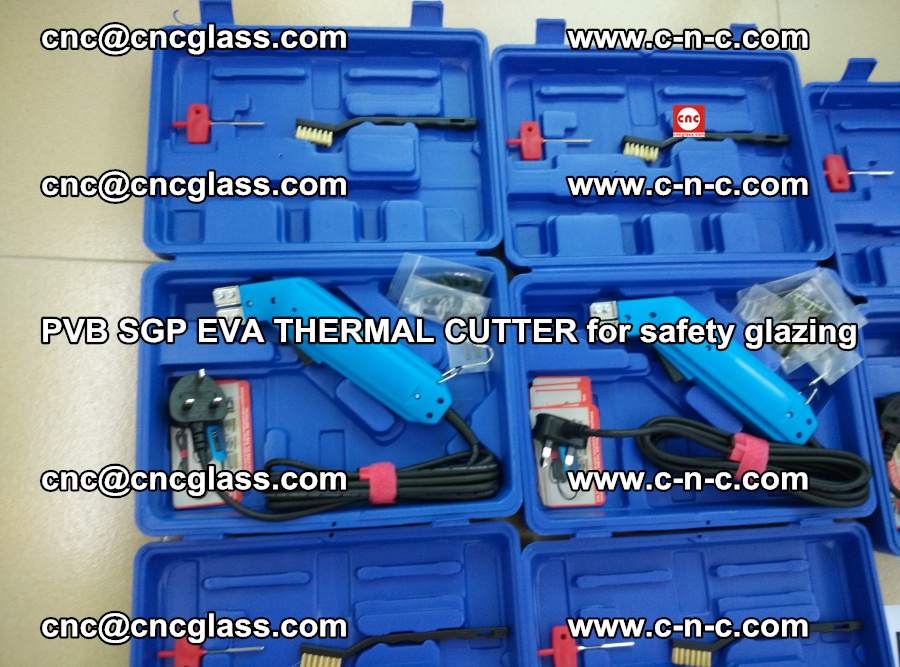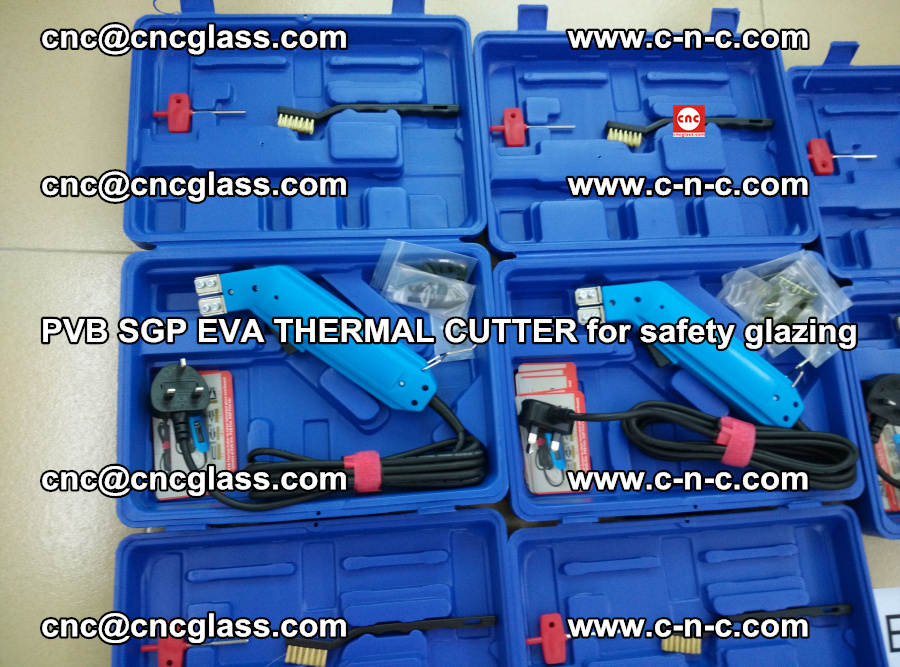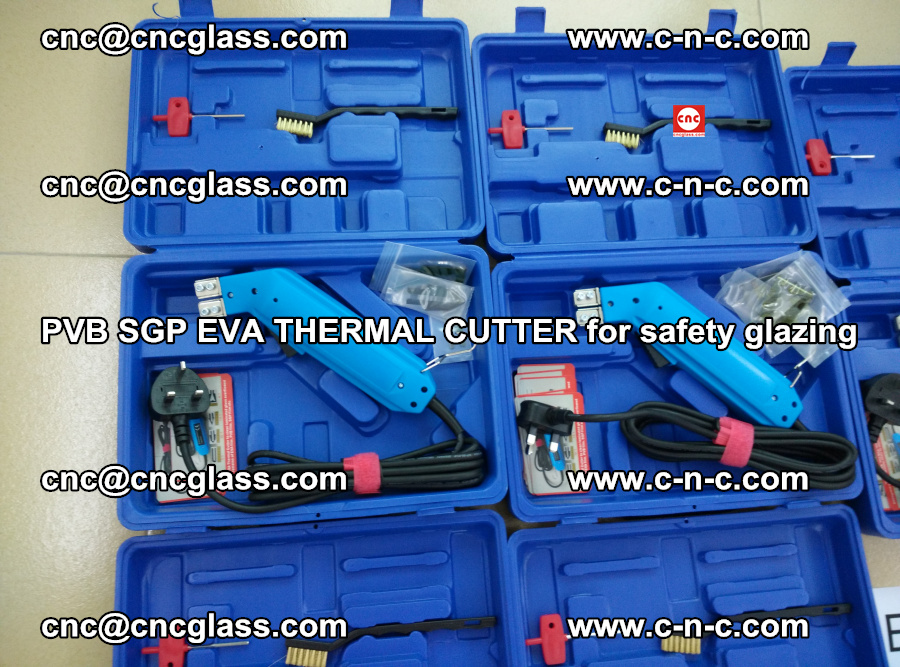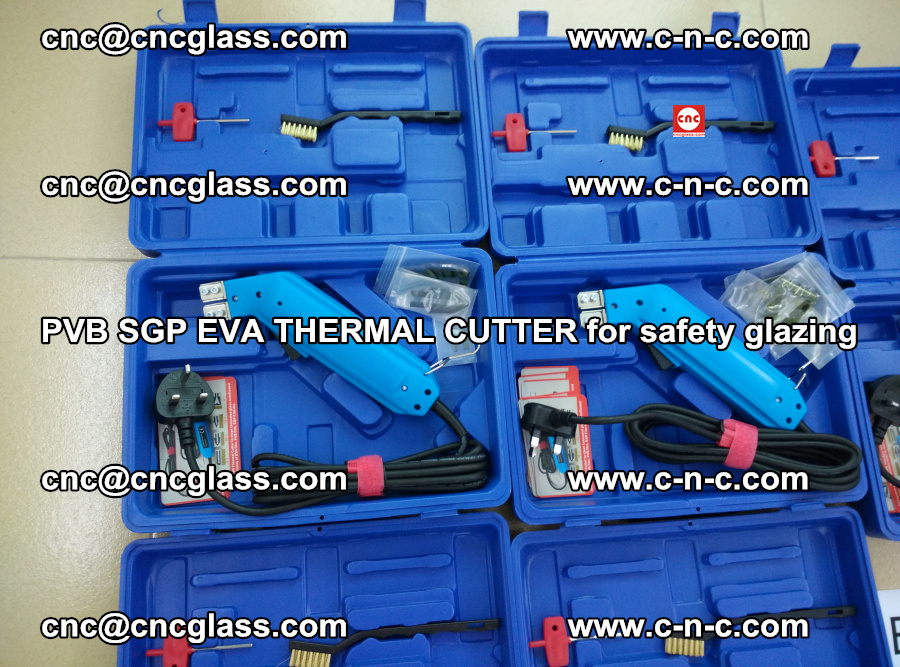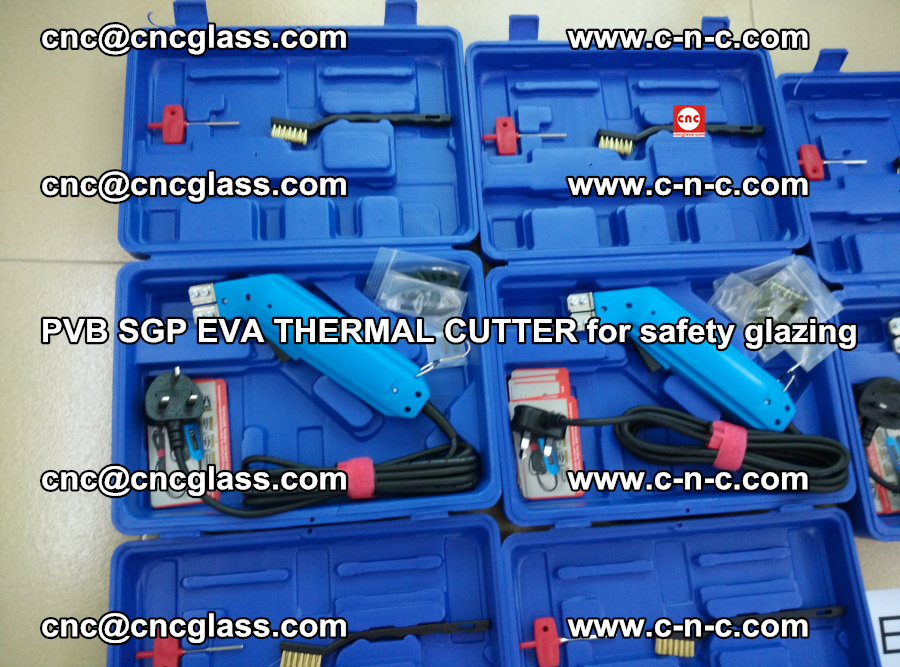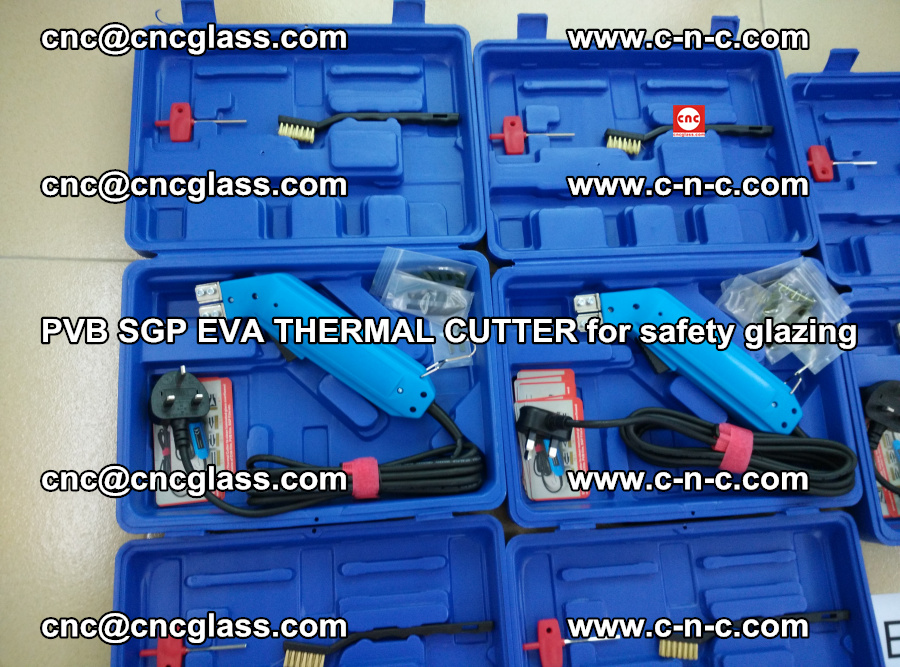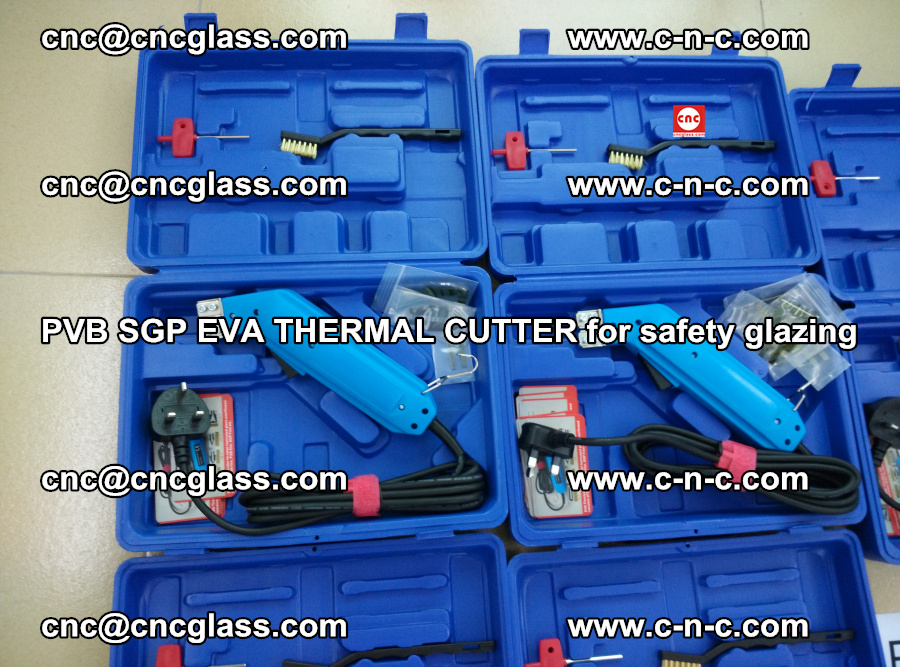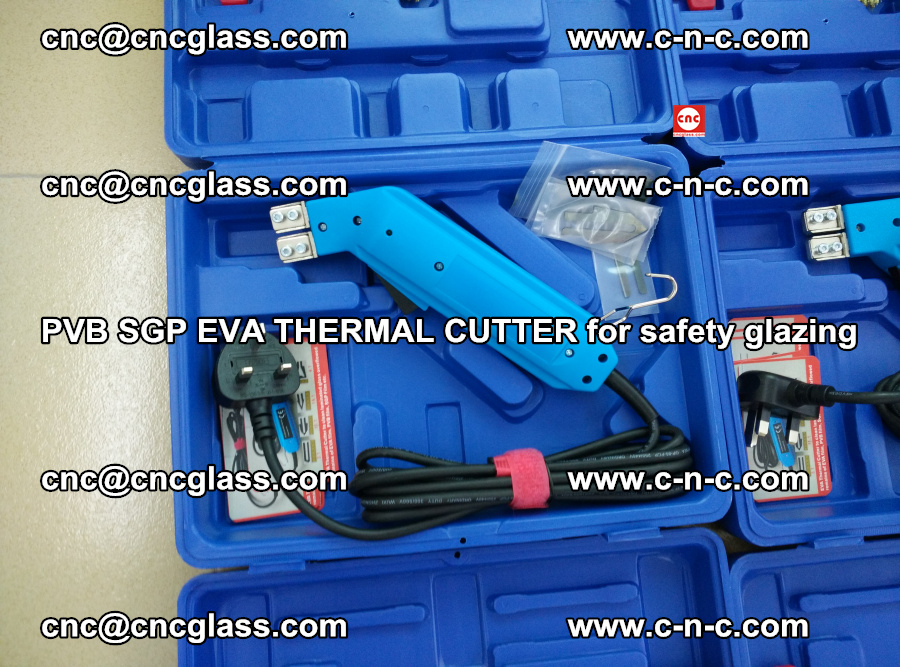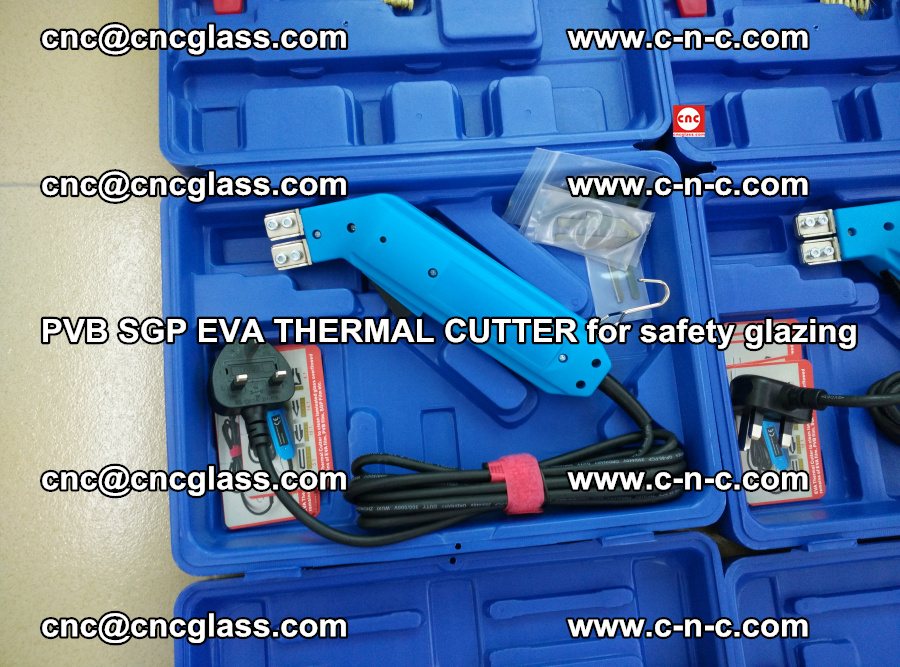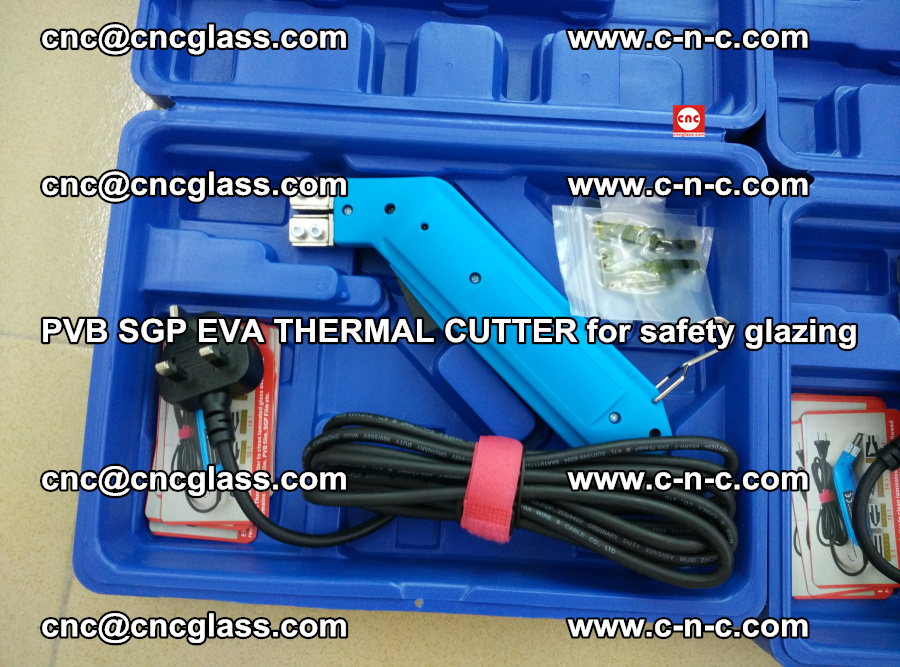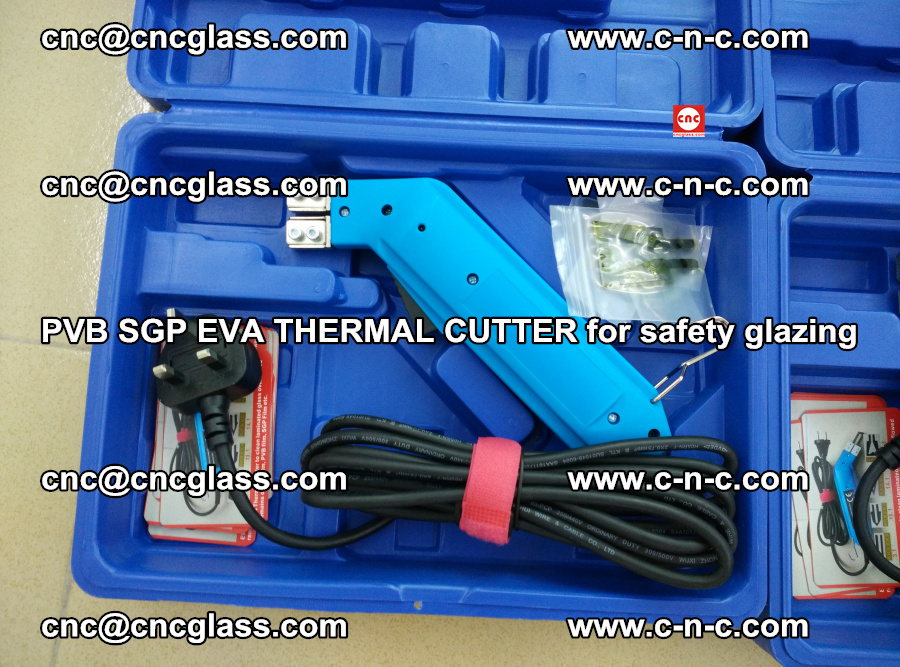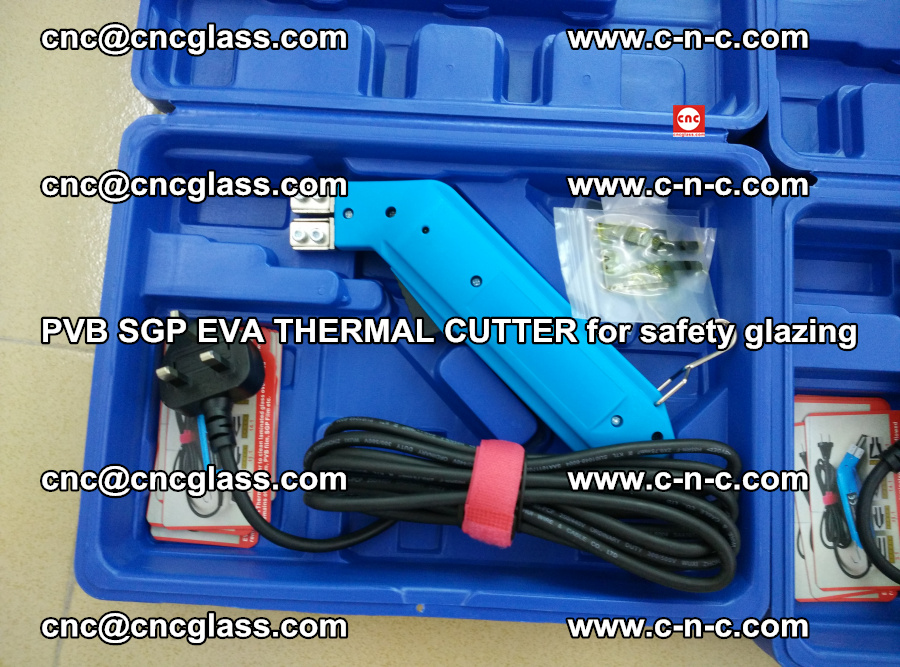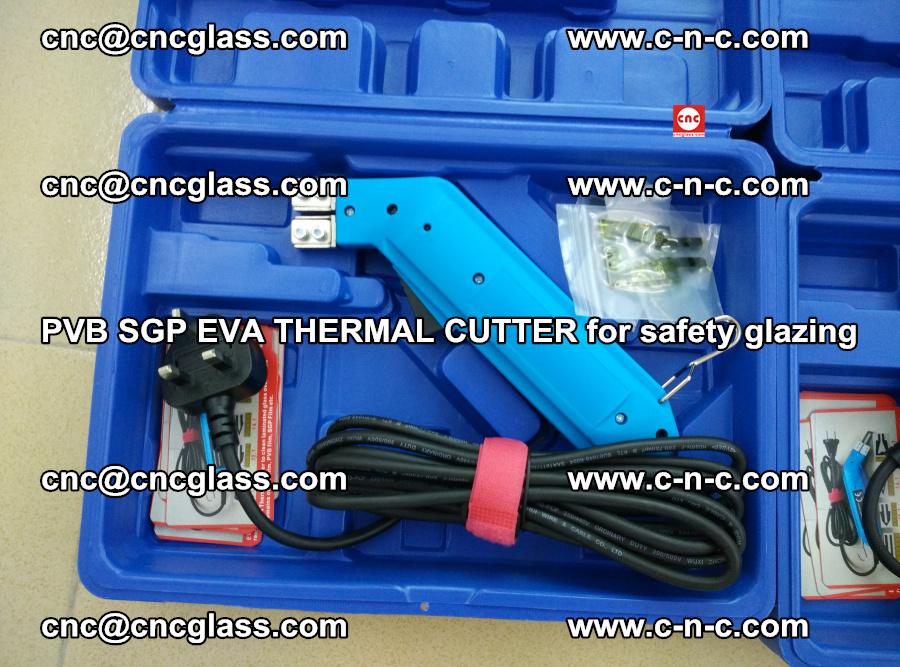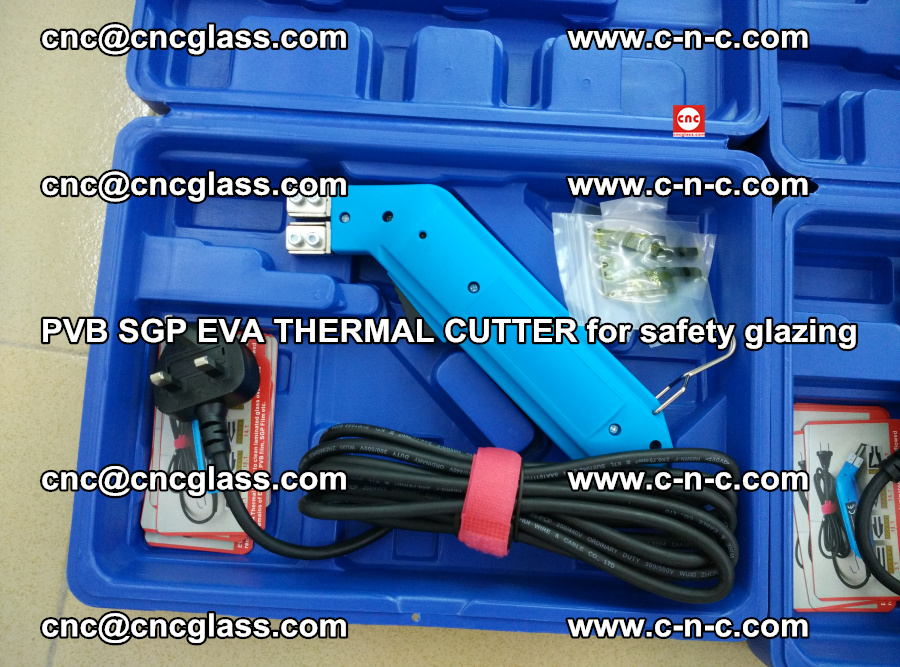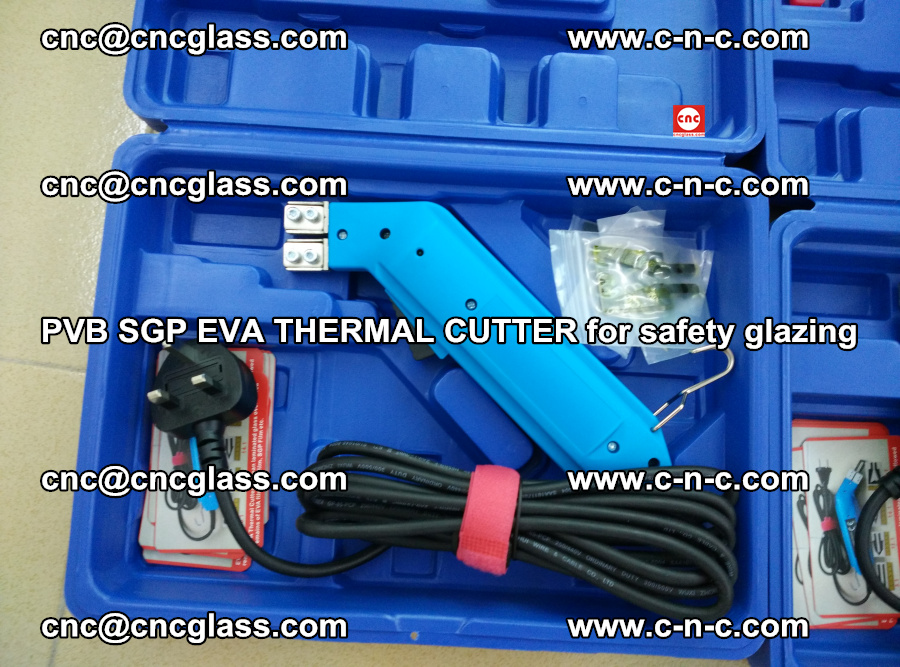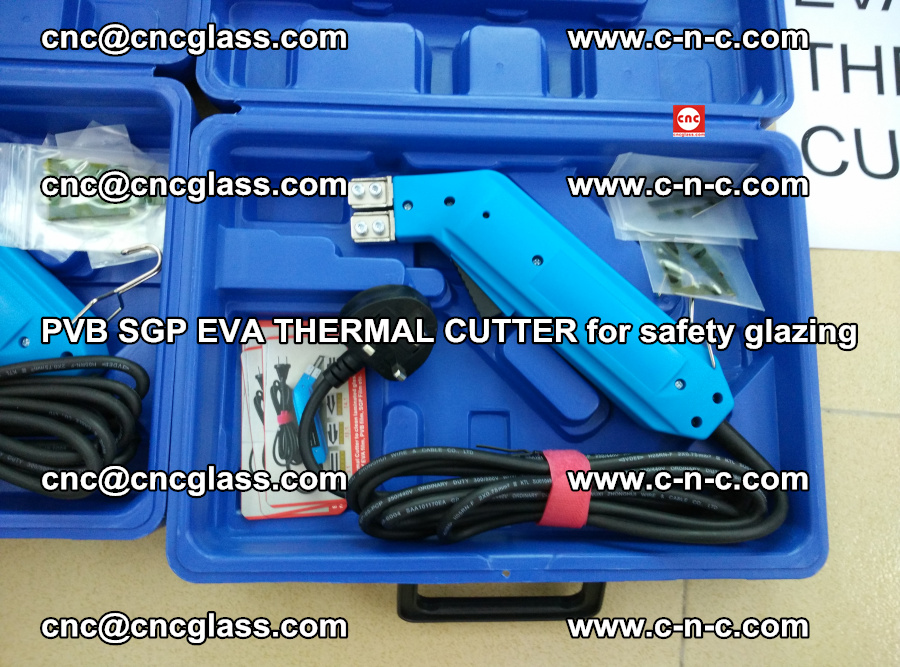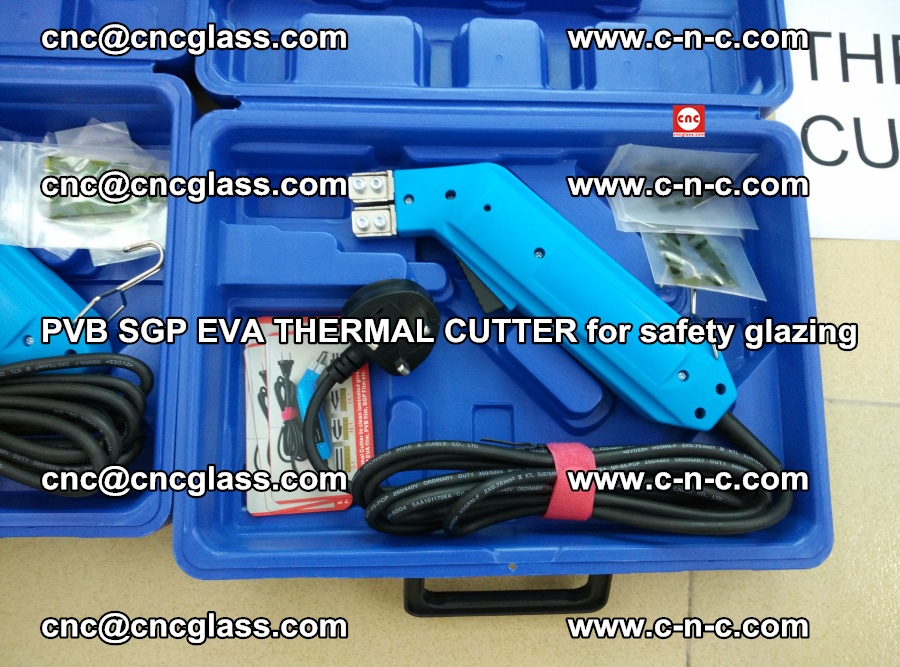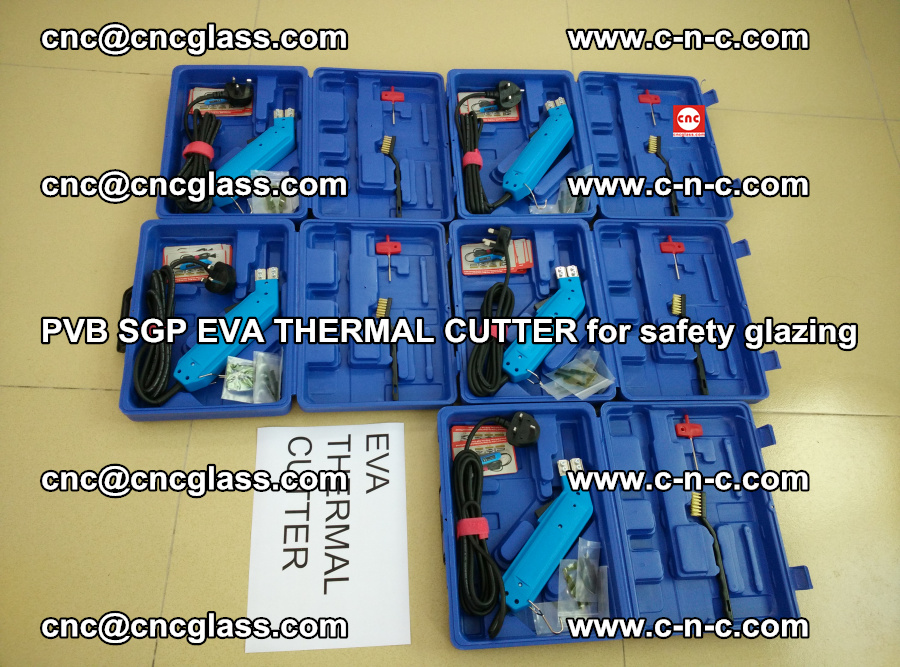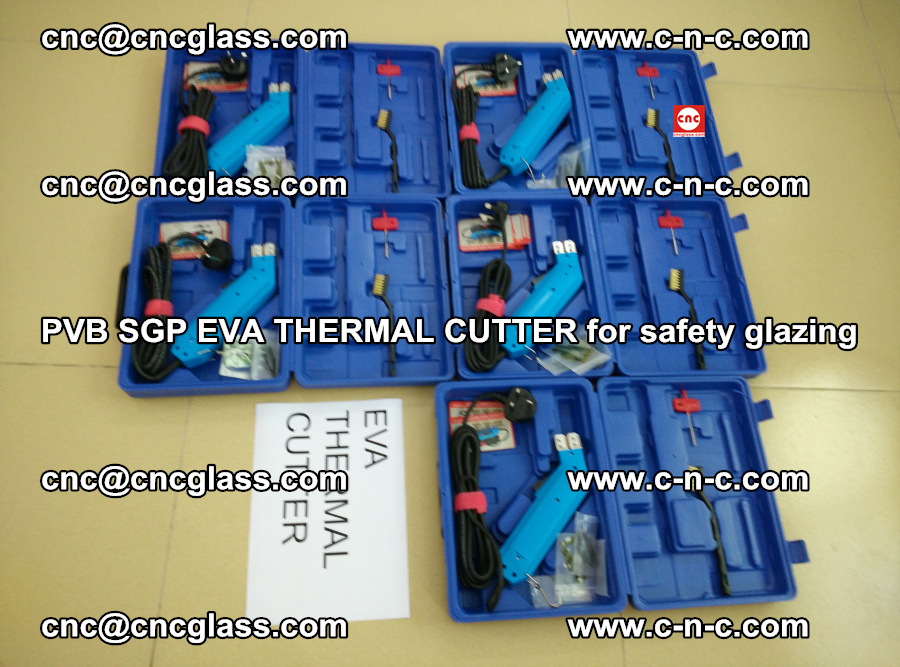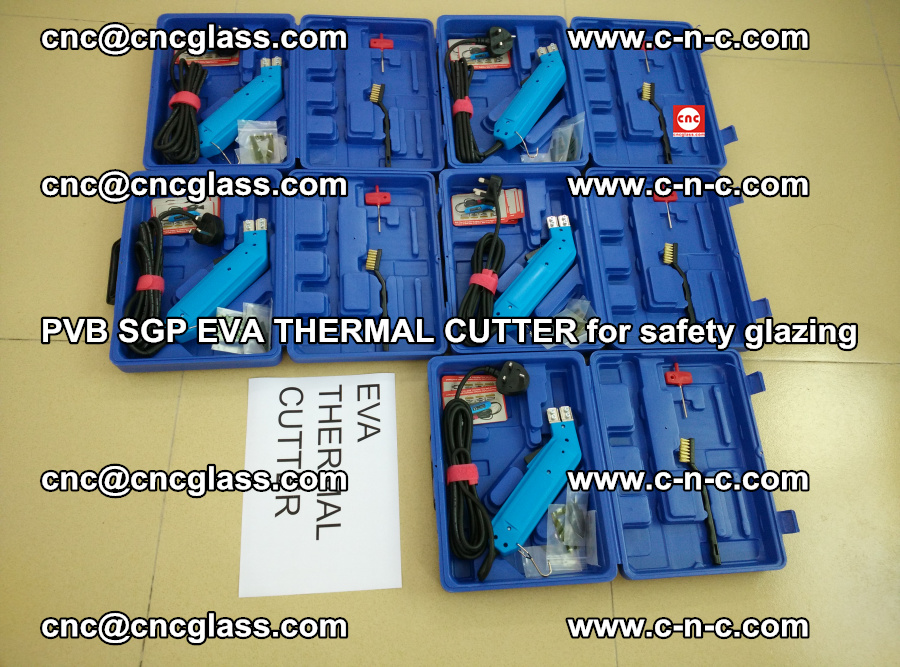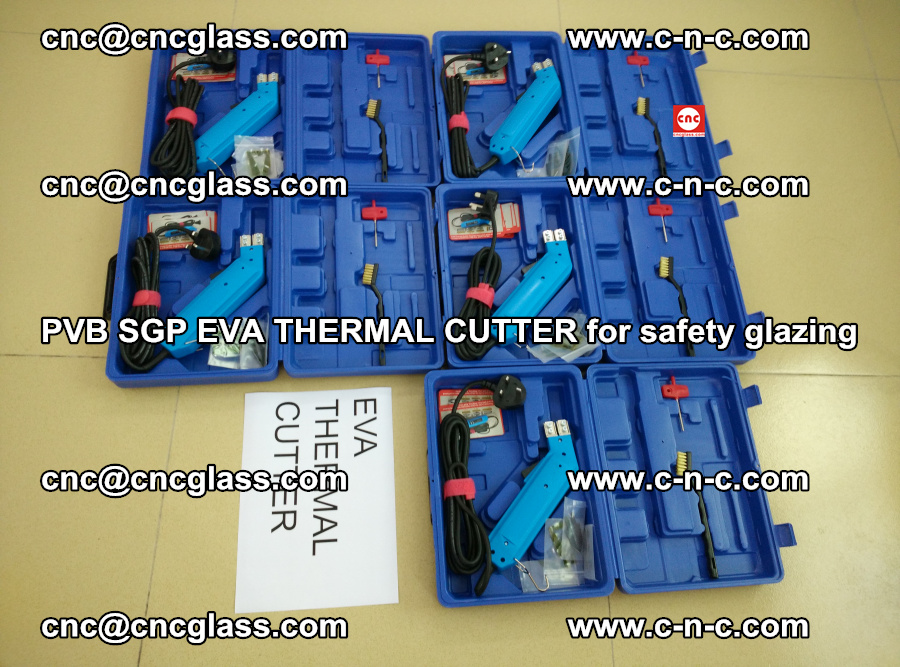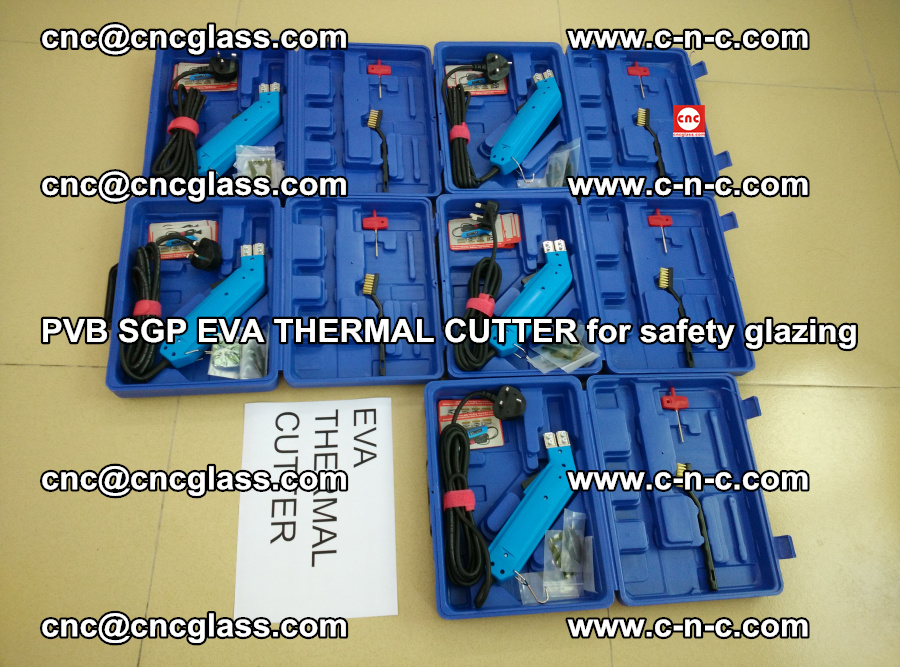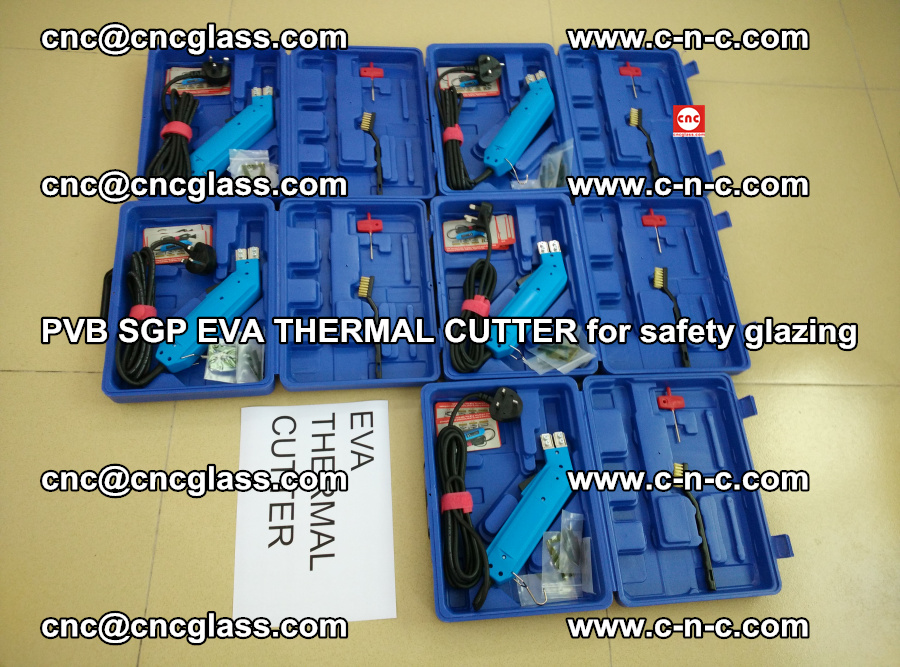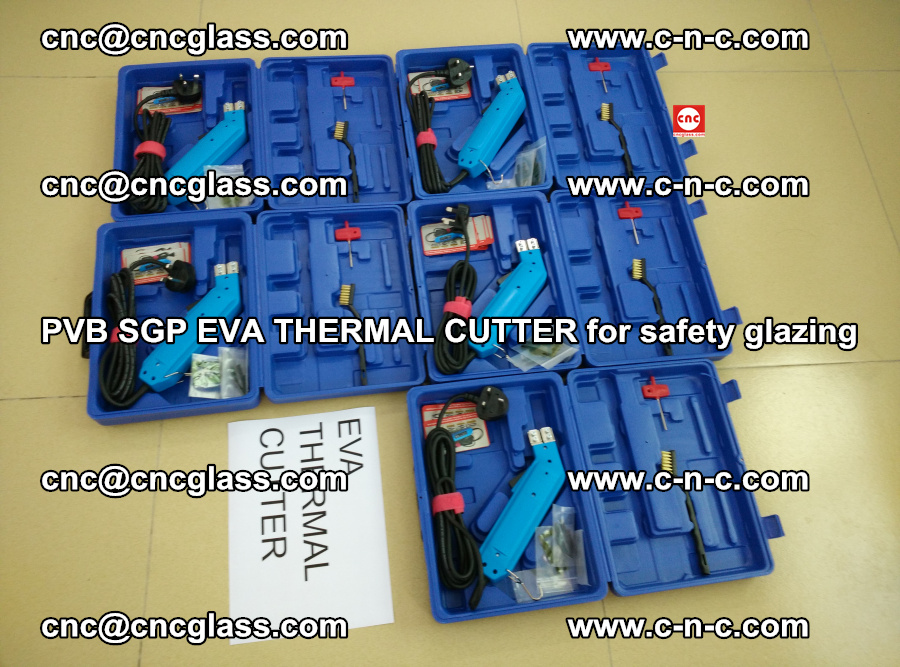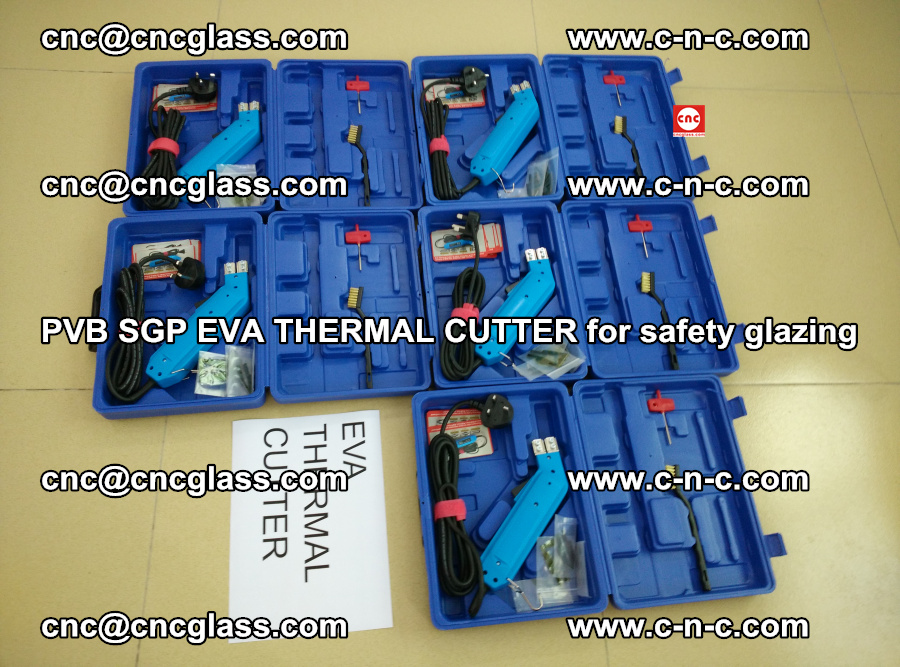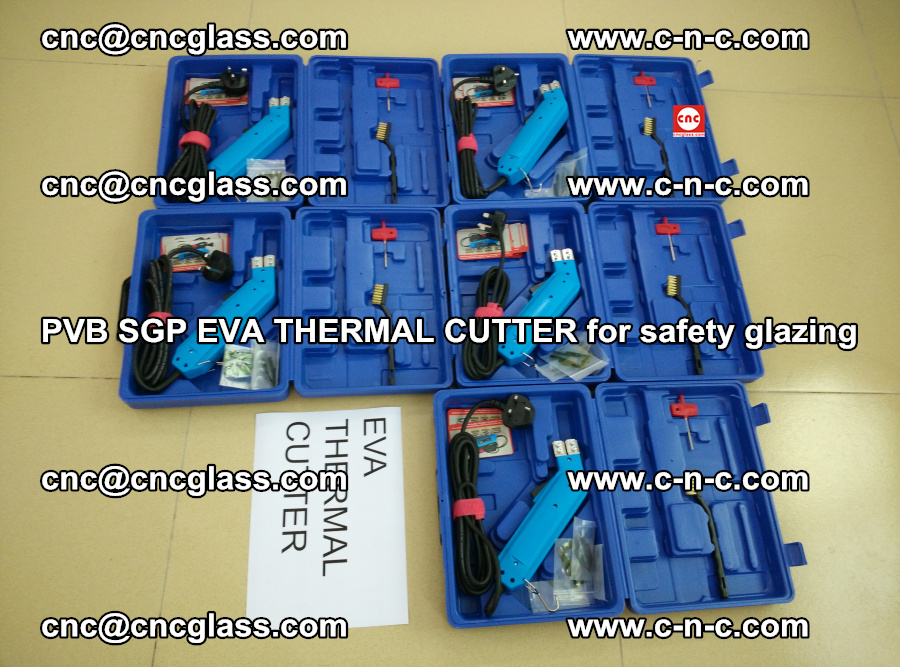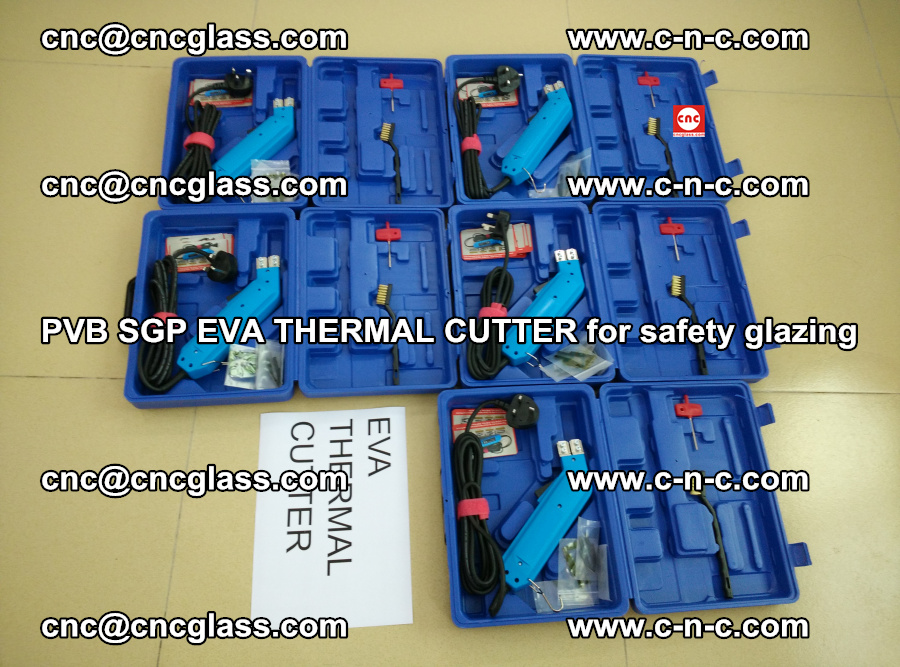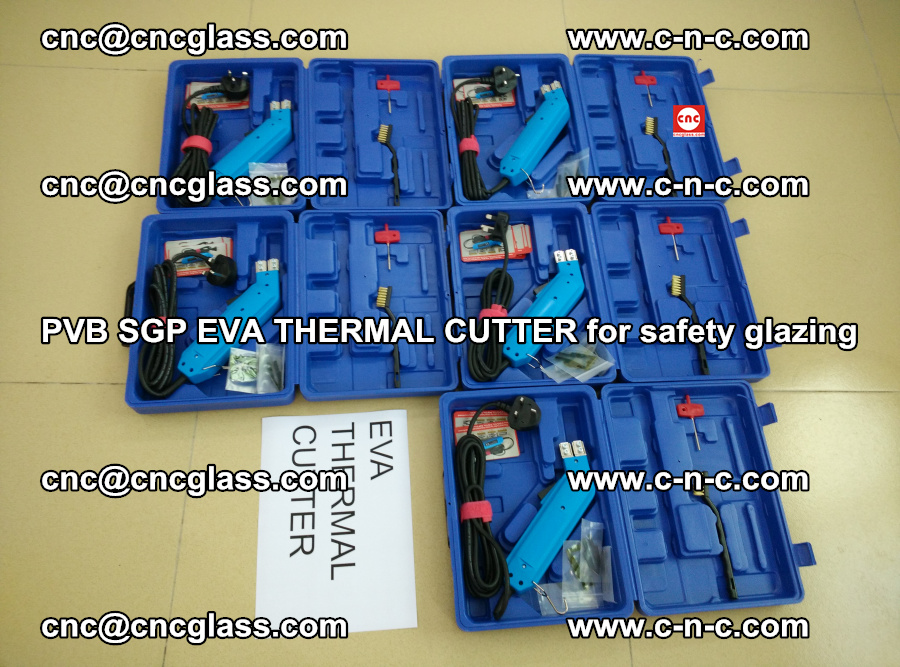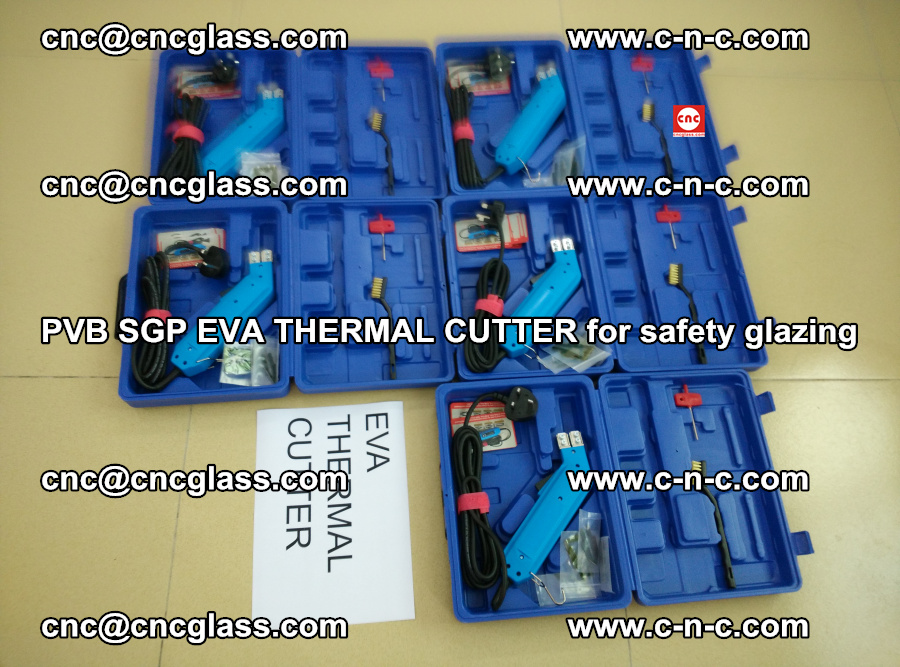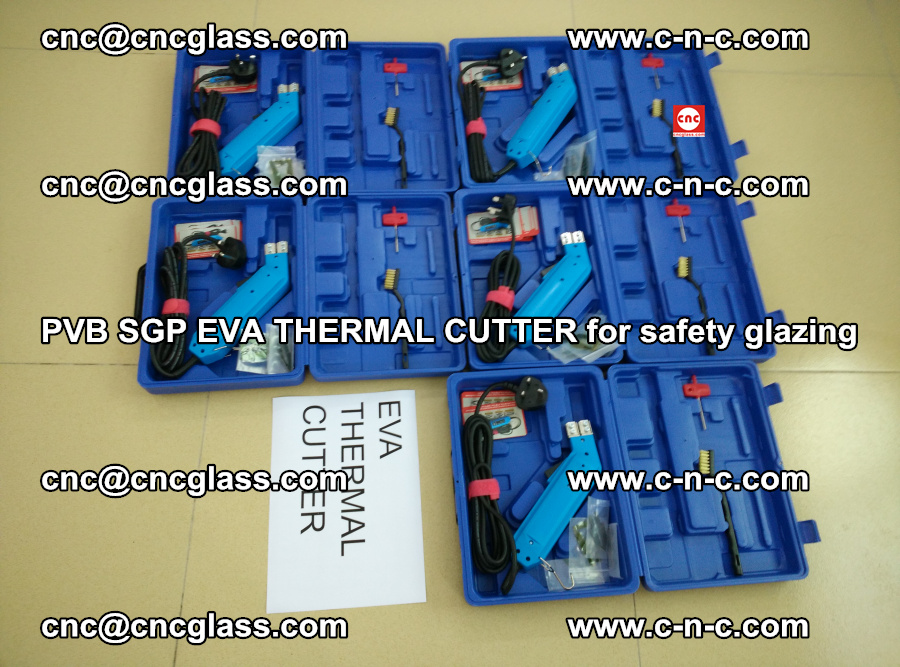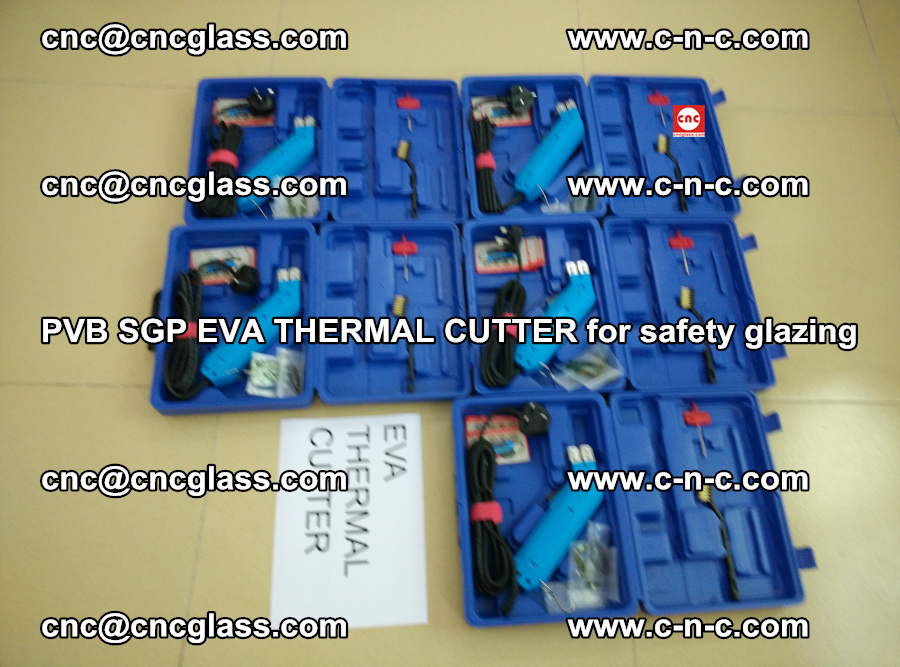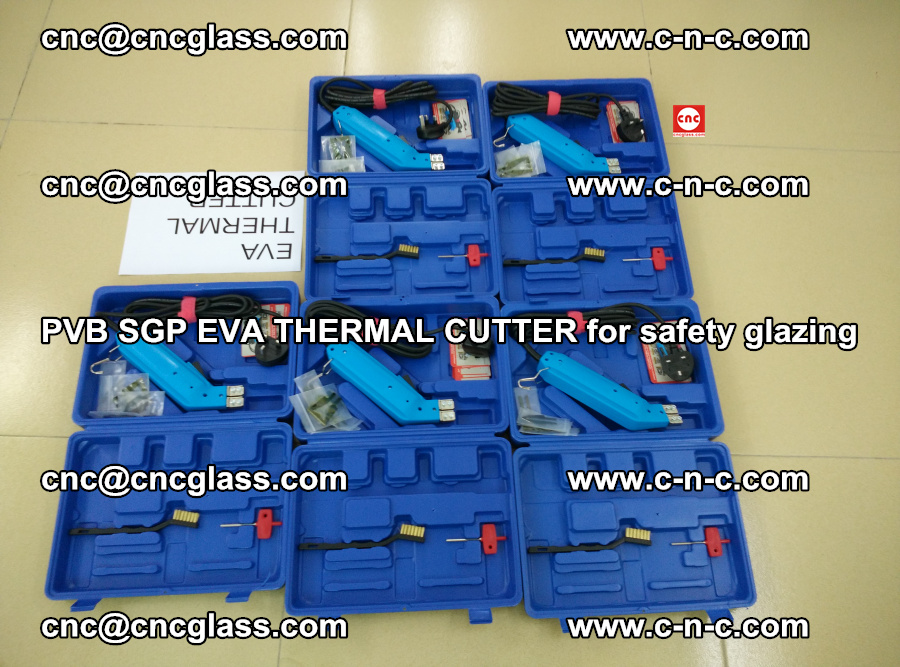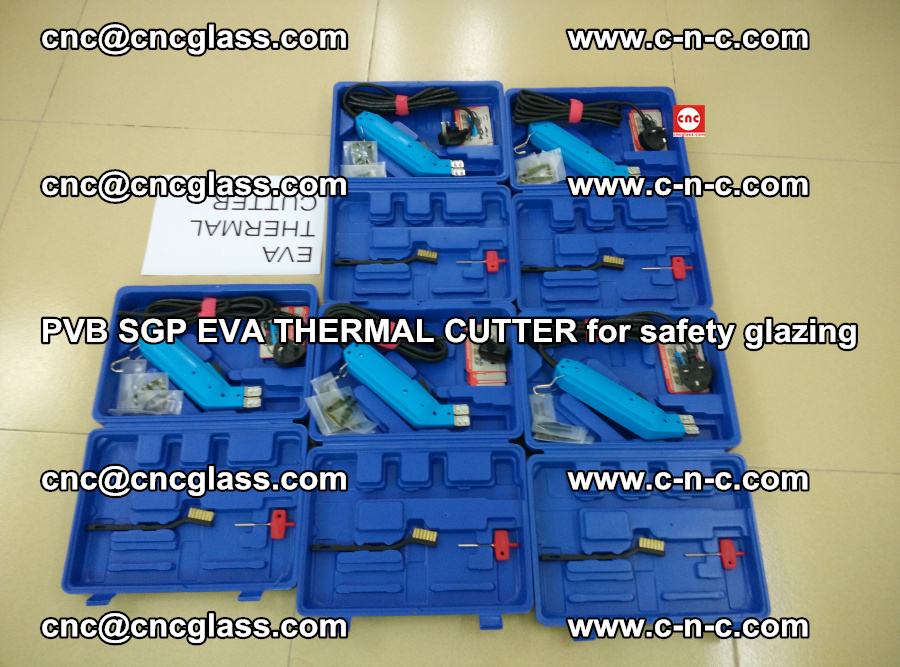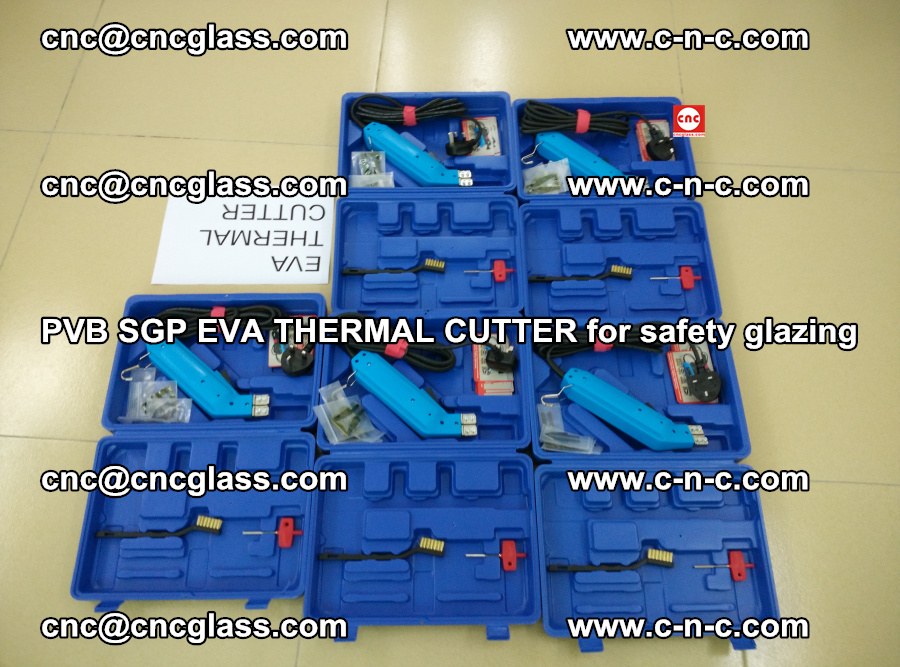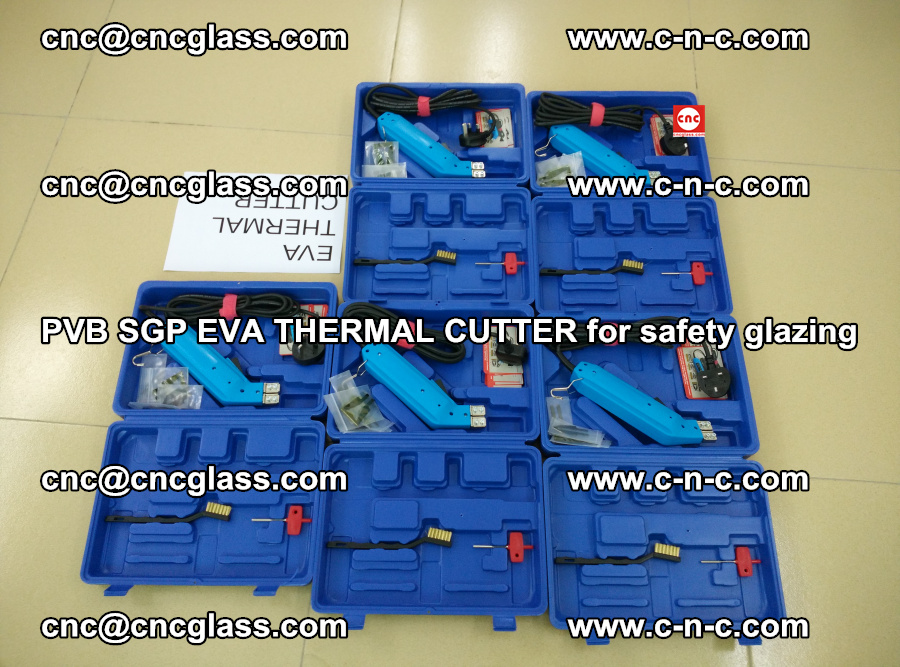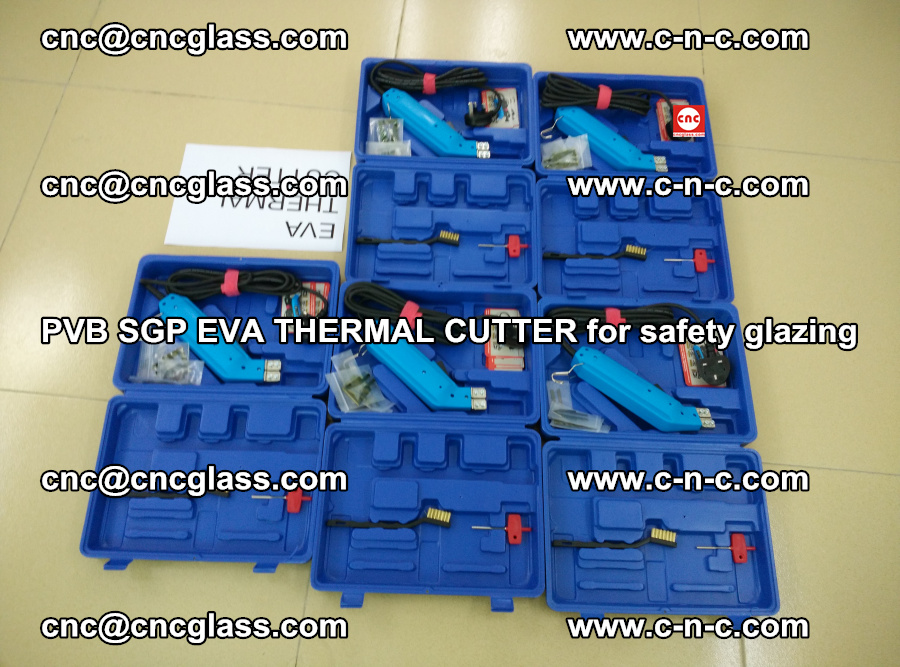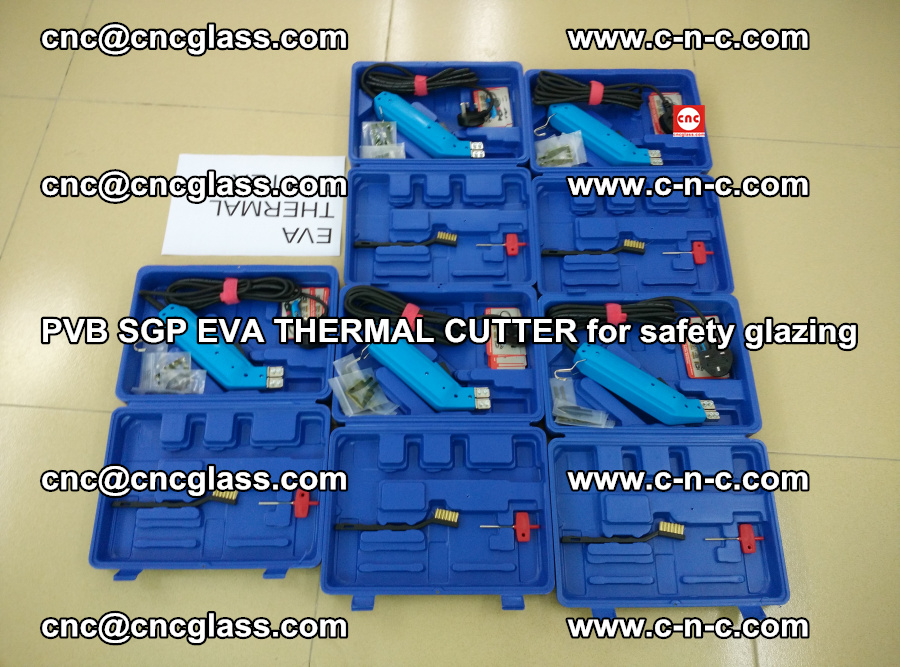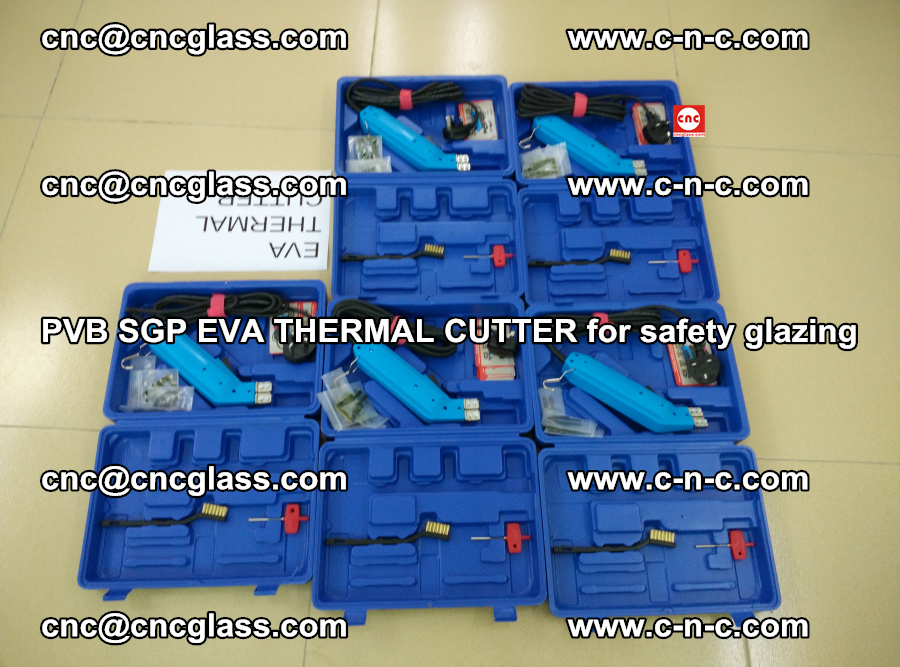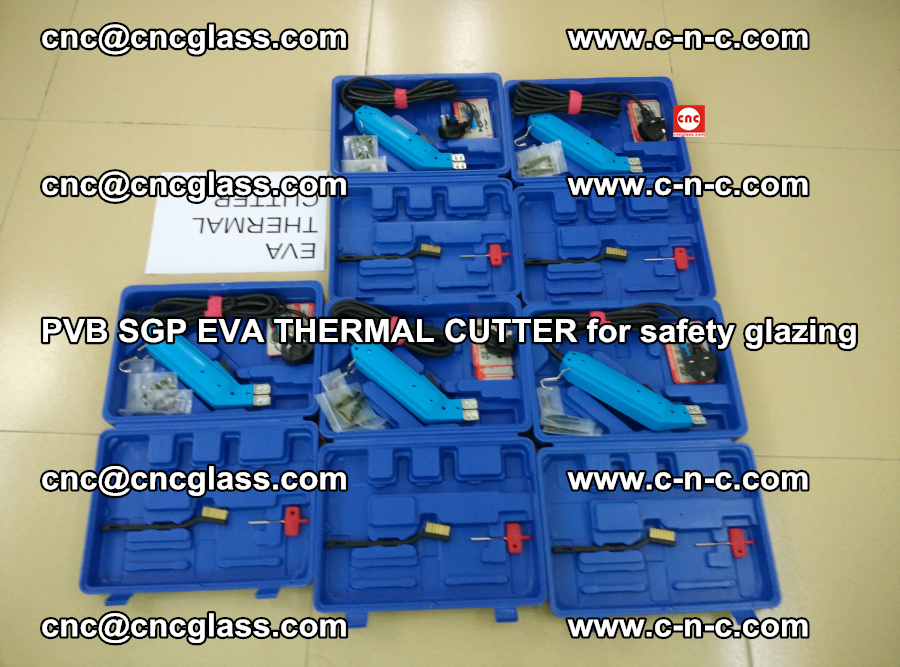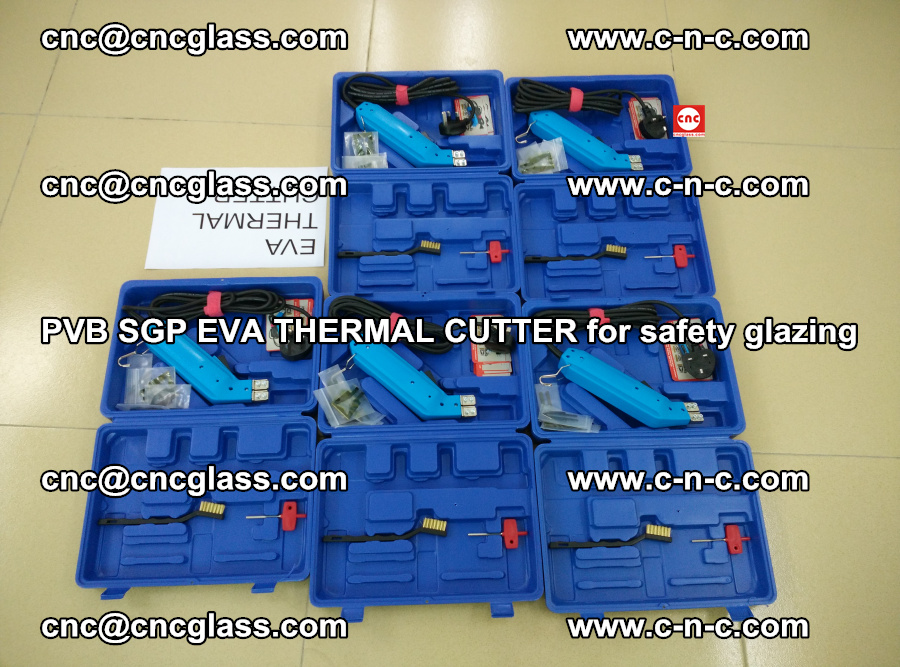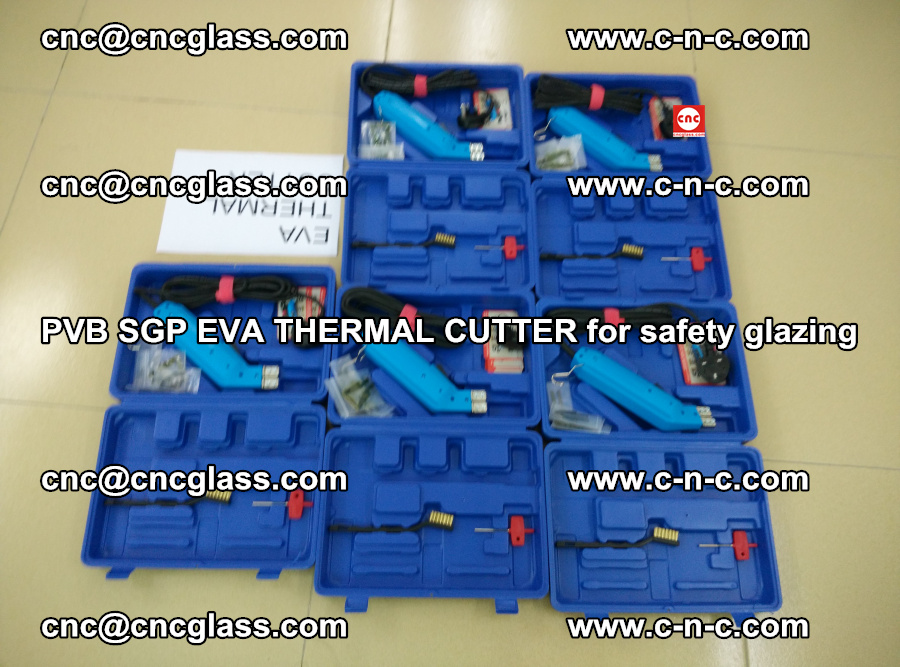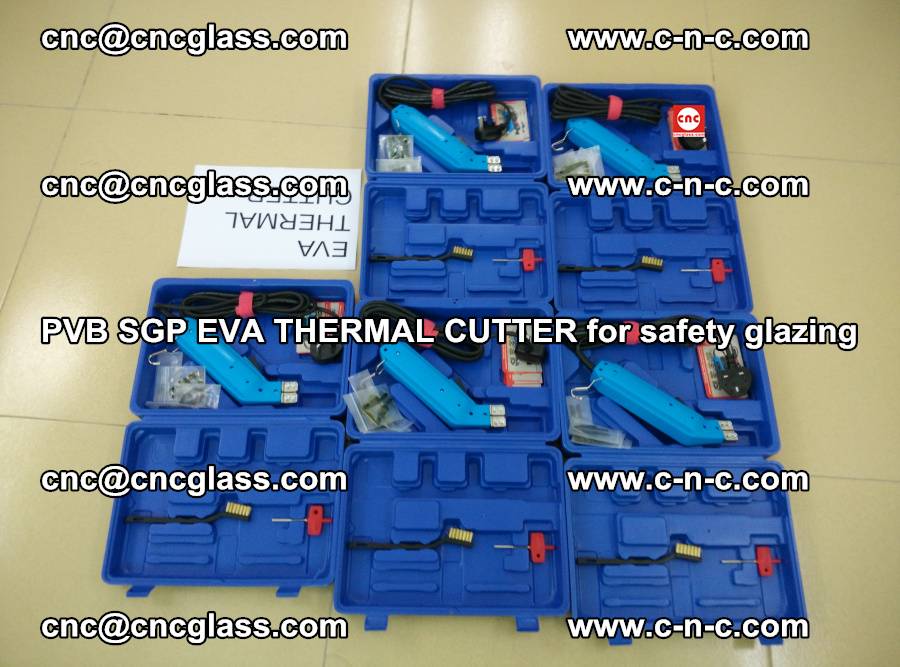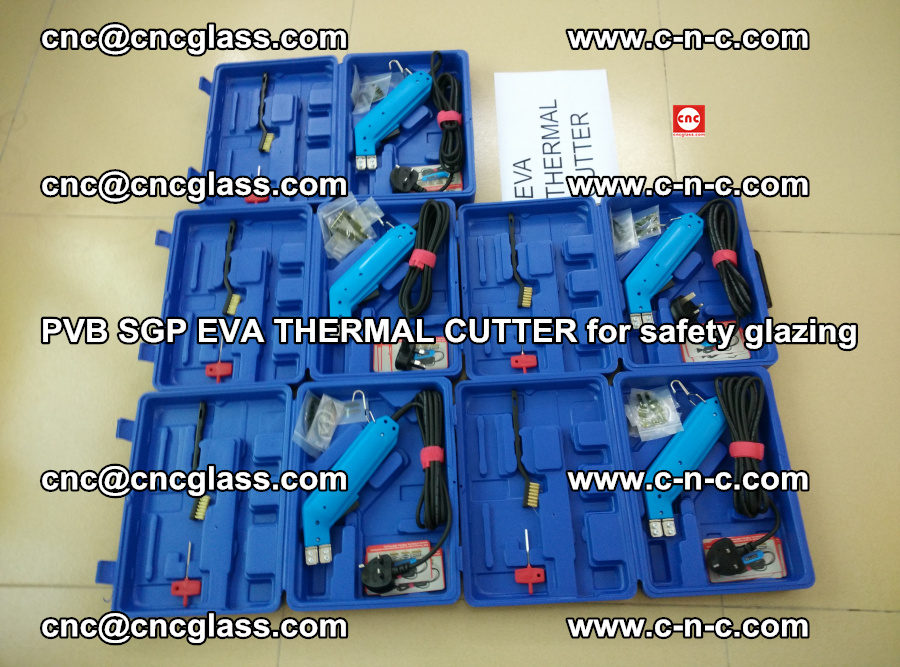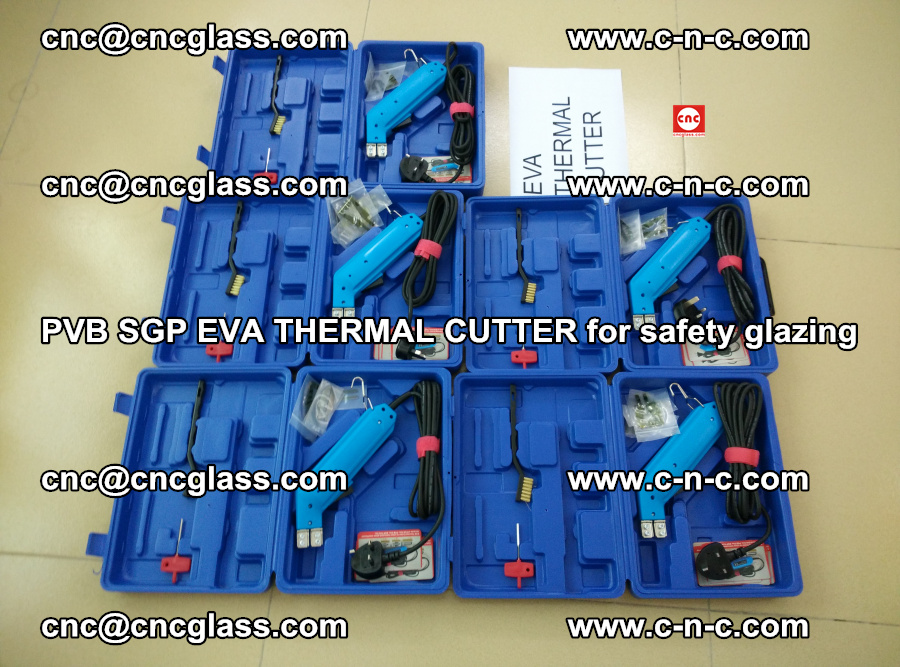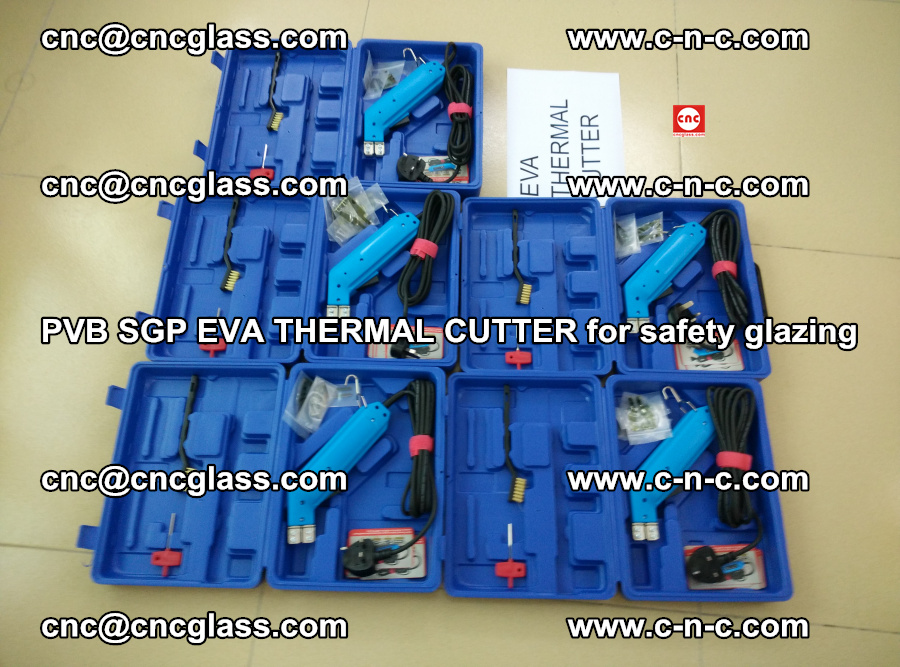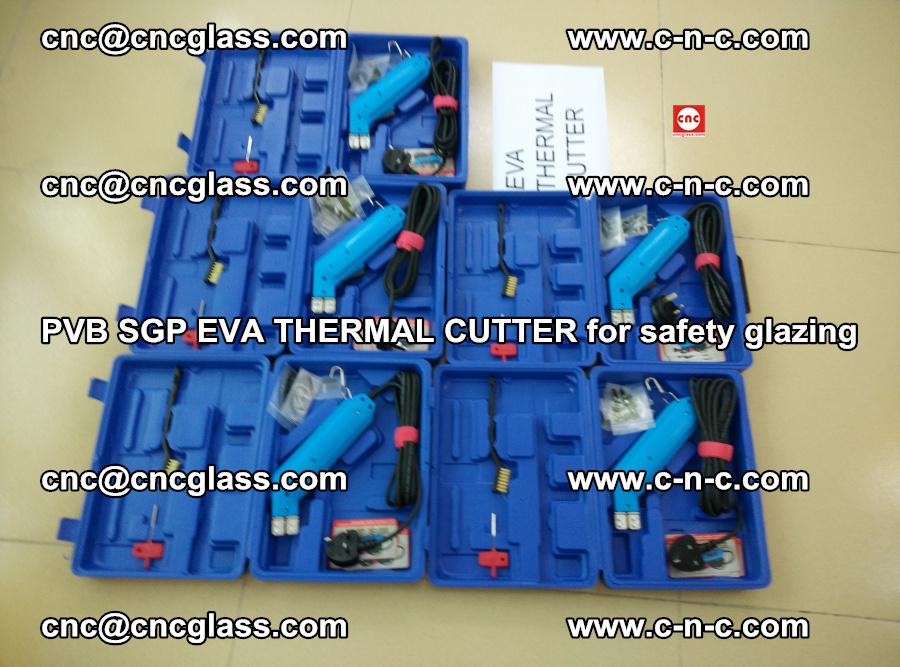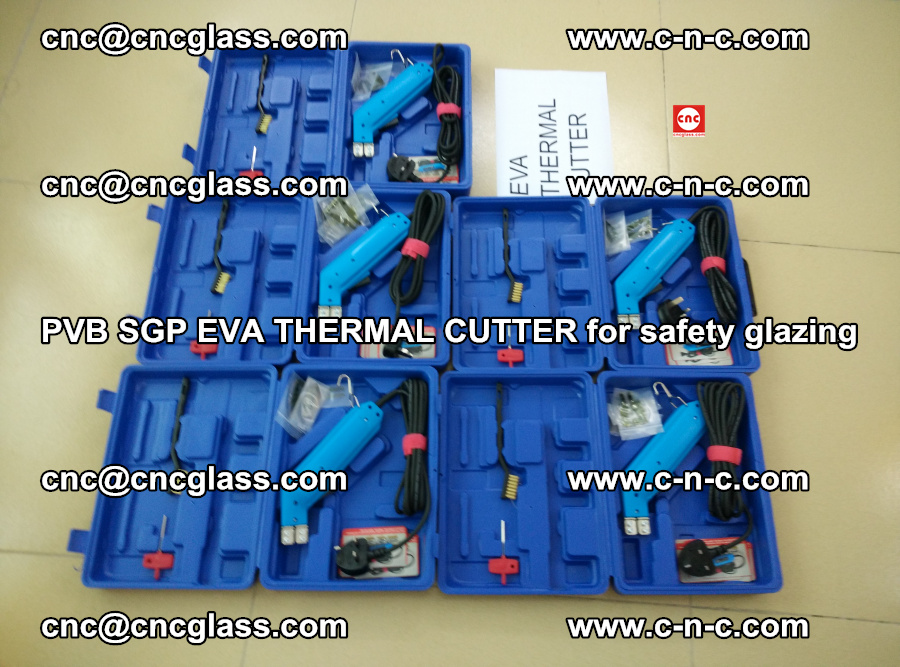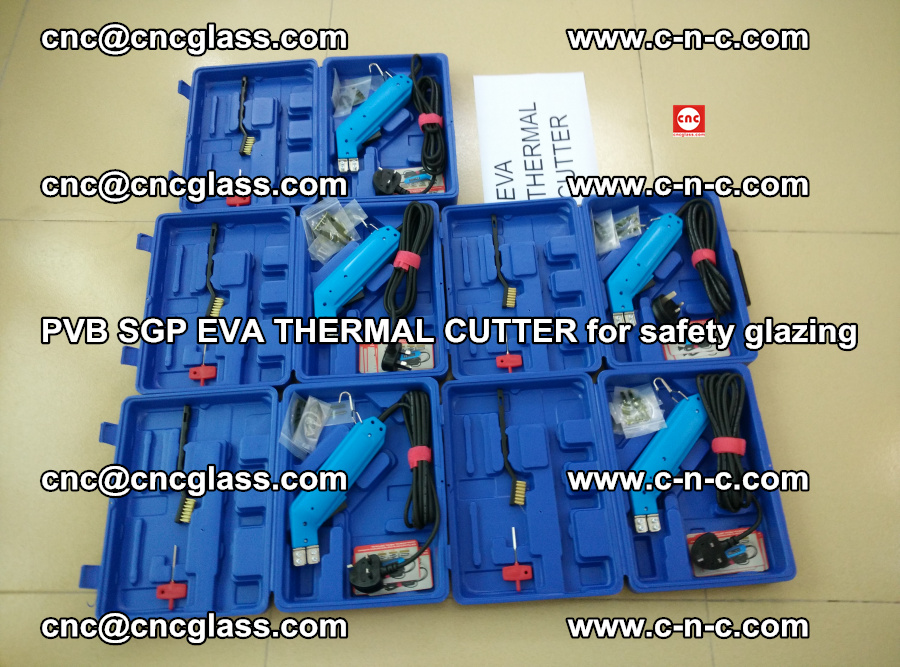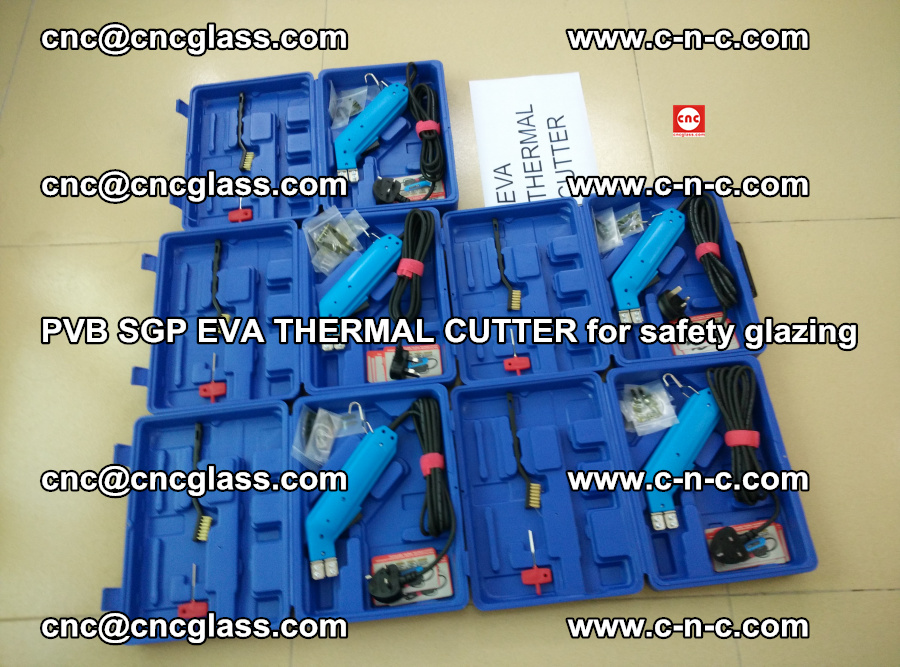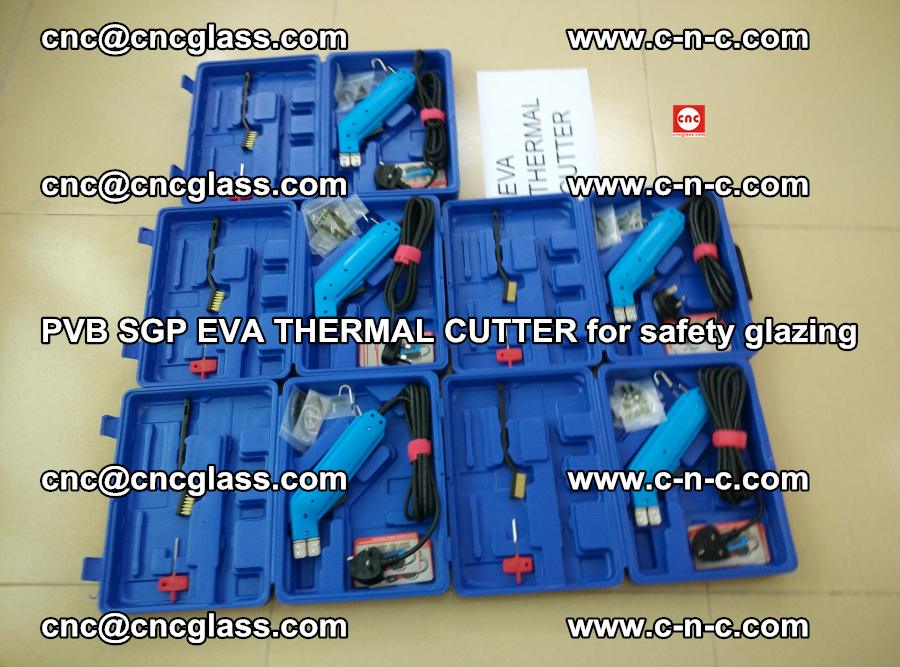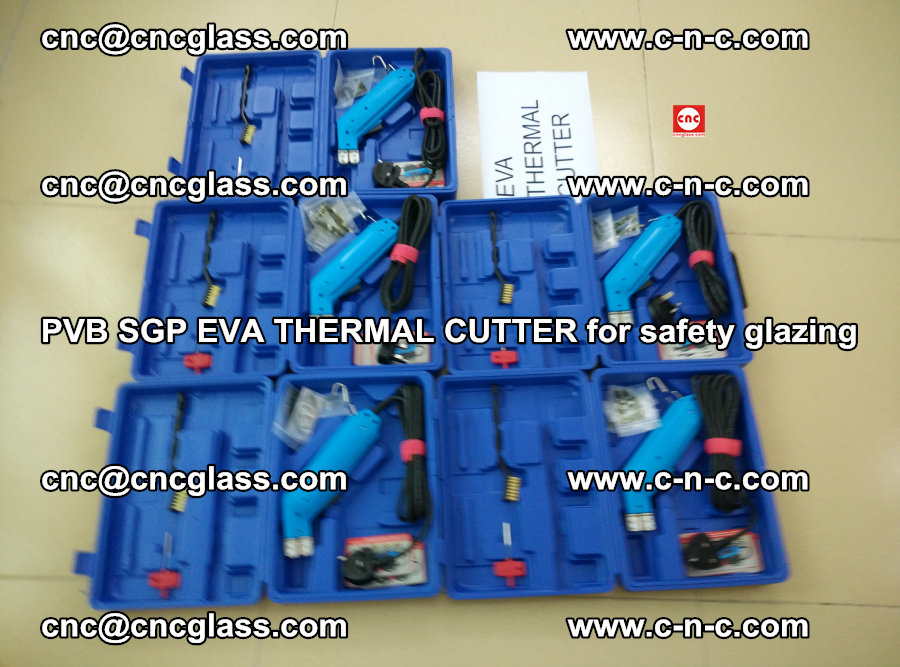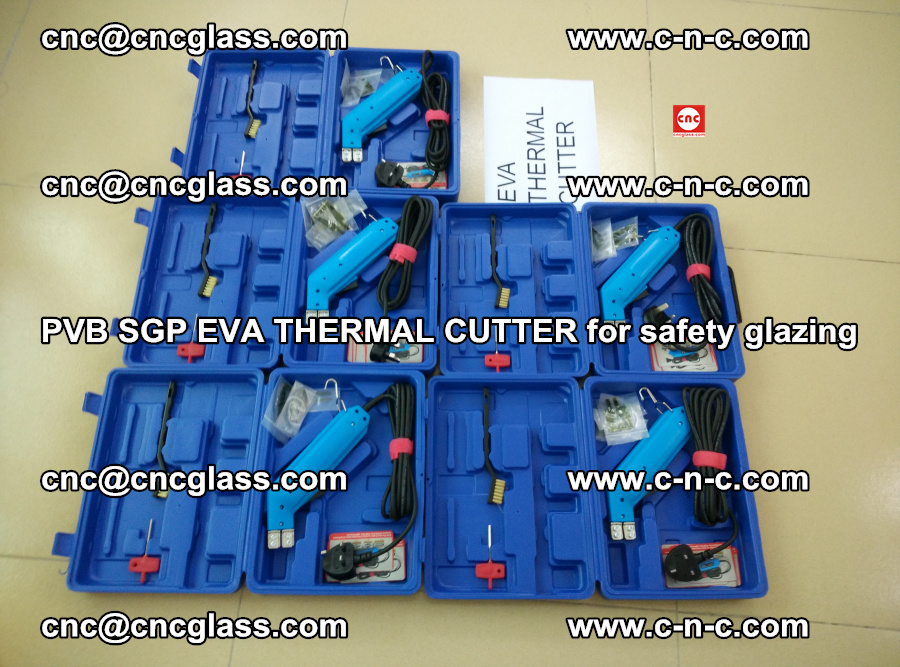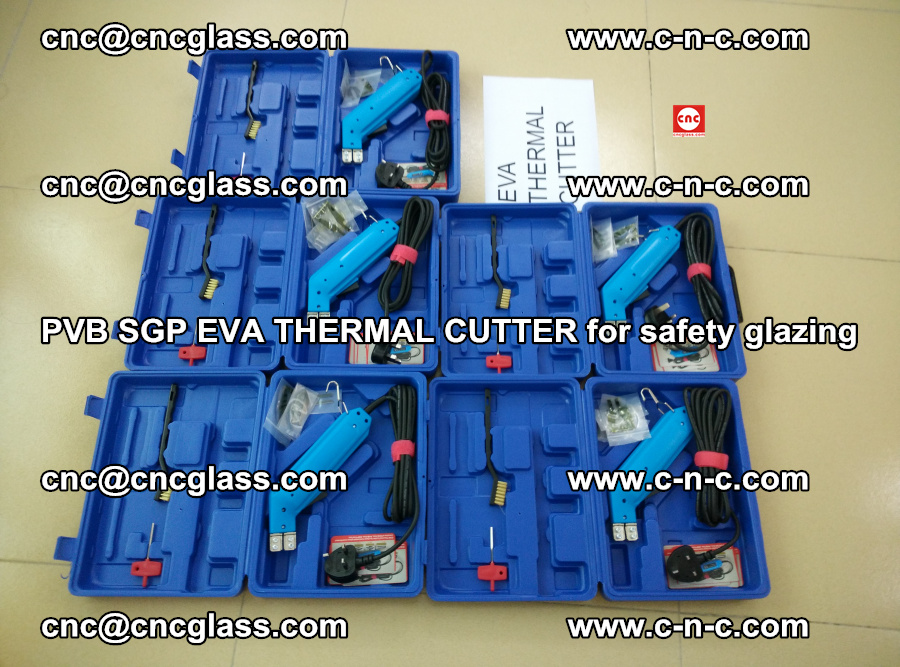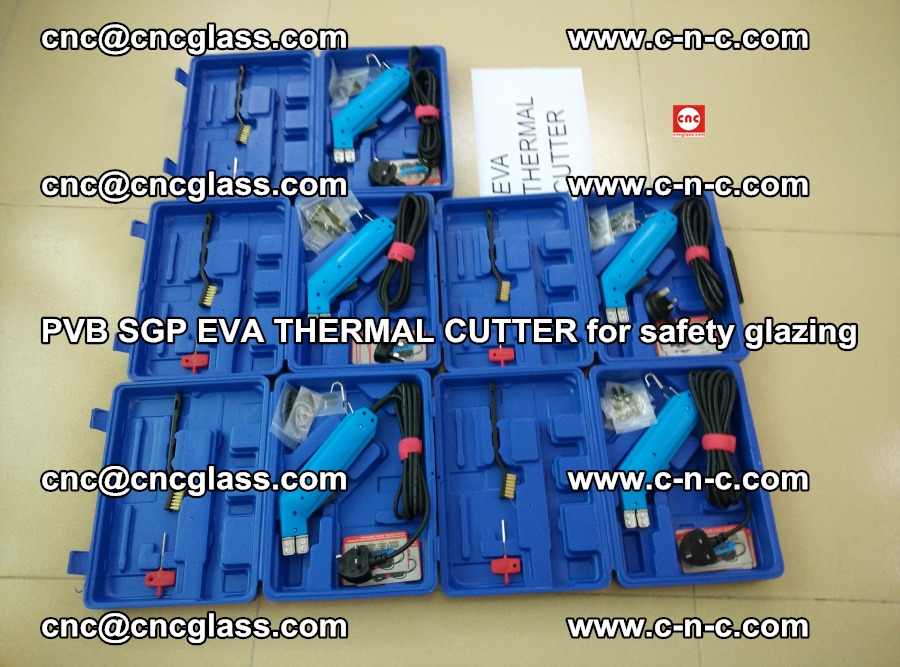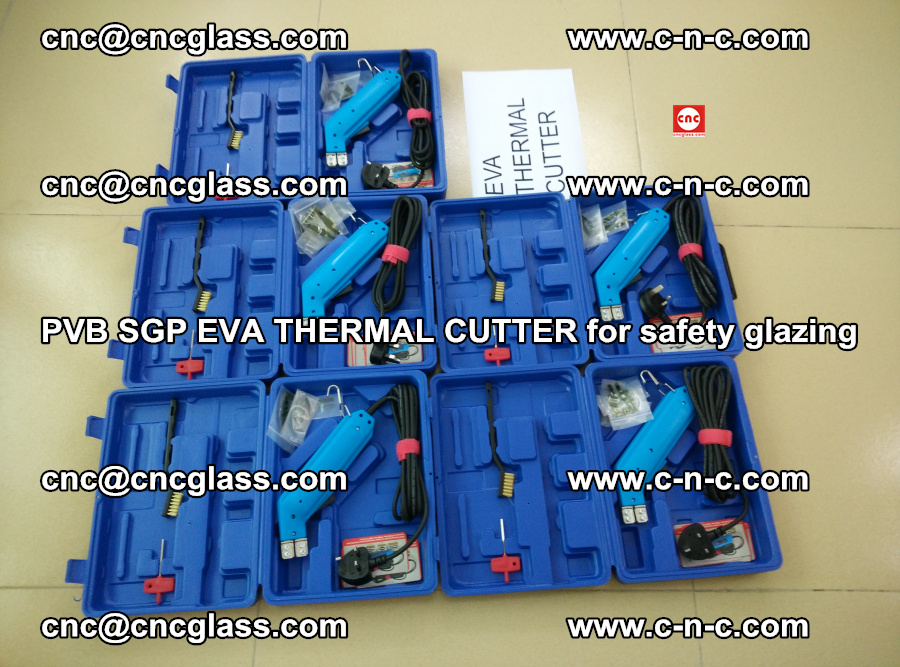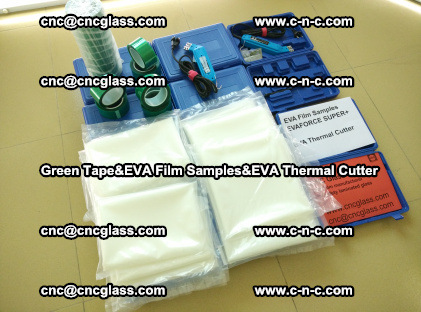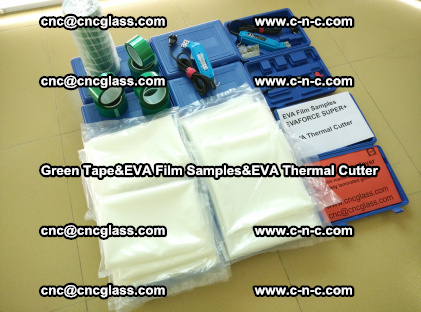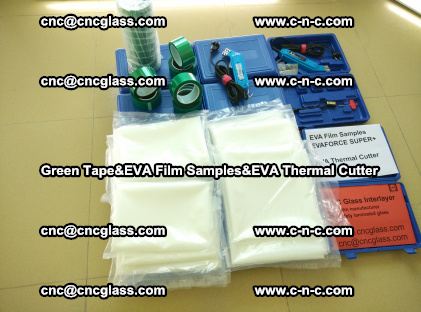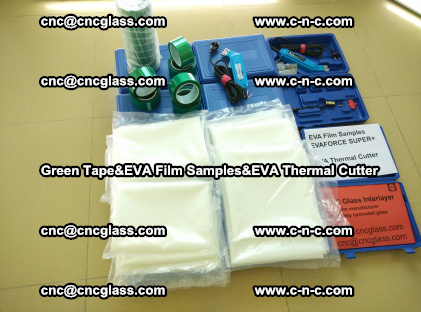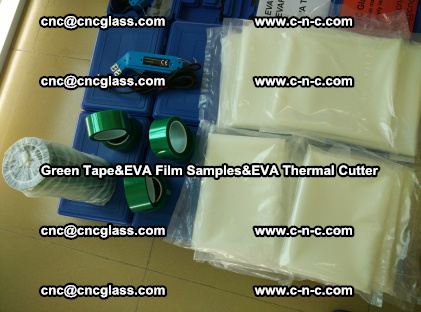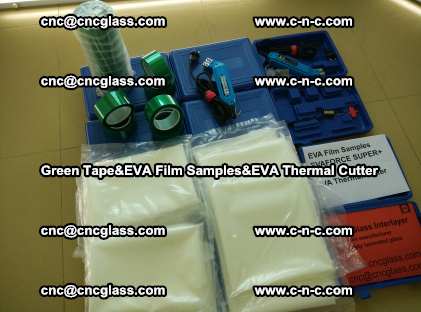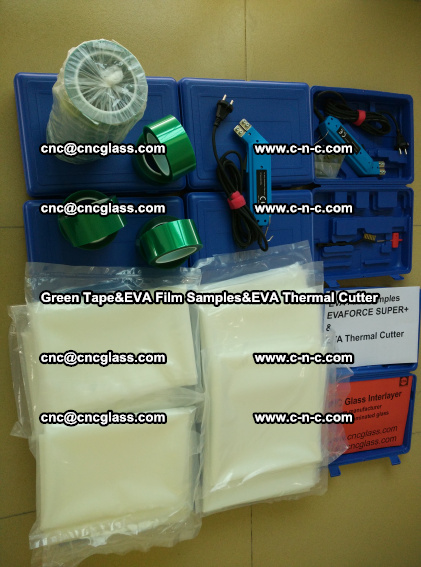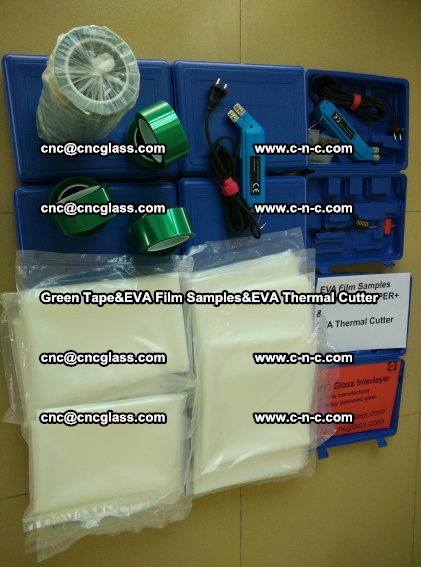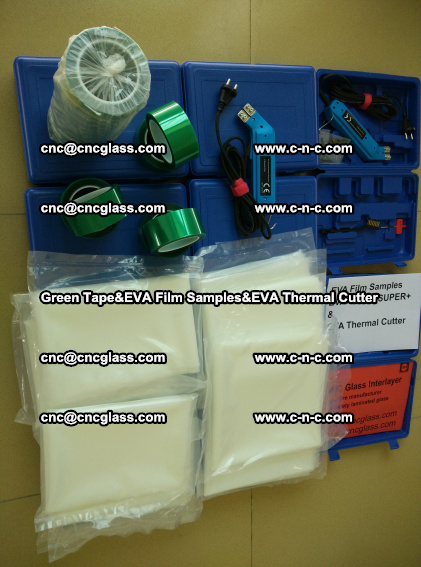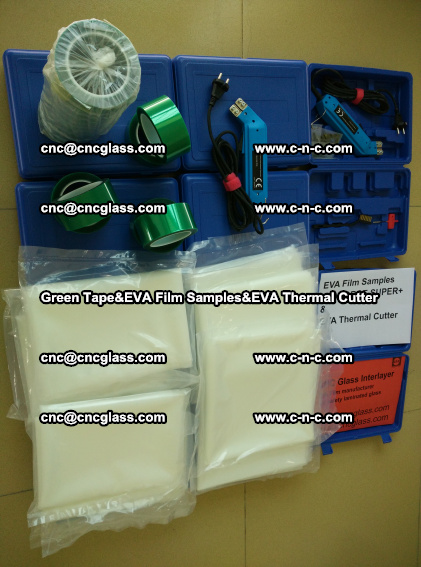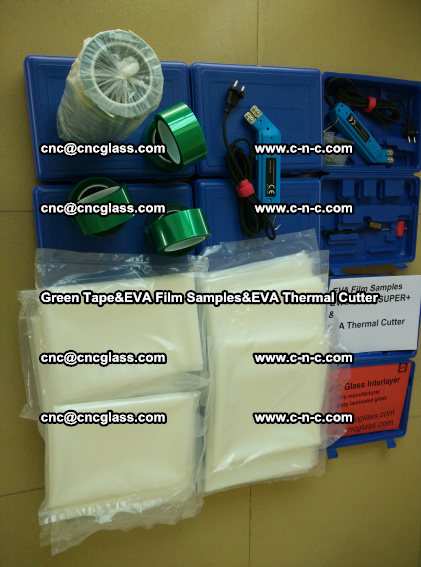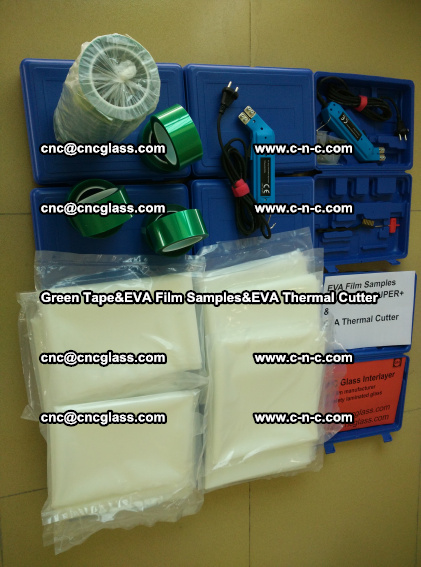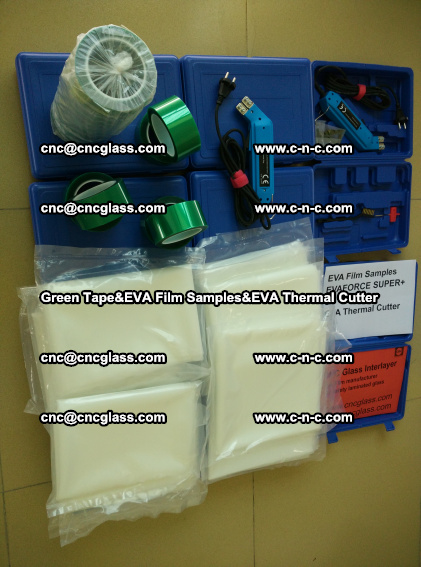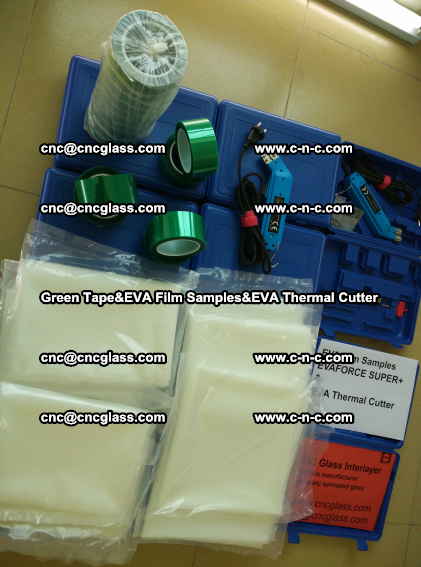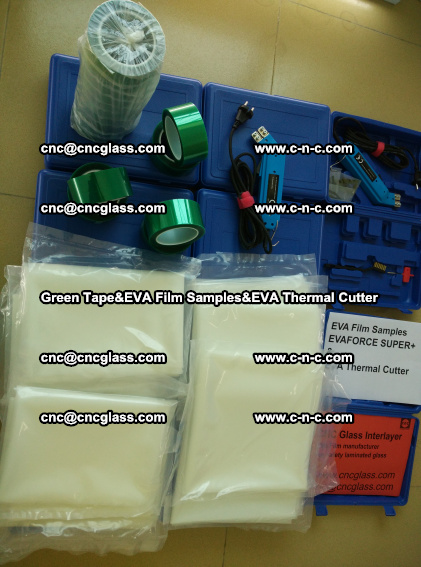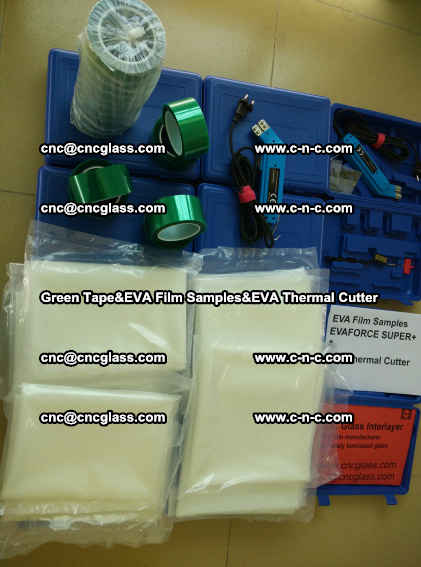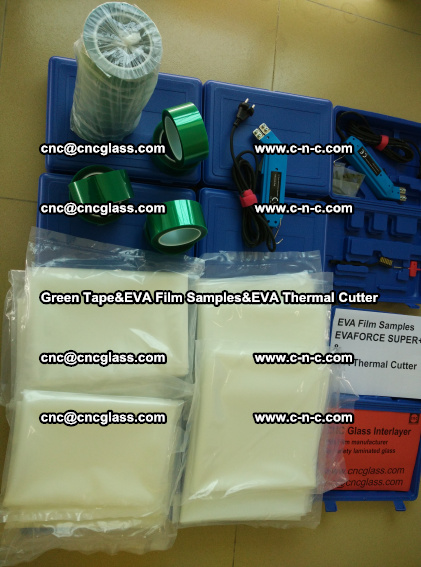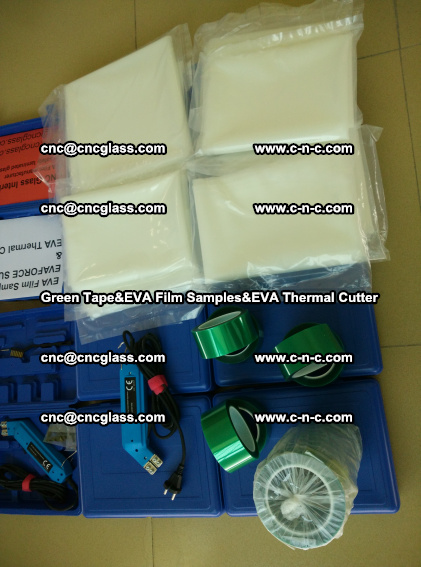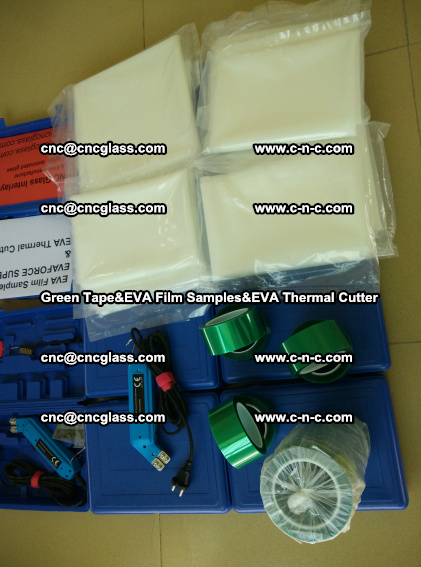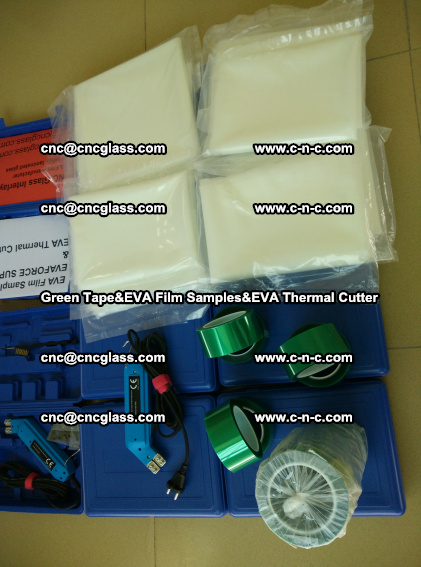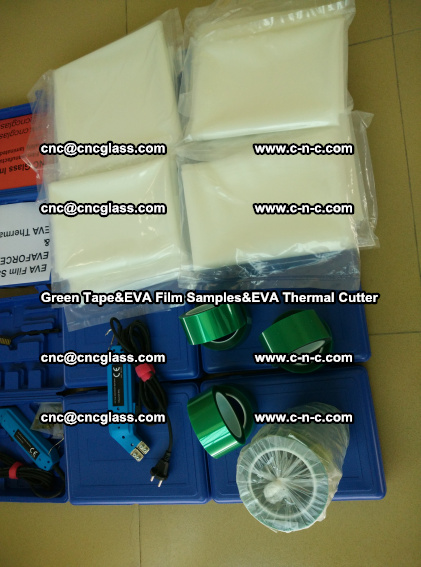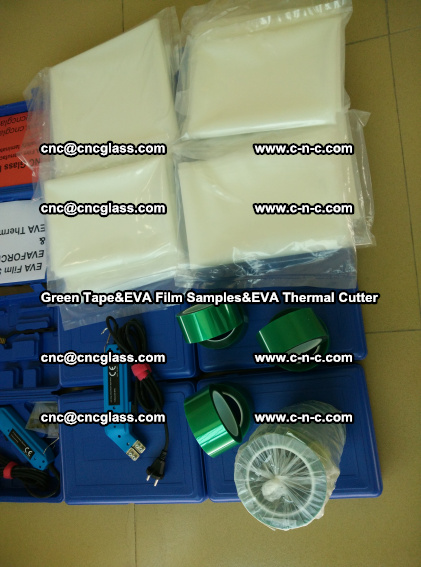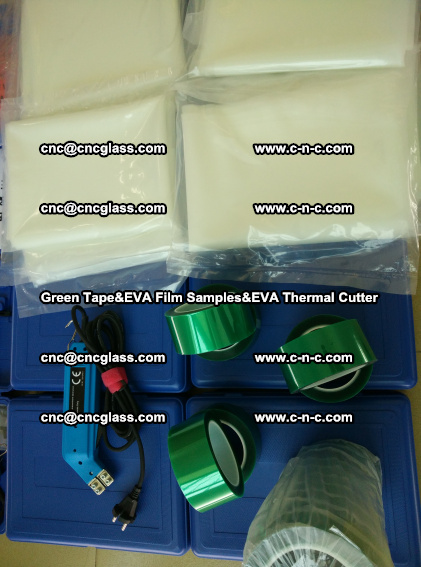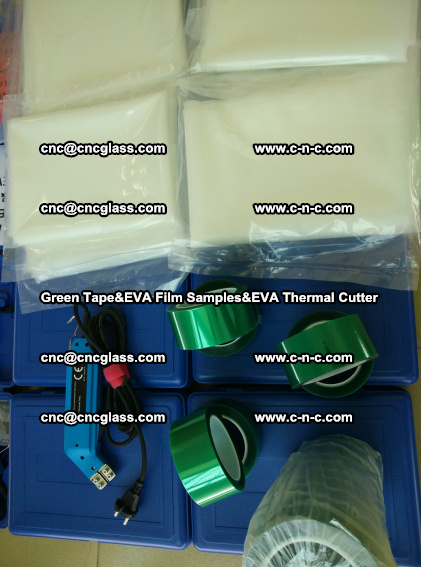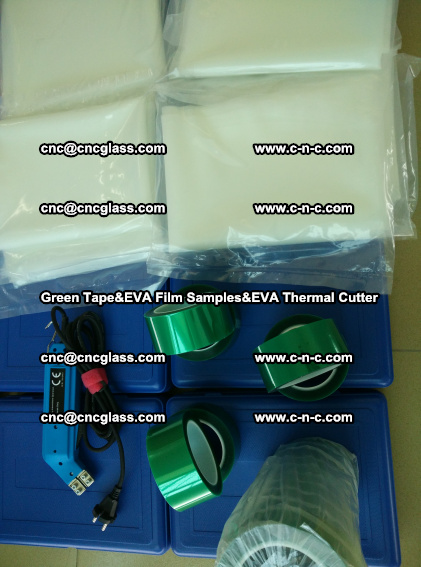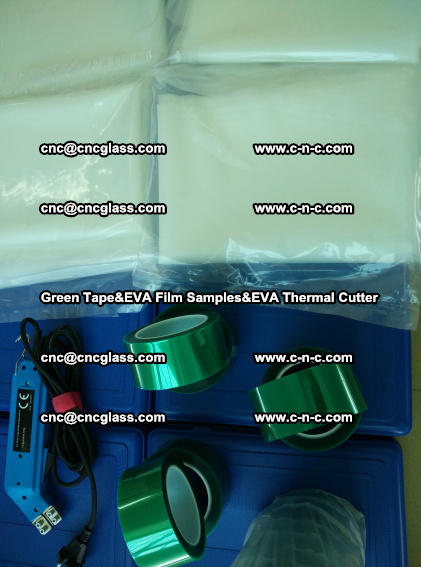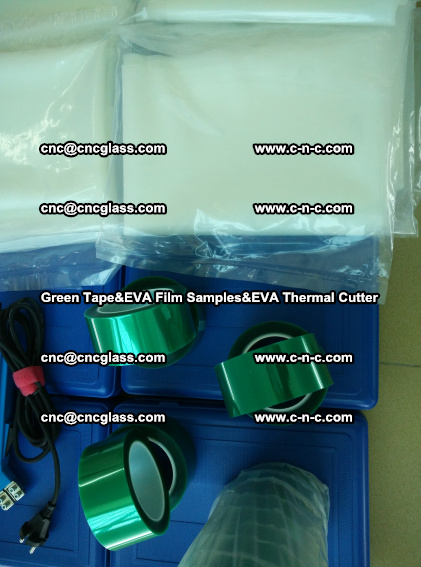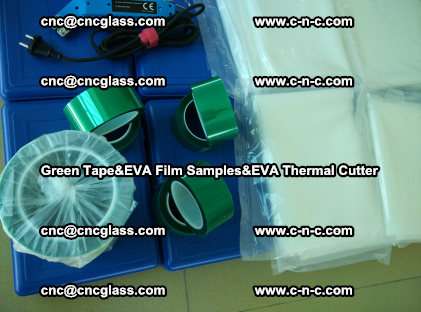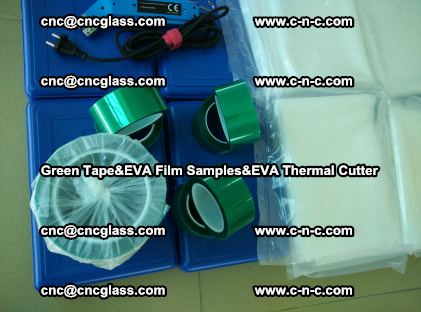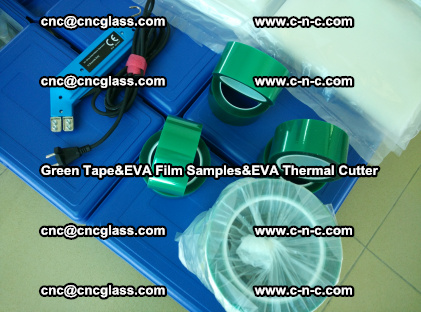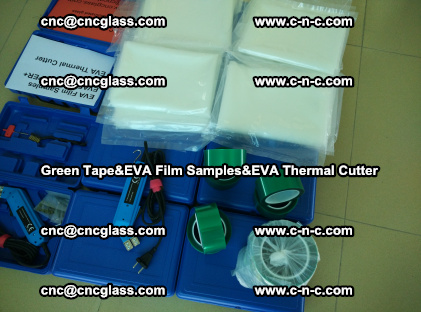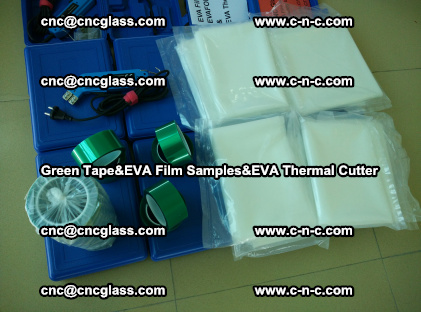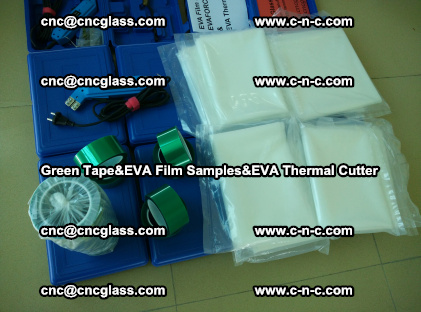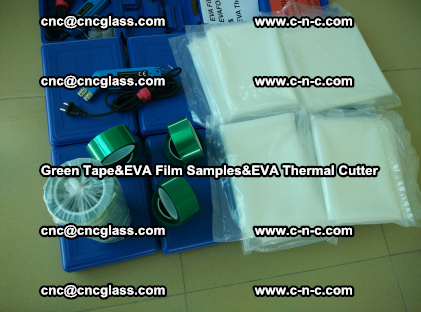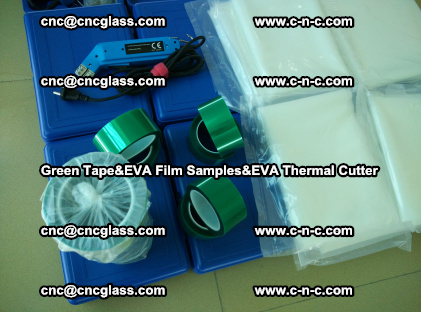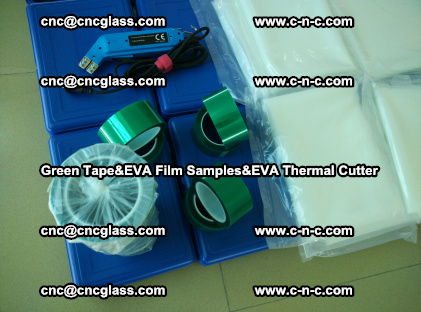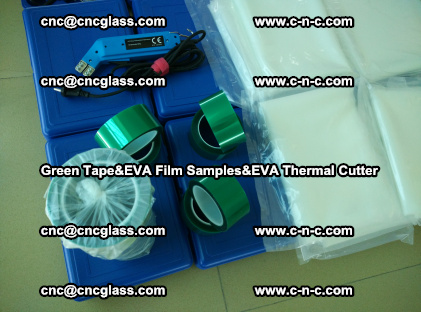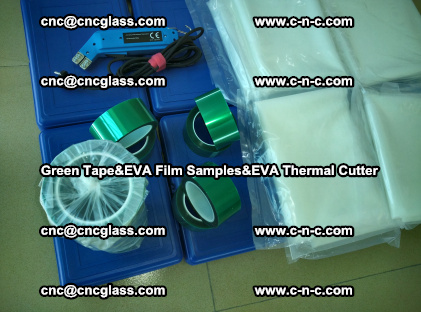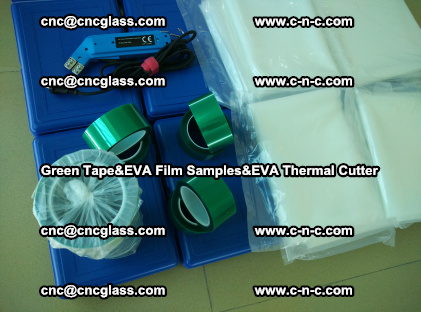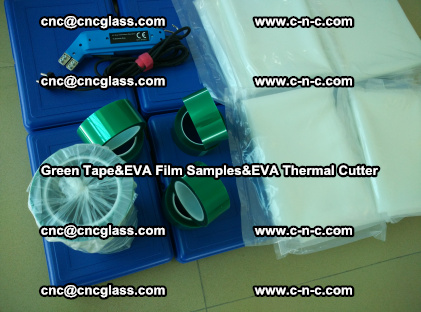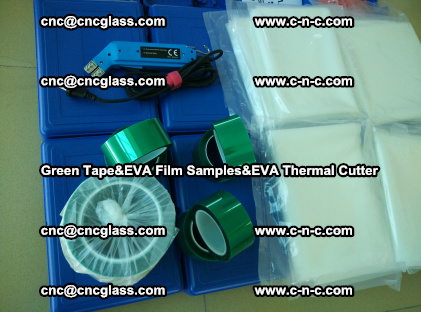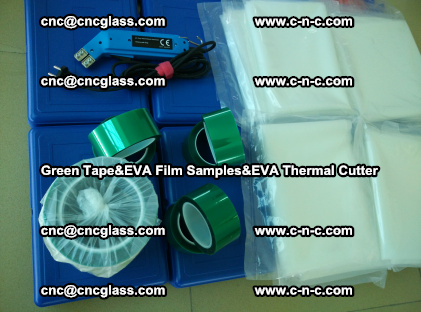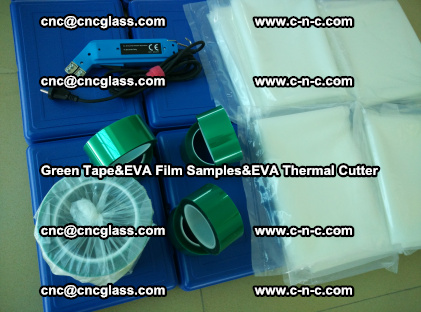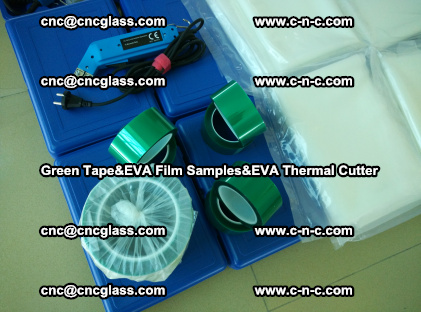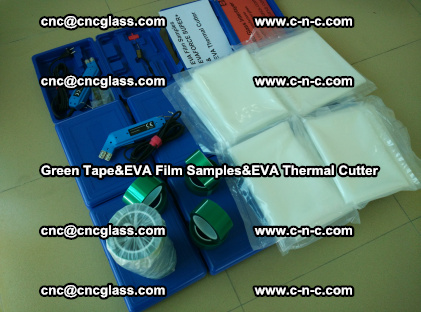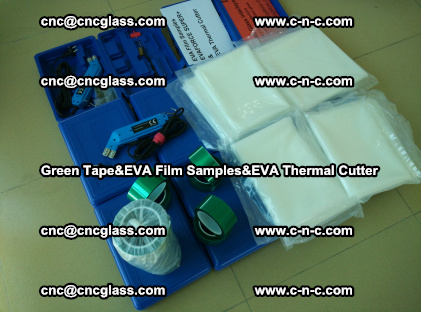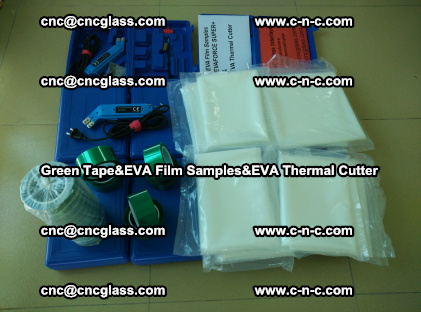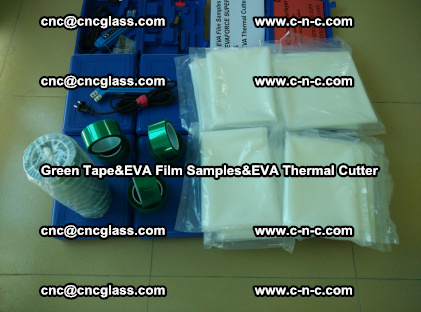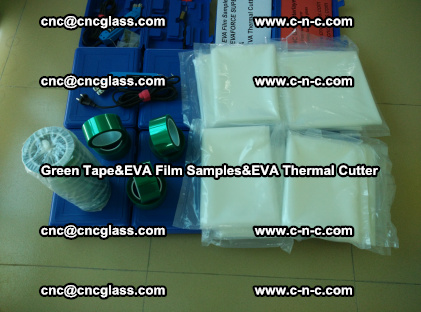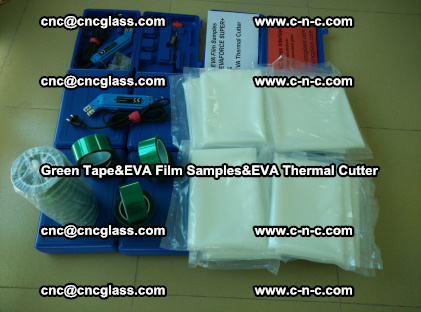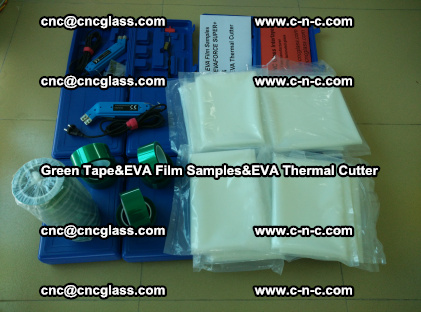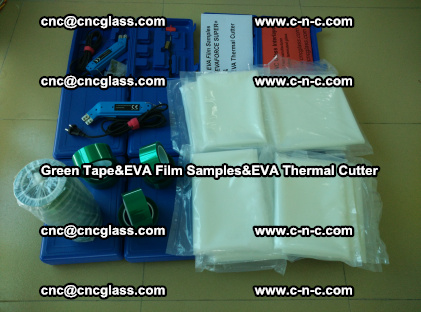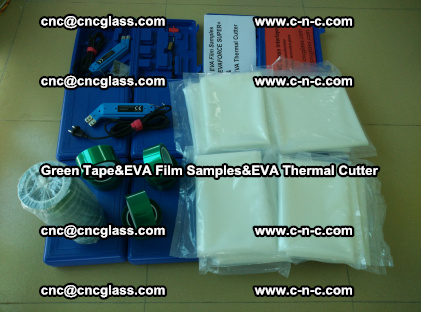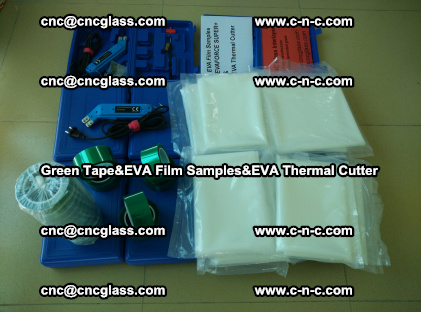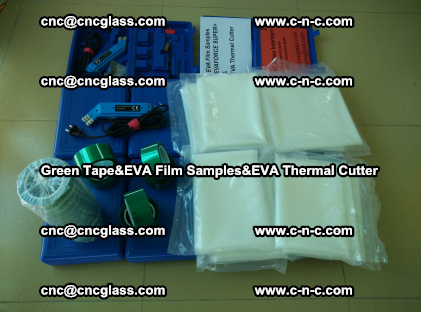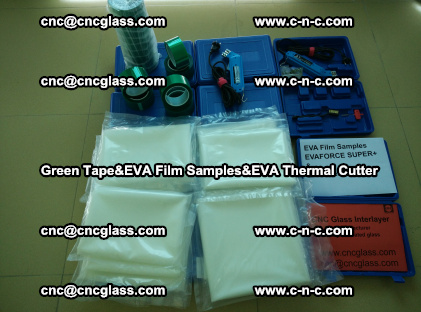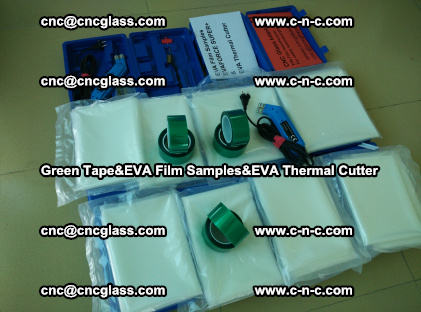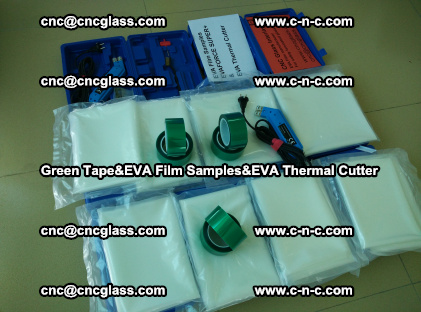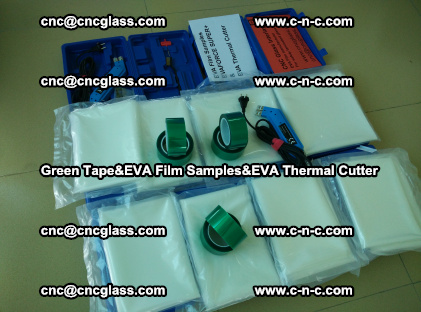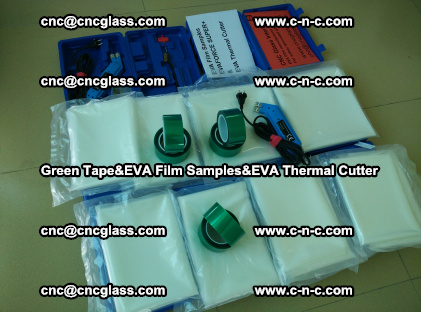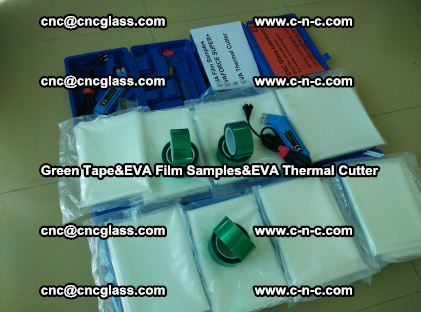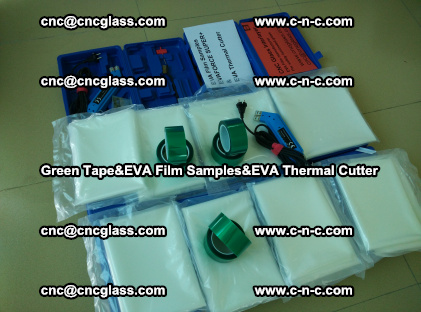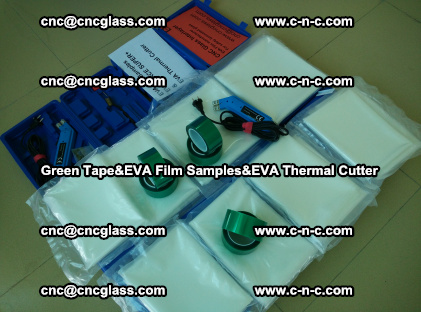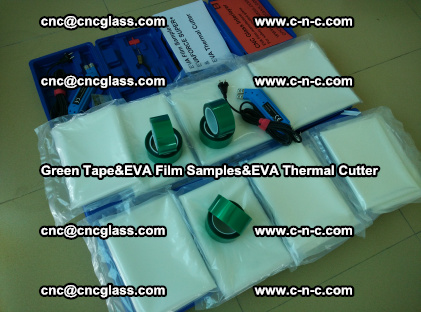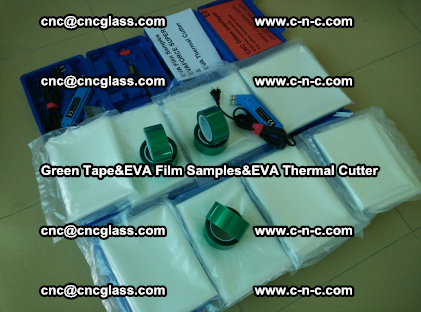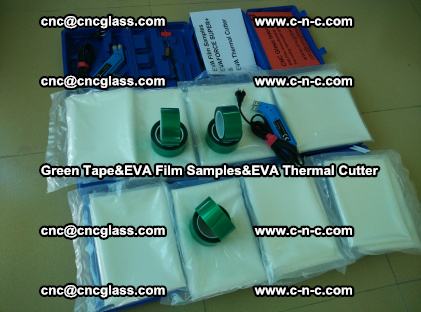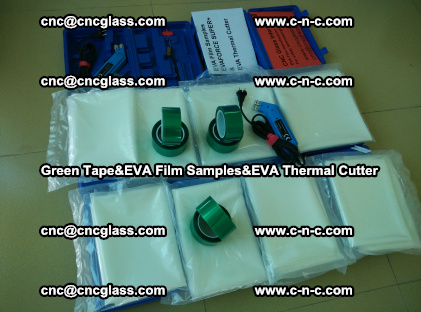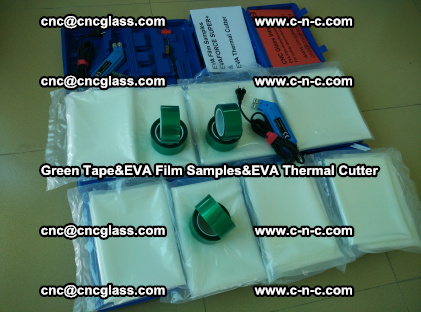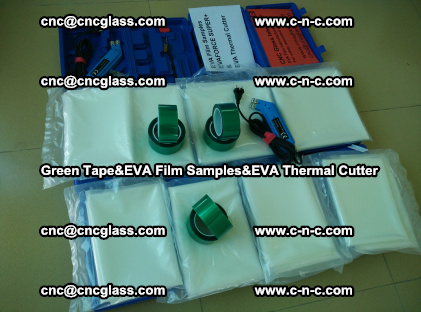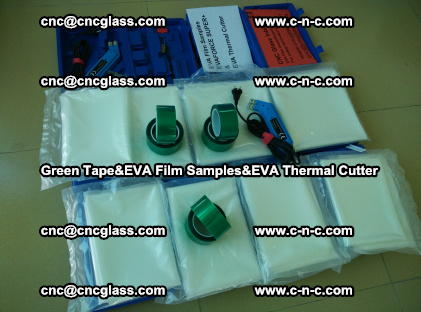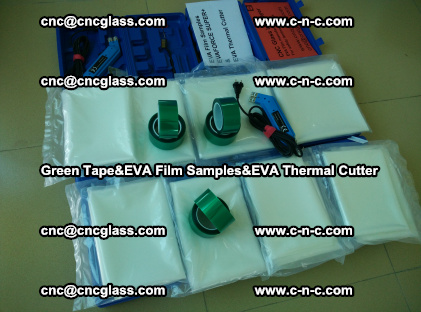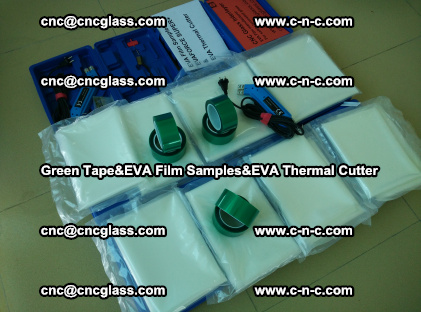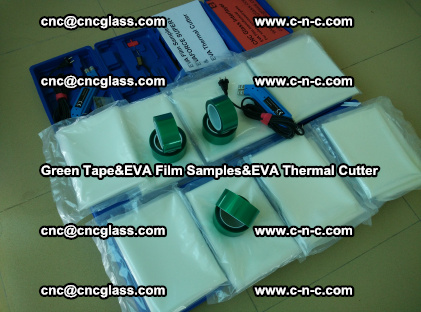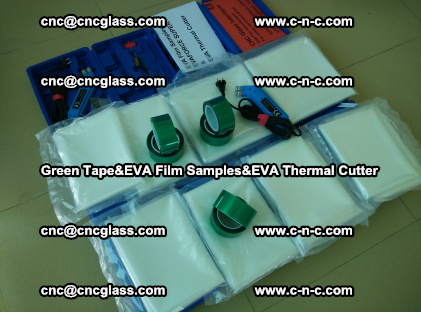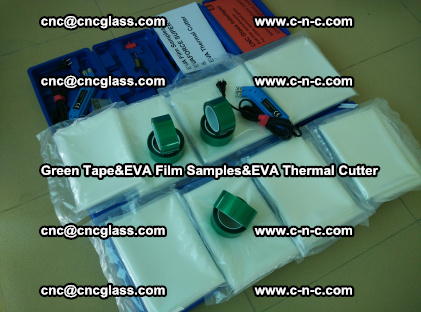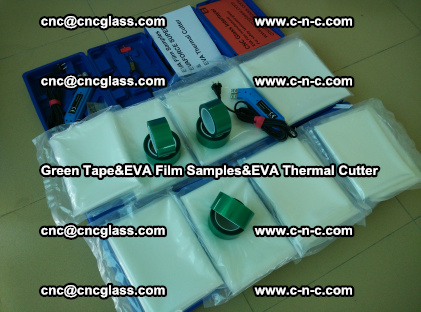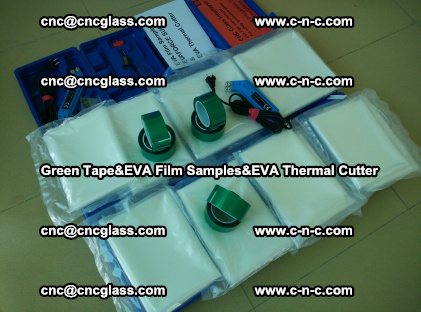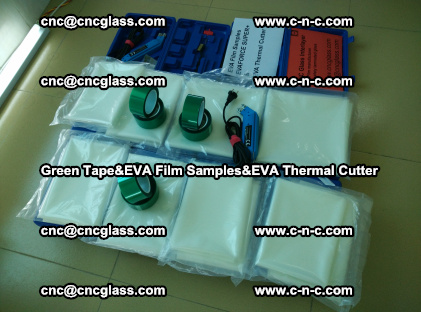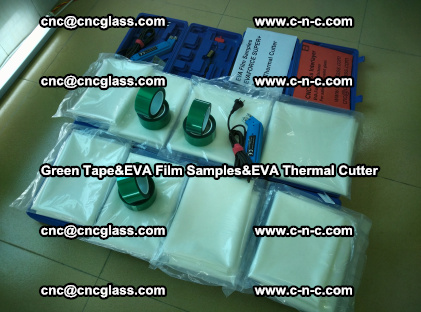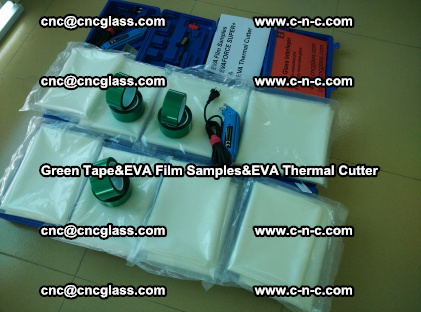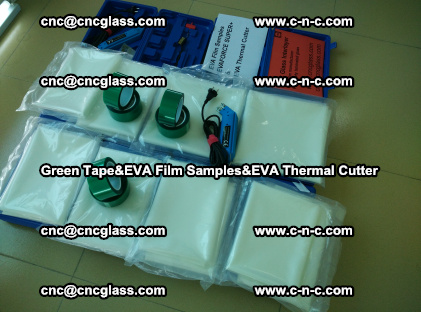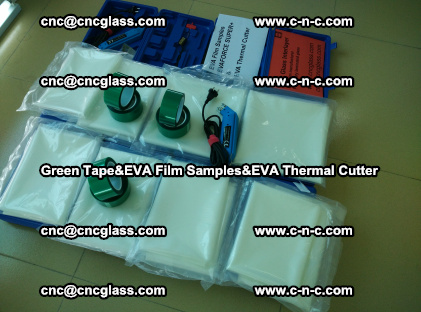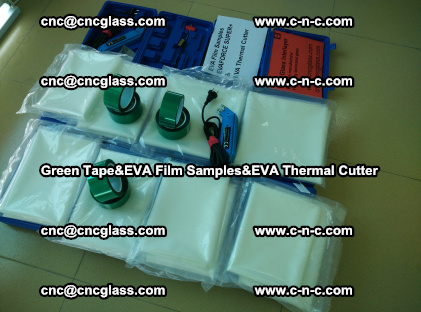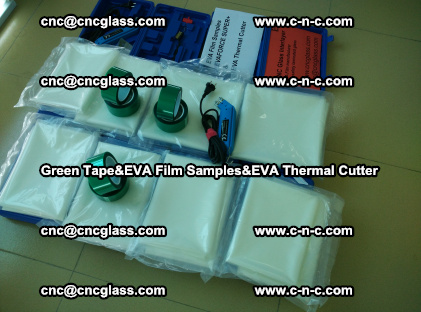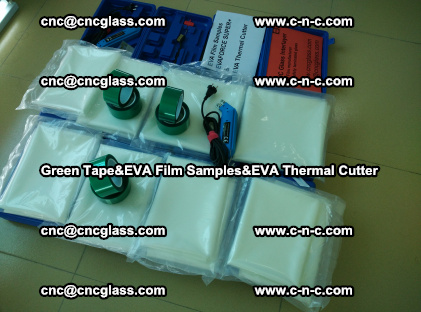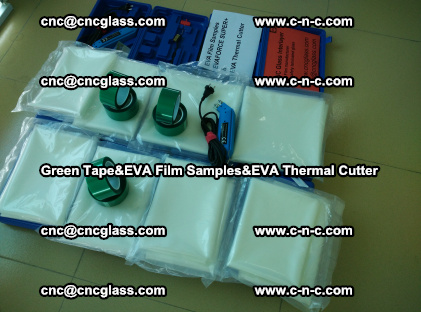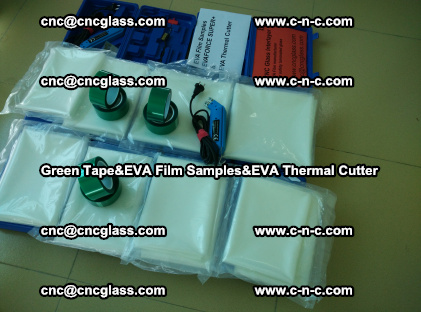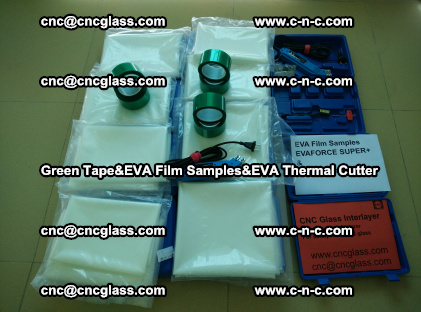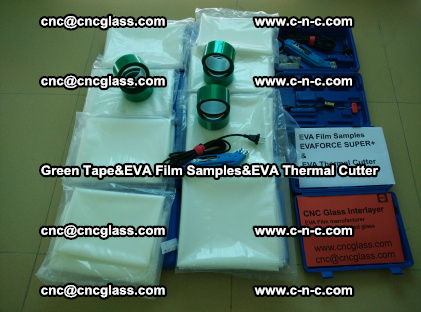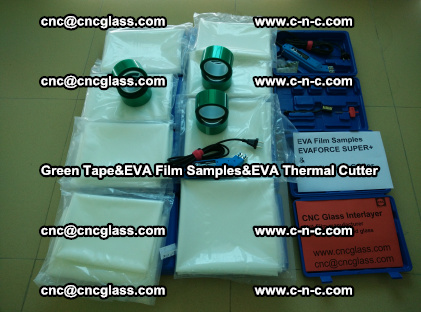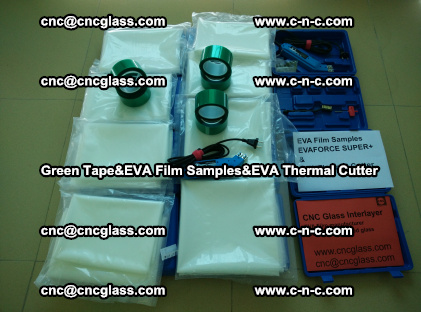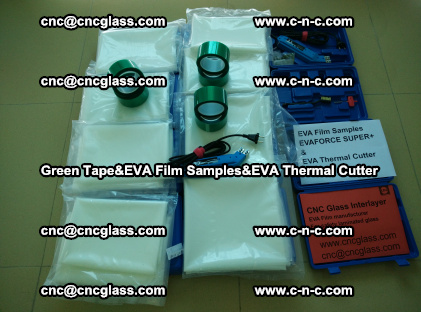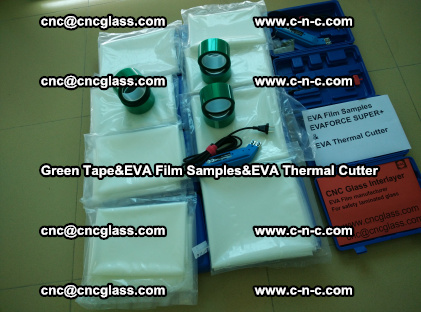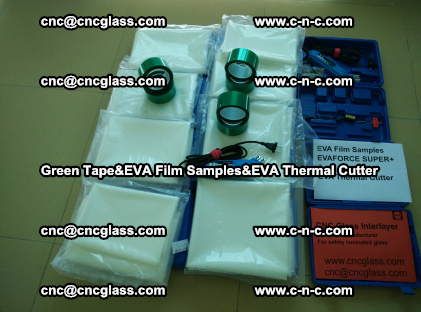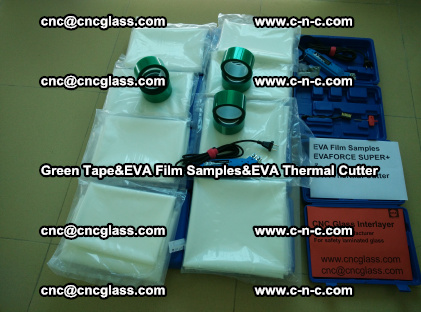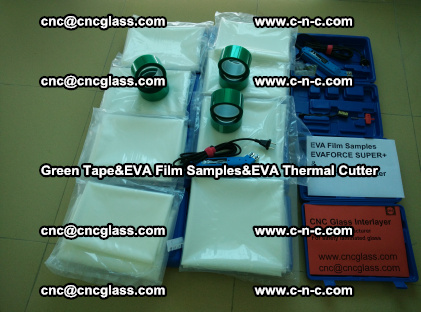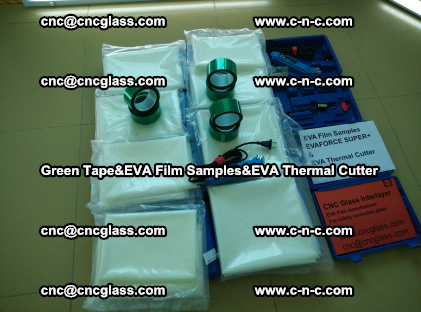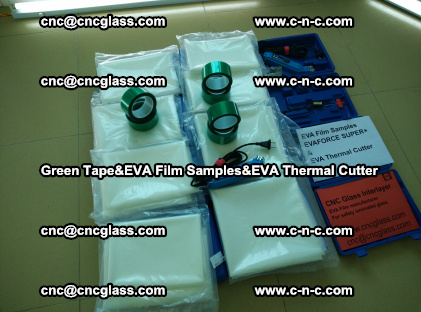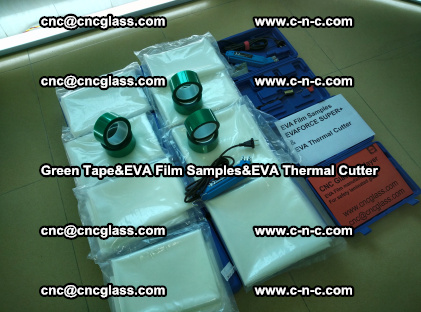Author: Mail: [email protected]
PACKING AND LOADING OF EVAFORCE INTERLAYER FILM FOR SAFETY GLAZING
PVB SGP EVA THERMAL CUTTER for laminated glass safety glazing
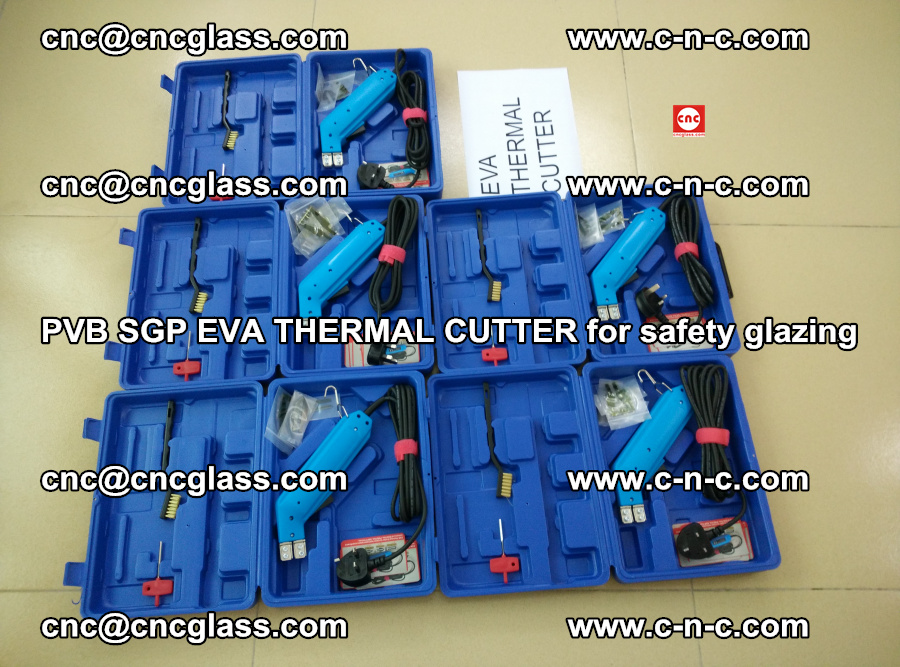 7 Tips of Manufacturing Safety Glass with EVA Hot-melt Dry Adhesive Film
7 Tips of Manufacturing Safety Glass with EVA Hot-melt Dry Adhesive Film
By Peter Lin
Attentions for Making Laminated Glass with Colored EVA Film
Because of the color tolerance of EVA Film, when you making high quantity of colored laminated glass with colored EVA Film.
1-Carefully use different orders of colored EVA Film in one design, even you order from same EVA Film manufacturers, the color of the EVA Film may have color tolerance in different producing schedule.
If you use colored EVA Film of different orders in one design, make you sure you make small samples to compare the color uniformity.
2-When you make colored laminate glass in same design with the long time storage colored EVA Film, please make small samples to make sure the color of EVA Film is not changed among the storage.
Attentions when manufacturing laminating glass with EVA Film in rainy day
In rainy days, the humidity in the air is high.
And also, it’s easier for the surface of glasses and EVA Interlayer film to absorb the humidity.
The humidity in the surface of glasses and EVA Film will do harm to the adhesive of EVA Film, sometimes will cause bubbles.
So, when in rainy days, please pay attentions to the processing room, and double dry the surface of the glasses, and seal the EVA Film roll, when you are not using it.
And also you can prolong the low temperature period to dry the humidity away.
Attentions for Laminating EVA FILM With Decorative Interlayers
The differences between laminating EVA Film and Laminating PVB Film is that EVA film’s melt index is higher than PVB FILM, so glass laminating with EVA Film is more convenient to sand-witch some decorative films, like fabric or melt wet.
So many glass processing factories making decorative laminated glass sandwiched with all kinds of decorative inserts by EVA Film.
But there are some tips:
1-Every time, you adopt new decorative inserts interlayers, make sure you do some test to check if the inserts interlayer is friendly with EVA Film.
Maybe because of the printing ink or other dye materials, then decorative inserts have some chemical substances that can do harm to EVA Film.
2-Make sure the design of the decorative inserts dry already before laminating EVA Film.
3. Make sure you understand the how high temperature the decorative inserts can stand, the inserts should stand higher temperature than the EVA Film processing temperature.
Avoid Leaking of EVA Film inside Laminated Glass
The principle of making laminated glass is heating and vacuuming (pressing the glass to squeeze out the air).
And when heating ,the EVA Film melt into liquid and it’s melt index is higher than PVB Film. So when vacuuming (the pre-laminated glass get the pressure), the EVA Film near the edges of the pre-laminated glass will be leaking out.
And if the EVA Film is leaking out too much, the edges of the laminated glass may have bubbles around.
There are two ways to solve this problem:
(1) -Use the green tape to seal the pre-laminated glass, but make sure you make some small holes on the green tape to help vacuuming.
(2)-If you make small laminated glass, you can put some wood bars surrounding the pre laminated glass. The surrounding woods should be as high as the pre-laminated glass. Which can make sure that the pressure is even on the pre-laminated glass.
Cooling the Laminated Glass after Heating
If you get the laminated glass out of the silicone vacuum bag too early, the temperature of the laminated glass is still higher than the room temperature, if the balance is too much, the laminated glass may get burst, or there may be some bubbles around the edges.
In summer, if the room temperature is high, you can use fan to help cooling the glass.
But anyway, don’t stop vacuuming until the temperature of laminated glass is close to the room temperature.
Attentions for Edging Laminated Glass With EVA Film
1-Don’t edge the laminated glass until the laminated glass with EVA Film has been cooled for 24 hours. Because if you edging too early may cause the delamination in the edges of EVA laminated glass.
2-It’s better if you can edging the glasses before laminating with EVA Film, then you don’t have to edge the EVA laminated glass after heating.
3- If you laminated with some decorative interlayer inside the glass, and the decorative interlayer is easy to absorb water, then you should edging the glasses before laminating with EVA Film. Because if you have to edge after heating, the decorative interlayer may absorb water and lead to the delamination.
4-Please use the gentle grinding wheel to edge the EVA laminated glass
First in first out:RULE OF STORAGE OF EVA FILM
When we talking about storage of EVA Film.
Most EVA Film manufacturers will guarantee that self life of EVA Film for laminated glass is 6 months to 1 years.
So when store the EVA Film, please remember “first in first out” rule.
Make sure you use the EVA film you order early.
And also make sure you use the EVA Film during the self life period.
Because after the EVA FILM expired, maybe the adhesive strength, impact strength or transparency will be decline.
EVA FILM INTERLAYER samples for laminated safety glass glazing
EVA FILM INTERLAYER samples for laminated safety glass glazing
PET GREEN TAPE, EVAFORCE FILM SAMPLES, EVA THERMAL CUTTER
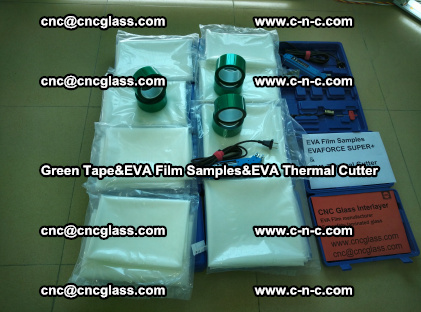
Comparing Tensile Strength of CNC Glass Interlayer EVA Film: EVAFORCE EXTREME
Written by Peter Lin
Tensile Strength Test of Super Clear EVA Film Samples of an international famous supplier
1-Tester: Peter Lin
2-Test Time: May, 26, 2014.
3-EVA Film Samples: Super Clear EVA Film Samples of an international famous supplier
4-Speed: 300mm/min
5-Laminating Time and Temperature: 85°-15′130°-40′
No. Max
(N) Tensile Strength
(MPa) Elongation
(%) Young’s modulus
(MPa)
1 78.934 18.794 633.768 1.337
2 62.488 15.622 664.459 1.060
3 69.637 16.580 639.186 1.207
4 55.525 13.543 584.743 0.991
5 64.980 15.471 610.706 1.124
6 65.921 16.078 610.949 1.177
7 62.449 14.193 607.018 1.001
8 61.194 14.570 622.803 1.014
9 55.506 13.538 592.248 0.983
Max. 78.934 18.794 664.459 1.337
Min. 55.506 13.538 584.743 0.983
Average 64.070 15.377 618.431 1.099
Tensile Strength Test of CNC Glass Interlayer EVA Film: EVAFORCE EXTREME
1-Tester: Peter Lin
2-Test Time: May, 26, 2014.
3-EVA Film Samples: EVAFORCE EXTREME of CNC Glass Interlayer
4-Speed: 300mm/min
5-Laminating Time and Temperature: 85°-15′130°-40′
No. Max
(N) Tensile Strength
(MPa) Elongation
(%) Young’s modulus
(MPa)
1 78.895 19.243 528.706 1.553
2 66.264 16.162 519.201 1.337
3 85.044 21.261 554.858 1.630
4 71.030 17.324 534.723 1.371
5 68.706 16.757 533.400 1.324
6 66.205 16.148 482.024 1.464
7 76.561 18.673 543.838 1.457
8 68.382 16.281 484.427 1.471
9 89.015 21.711 565.189 1.642
Max. 89.015 21.711 565.189 1.642
Min. 66.205 16.148 482.024 1.324
Average 74.456 18.173 527.374 1.472
Conclusion:
EVAFORCE EXTREME of CNC Glass Interlayer performs better tensile strength and Young’s modulus than the international famous supplier’s Super Clear EVA Film samples.
EVAFORCE EXTREME super clear EVA interlayer film is the first world-class level .interlayer for safety laminated glass.
EVA FILM
EVAFORCE® EXTREME
*Super Clear
*For Architectural Safety Laminated Glass
*Less Overflow When Heating
*Strengthened Mechanical Properties
*Recommended For Extreme Environments
*Best Choice For Curved Glass Laminating
*Applied Both Indoor And Outdoor
*Replacing PVB Film
EVA THERMAL CUTTER to clean EVA PVB SGP remains of laminated glass edges
EVA THERMAL CUTTER to clean EVA PVB SGP remains of laminated glass edges

